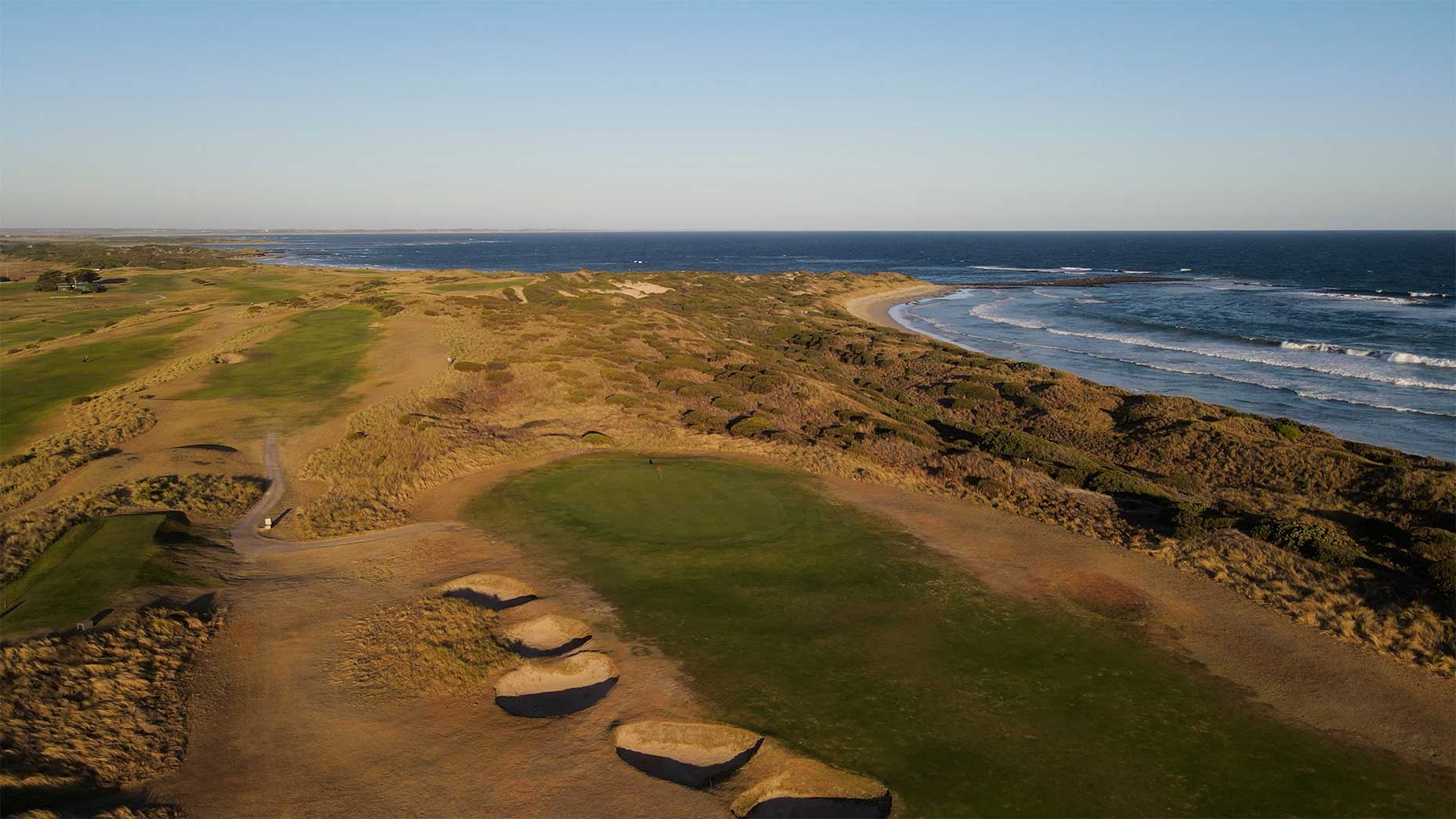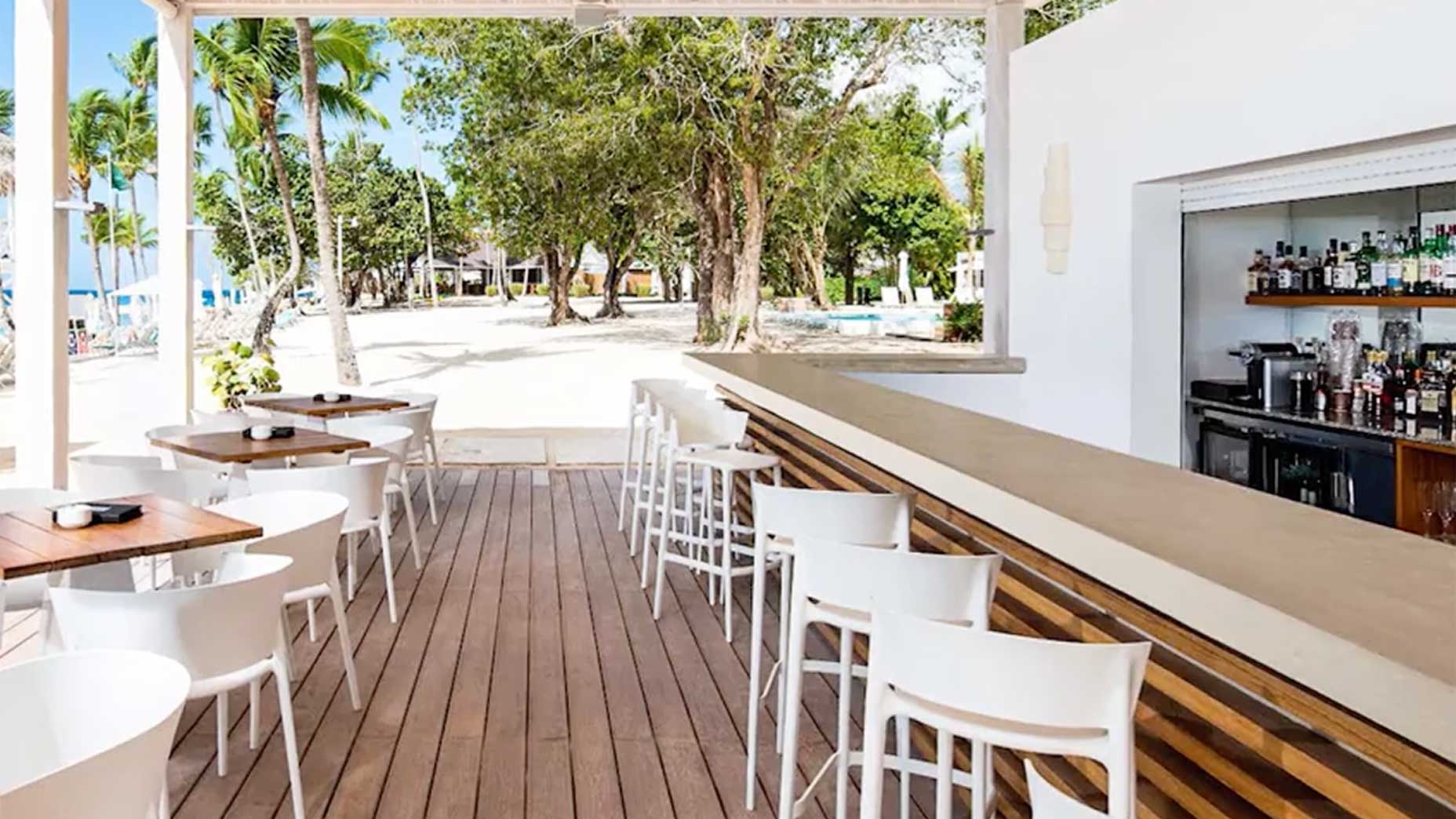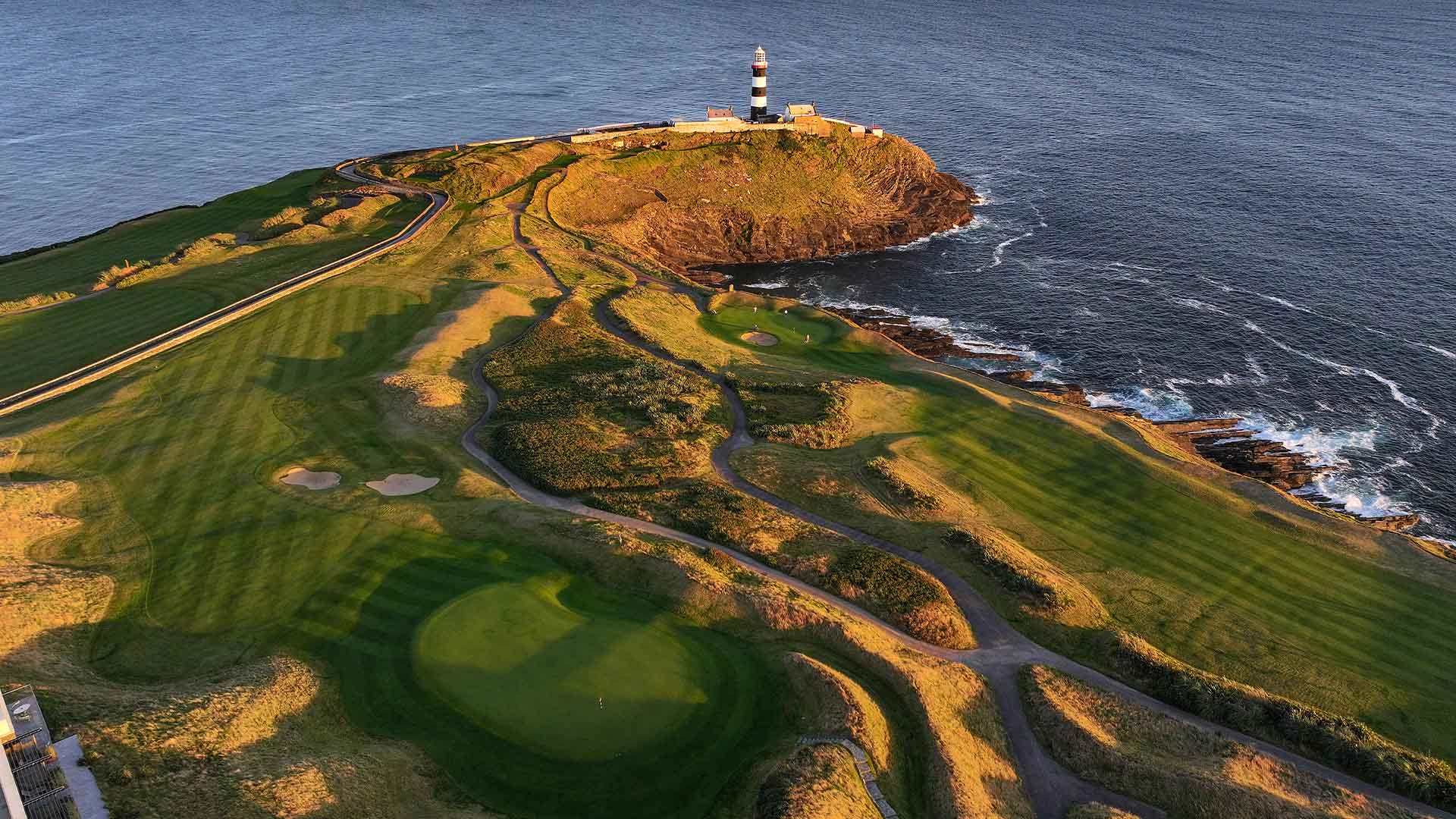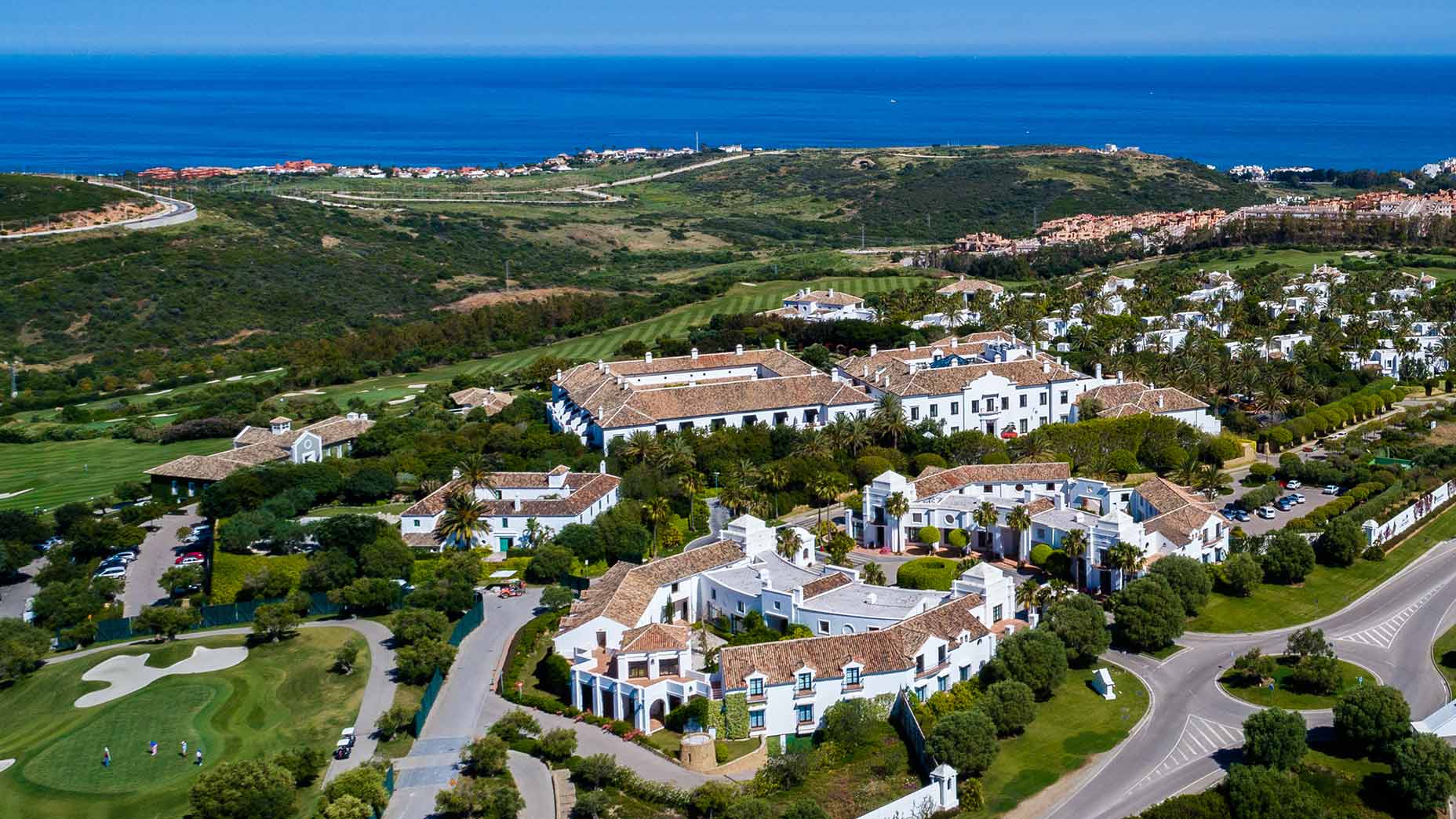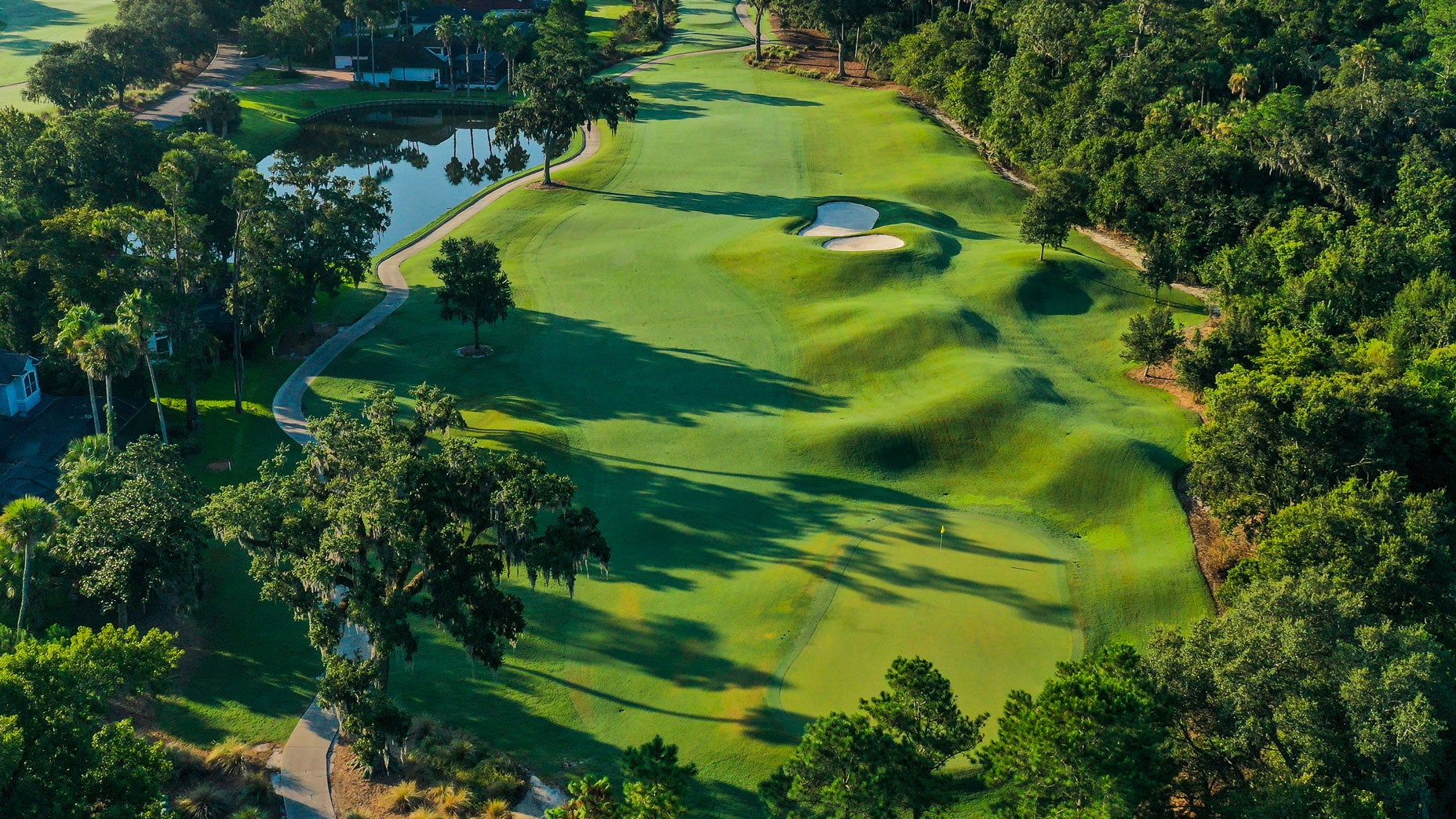GOLF’s 2017-18 ranking of the Top 100 Courses in the U.S.

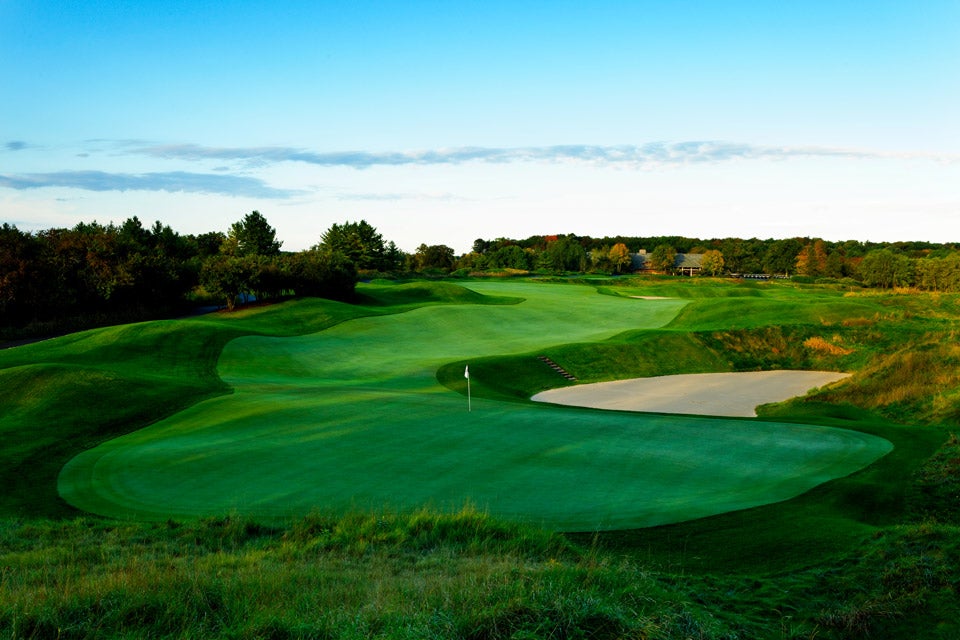
Kohler, Wisc., Pete Dye, 1988
Pete Dye’s typically penal hard edges along water hazards, ligament-snapping rough and nasty, steep, grass-faced bunkers are angst-inducing, but memorable holes abound, such as the remarkable short par-4 9th, with three legitimate options off the tee and the handsome, if brutal closing stretch of 16-18 that incorporates a twisting arm of the Sheboygan River.
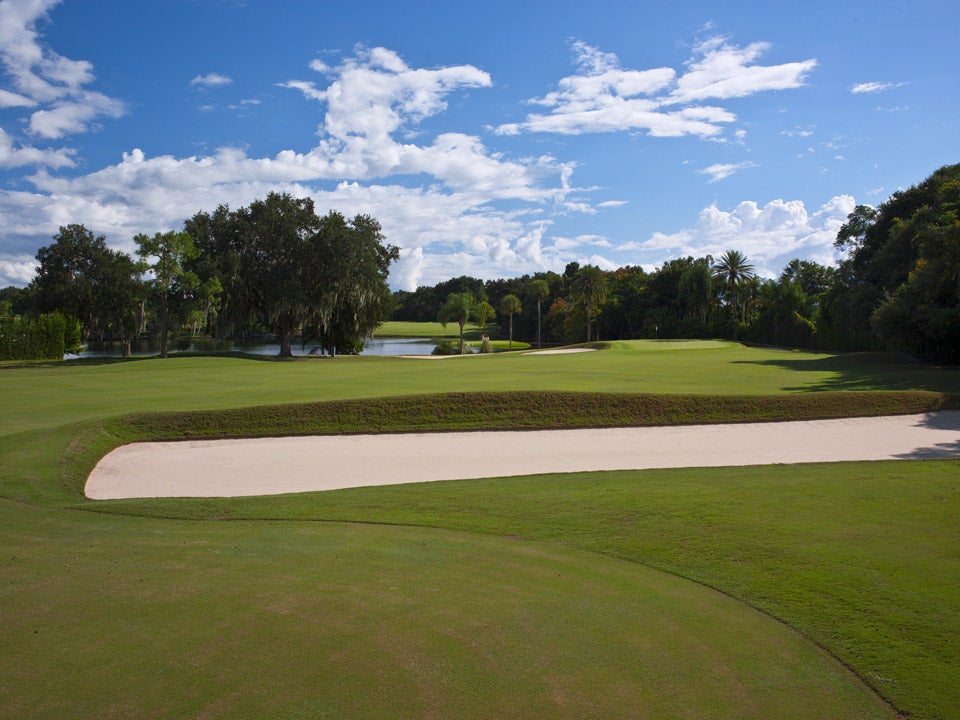
Lake Wales, Fla., Seth Raynor, 1916
This veritable museum piece of early Seth Raynor design is set into improbably rolling terrain in central Florida. There are likely 5,000 tougher courses in the U.S., fewer than five of them, however, enjoy Mountain Lake’s charm, grace and timelessness.
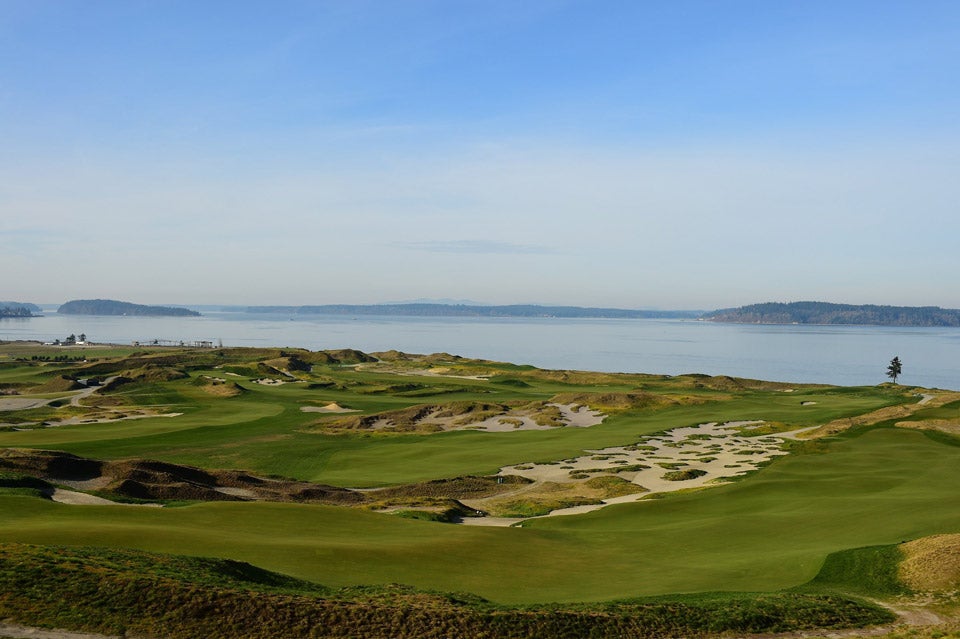
University Place, Wash., Robert Trent Jones II, 2007
This 7,500-yard, walking-only, Robert Trent Jones II design unfolds atop an old gravel mine at the southeast tip of Puget Sound, 45 minutes south of Seattle. The eye candy commences at the first hole, a par-4 that shares a fairway with the 18th a la St. Andrews, amid 50-foot dunes.
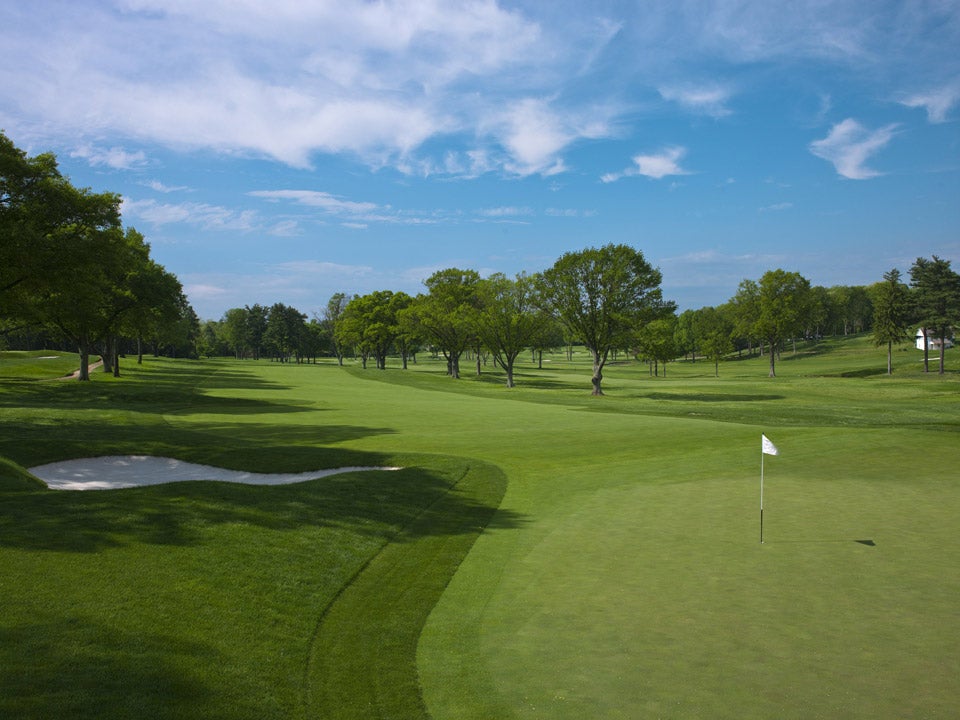
Newtown Square, Pa., Donald Ross, 1928
Twenty years after Donald Ross designed Aronimink, he visited the layout and declared, “I intended to make this course my masterpiece, but not until today did I realize I built better than I knew.” Set into a rolling, wooded tract in suburban Philadelphia, Aronimink rose to prominence after hosting the 1962 PGA Championship.
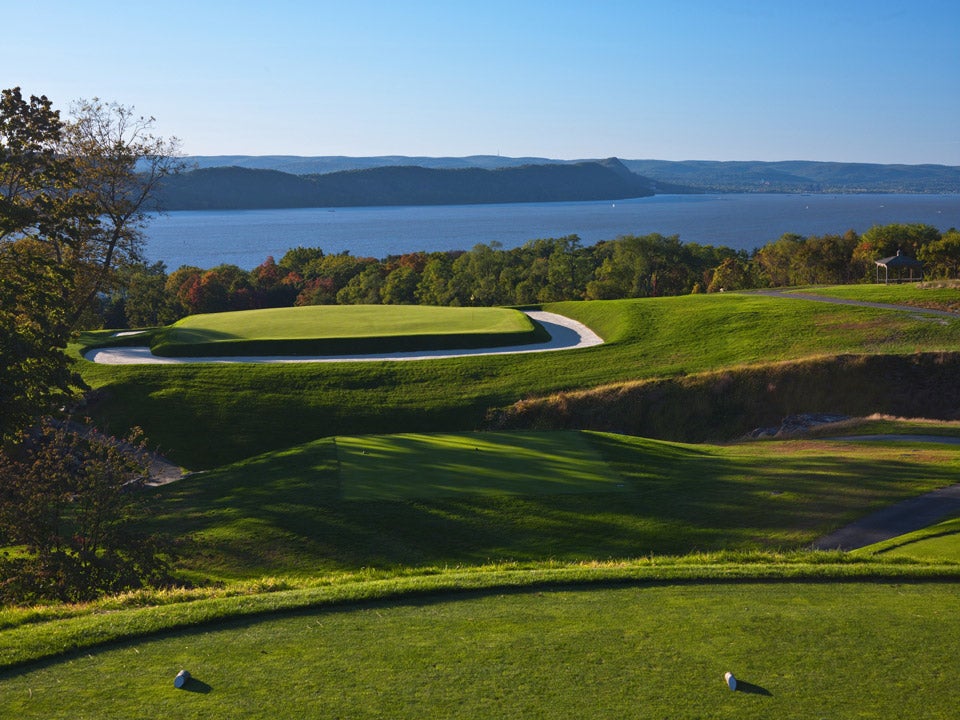
Briarcliff Manor, N.Y.,Macdonald-Raynor/A.W. Tillinghast, 1911/1928
Home to one of the great clubhouses in golf (a former Vanderbilt mansion), as well as to one of the game’s most memorable logos (the Headless Horseman), Sleepy Hollow also boasts a phenomenal 1911 C.B. Macdonald layout, complete with classic template holes, including a Redan, a Punchbowl and a Double Plateau.
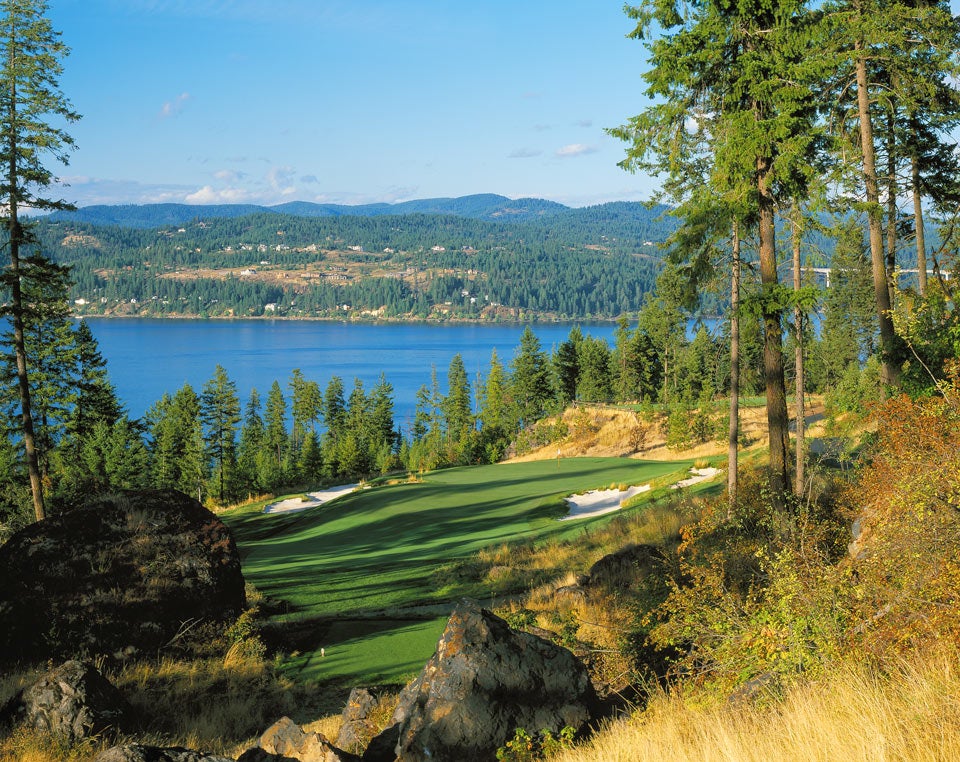
Harrison, Idaho, Tom Fazio, 2007
Turn Tom Fazio loose on a canvas that includes a beautifully treed valley, rocky bluffs that sprout 100-foot spires and dazzling vistas of Lake Coeur d’Alene and the results are typically stunning. Tattered-edge, small, shallow bunkers add to the distinctiveness.
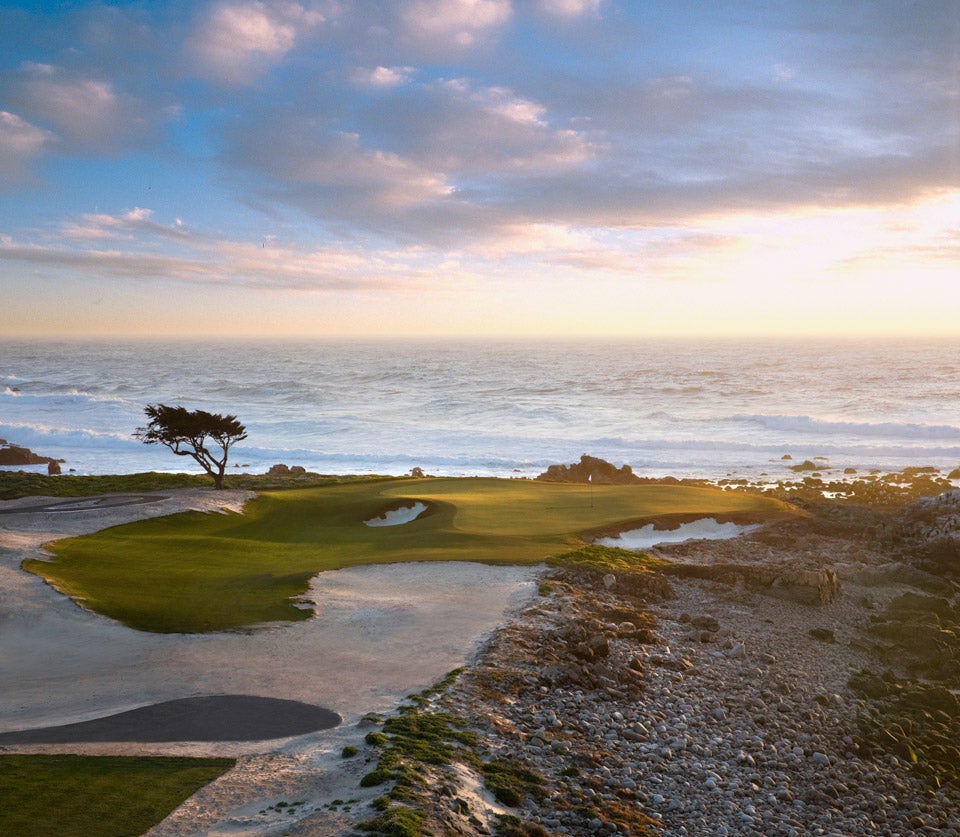
Pebble Beach, Calif., Seth Raynor/T. Fazio/Jackson-Kahn, 1926/2016
Re-opened in 2016, the Dunes isn’t universally beloved, but those who admire the redo—which, among other changes, involved resizing and recontouring the greens, enhancing existing dunescapes and adding others—are enthusiastic enough to have pushed the course into the Top 100.
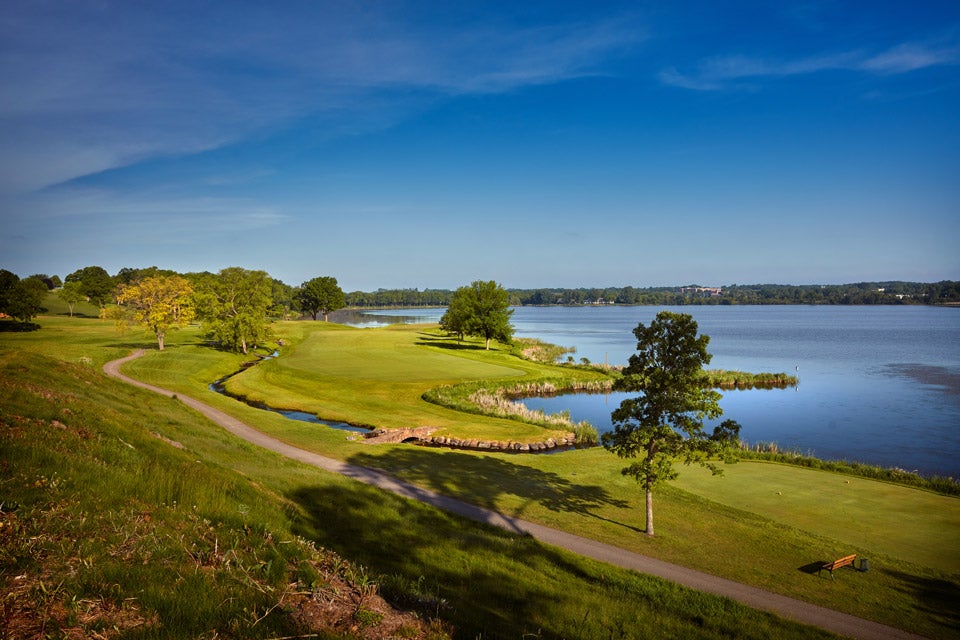
Chaska, Minn., Robert Trent Jones Sr./Rees Jones, 1962/1990
The 1970 U.S. Open version of Hazeltine that Dave Hill excoriated is mostly a distant memory, now that Rees Jones has twice altered his father’s original design. Host to the 1991 U.S. Open, won by Payne Stewart and to the 2002 and 2009 PGA Championships, Hazeltine was also home to the 2016 Ryder Cup.

Fort Worth, Tex., John Bredemus/Perry Maxwell, 1935/1940
Colonial enjoys exalted status as host for the 1941 U.S. Open, the first ever held in the south. Known as “Hogan’s Alley,” as Ben Hogan won here five times, this well-treed, 1936 John Bredemus design also witnessed Annika Sorenstam’s appearance against the men in 2003.
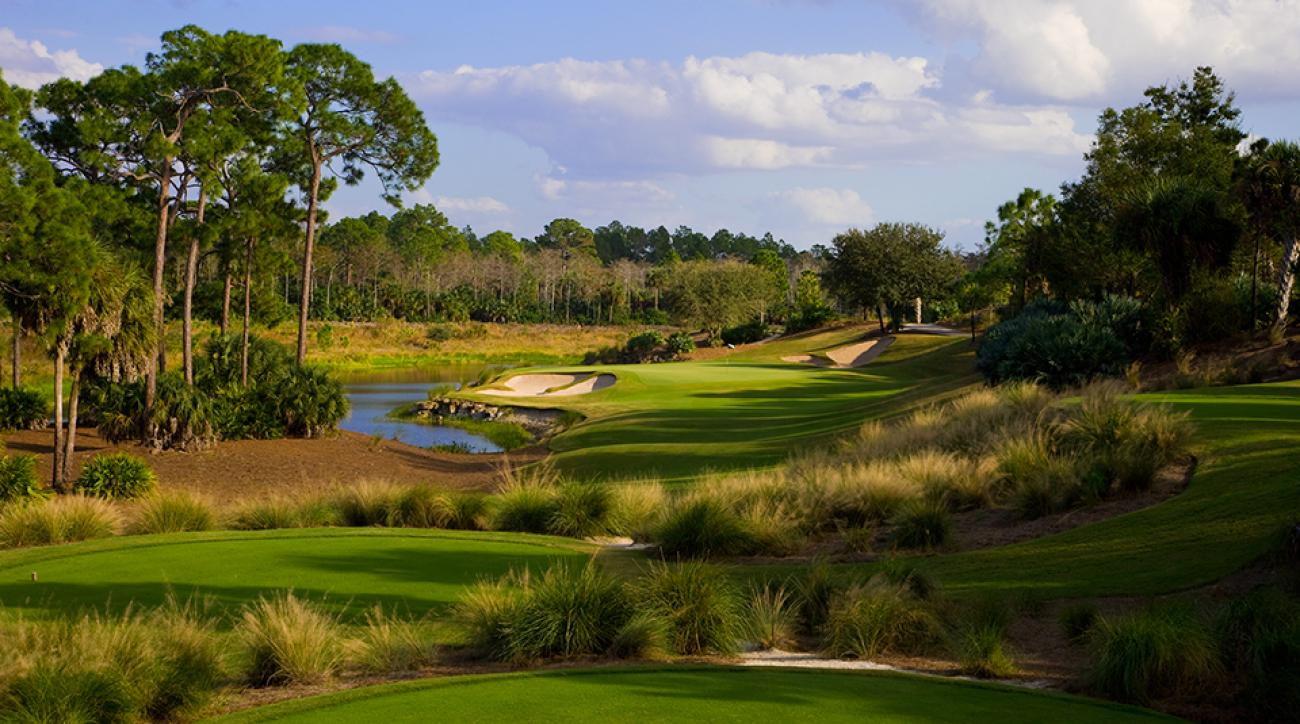
Naples, Fla., Michael Hurdzan/Dana Fry, 2001
Among the most impressive architectural achievements of the past 20 years is this 2001 Michael Hurdzan/Dana Fry design in southwest Florida, where a flat tract was transformed with astonishing skill.
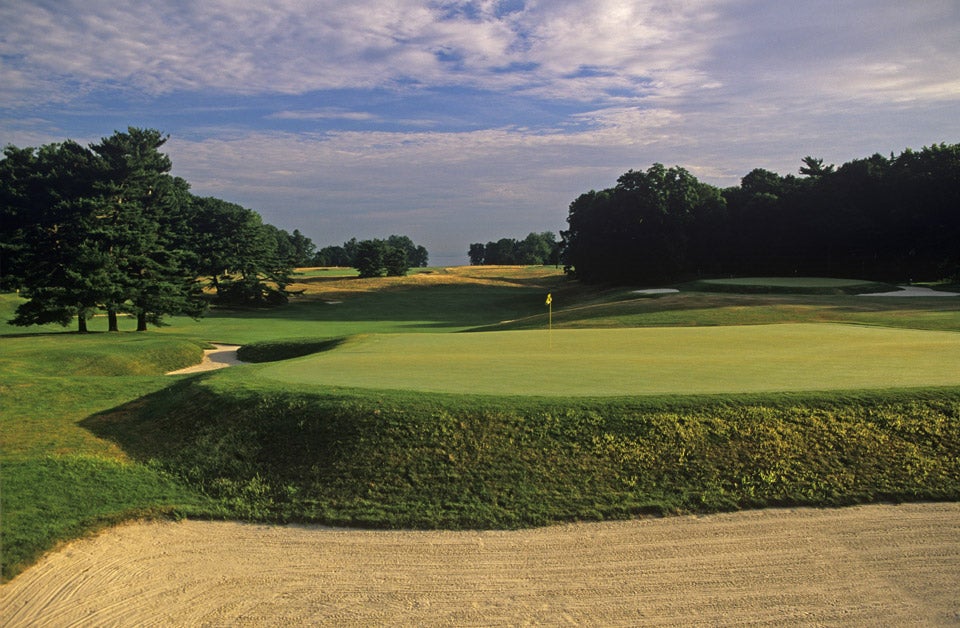
Locust Valley, N.Y., C.B. Macdonald/Seth Raynor, 1923
This C.B. Macdonald/Seth Raynor collaboration is a layout that radiates enjoyment rather than frustration. Following a quiet opening quintet, the Creek explodes with the 465-yard, par-4 sixth, a stunning hole that starts with a panorama of Long Island Sound, then plunges downhill to a punchbowl green, one that is guarded by low mounds and by a gargantuan fronting bunker.
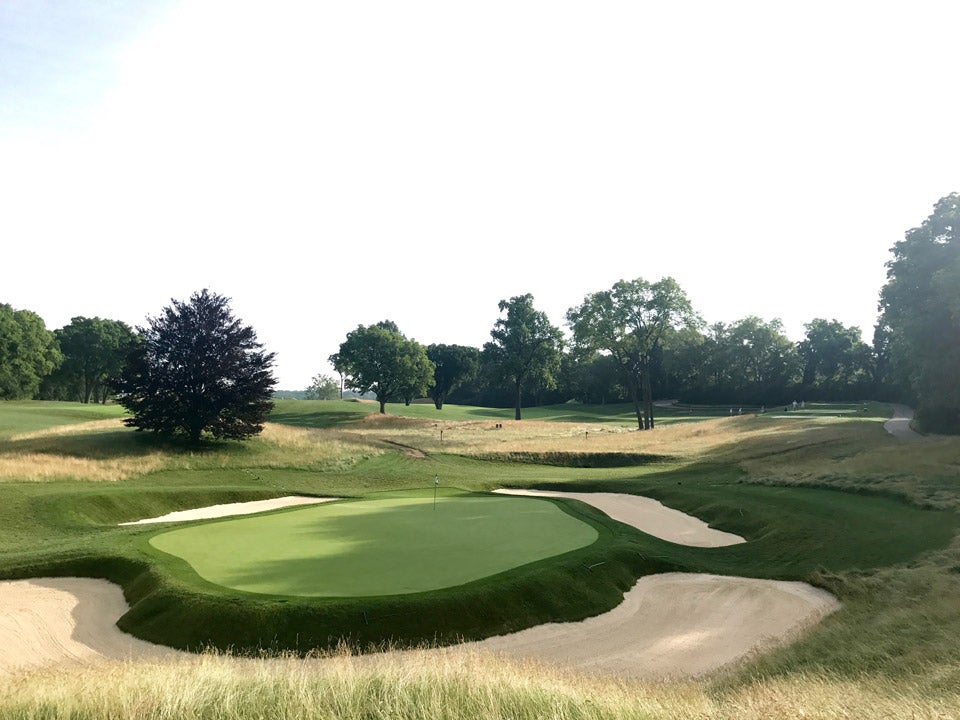
Dayton, Ohio, Alex 'Nipper' Campbell/Keith Foster, 1930/2016
Restoration specialist Keith Foster, together with club superintendent Jason Mahl, has restored the luster to Alec “Nipper” Campbell’s 1930 design by yanking out 2,000 trees, resodding and widening fairways, reconstructing bunkers and greens and improving drainage so the course now plays as firm and fast as Troon native Campbell had intended.
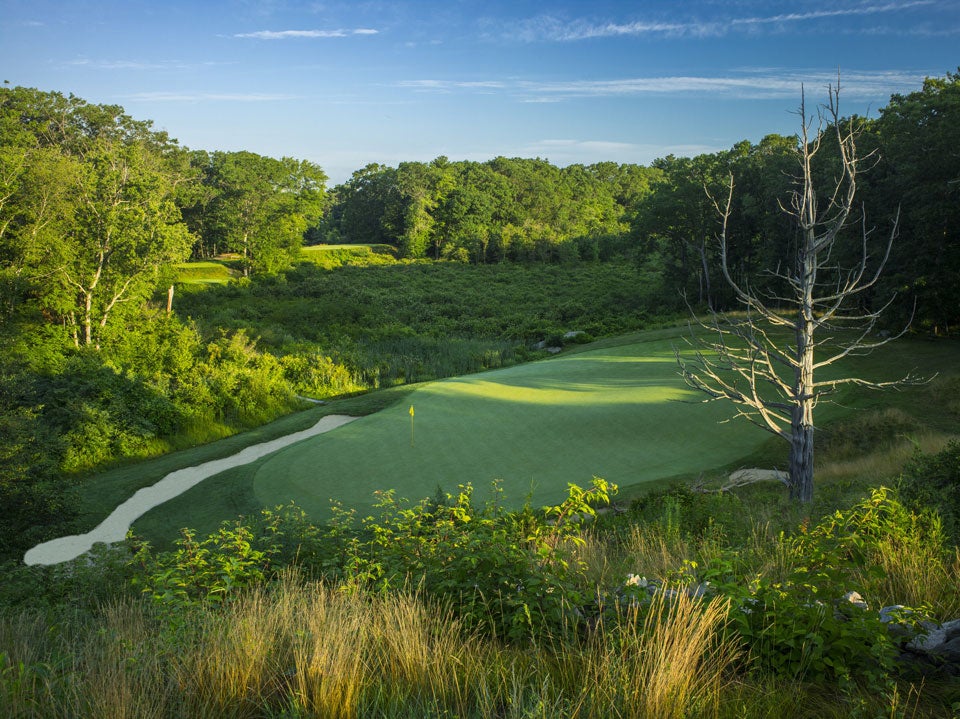
Hingham, Mass., Gil Hanse, 2005
Gil Hanse’s inspired 2005 design takes elements of Pine Valley and The Country Club and blends them in a potent stew. Rugged, rocky terrain, pockets of wetlands and shaggy, irregular bunkers comprise the visual appeal and the drama comes from a stretch of holes, 5 through 8, that traverse an old gravel quarry.
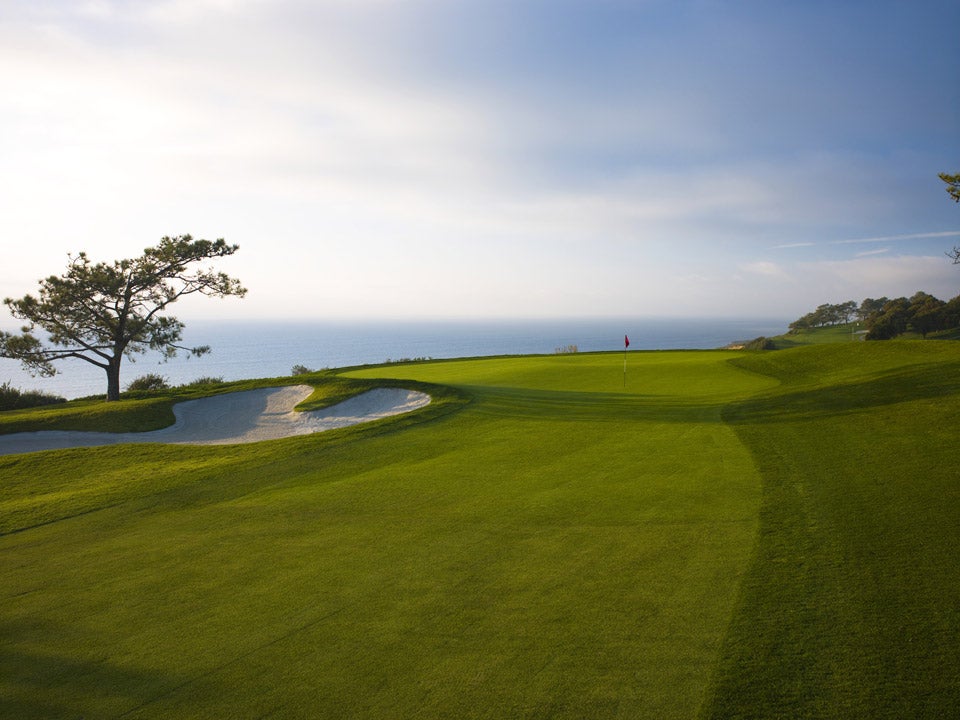
La Jolla, Calif., Billy Bell Jr./Rees Jones, 1957/2001
This clifftop, city-owned venue overlooking the Pacific Ocean in suburban San Diego stretches 7,600 yards, following a 2001 Rees Jones renovation that also moved greens closer to canyon edges.
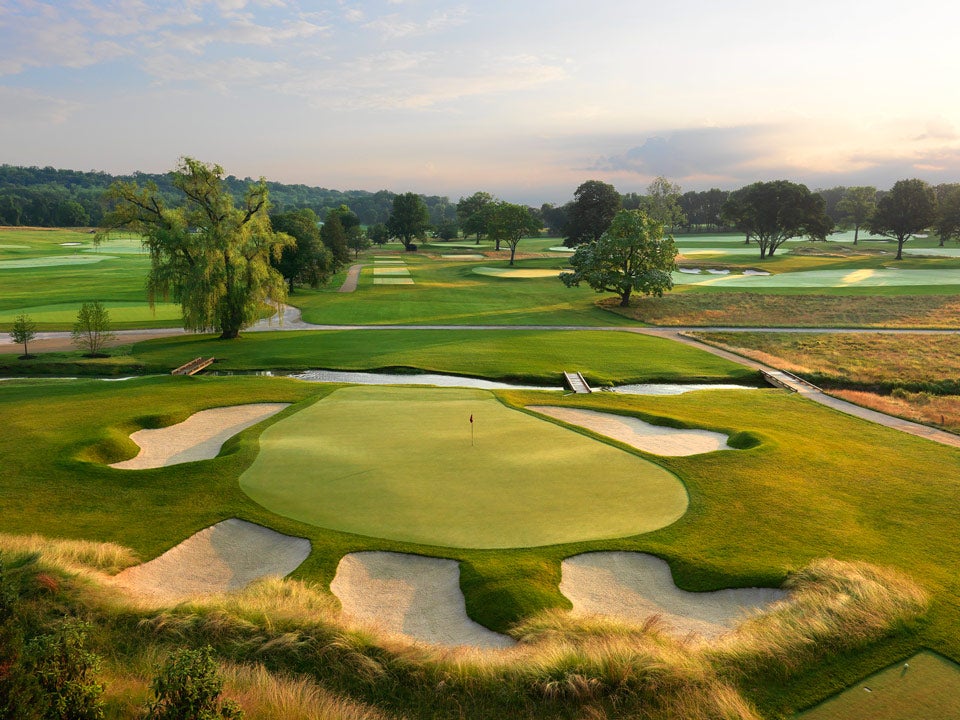
Flourtown, Pa., A.W. Tillinghast, 1922
Architect Keith Foster began restoring the layout to its glory days—and then some—in 2013. More than a thousand trees were removed, replaced by golden fescue grasses and newly expansive views of the rolling property. Angles were re-emphasized—green and fairway tilts, too. The 487-yard, par-4 18th, with its approach over Wissahickon Creek, remains one of the game’s great finishers.
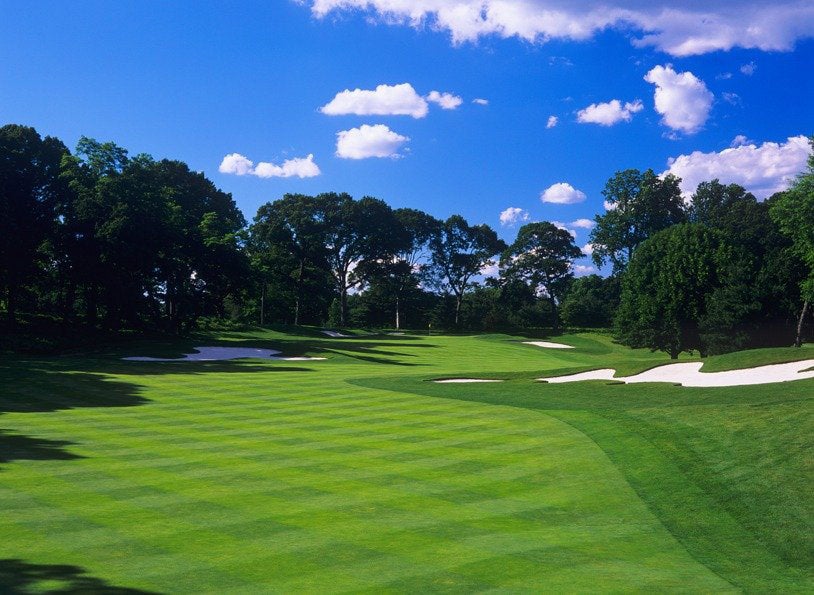
Paramus, N.J., A.W. Tillinghast, 1929
The classic argument at Ridgewood centers on which of the three A.W. Tillinghast-designed nines is best—the East, West or Center. Holes from each have been used at tournaments such as the 1935 Ryder Cup, the 1990 U.S. Senior Open, when Lee Trevino slipped by Jack Nicklaus and the 2001 Senior PGA, when Tom Watson closed the deal.
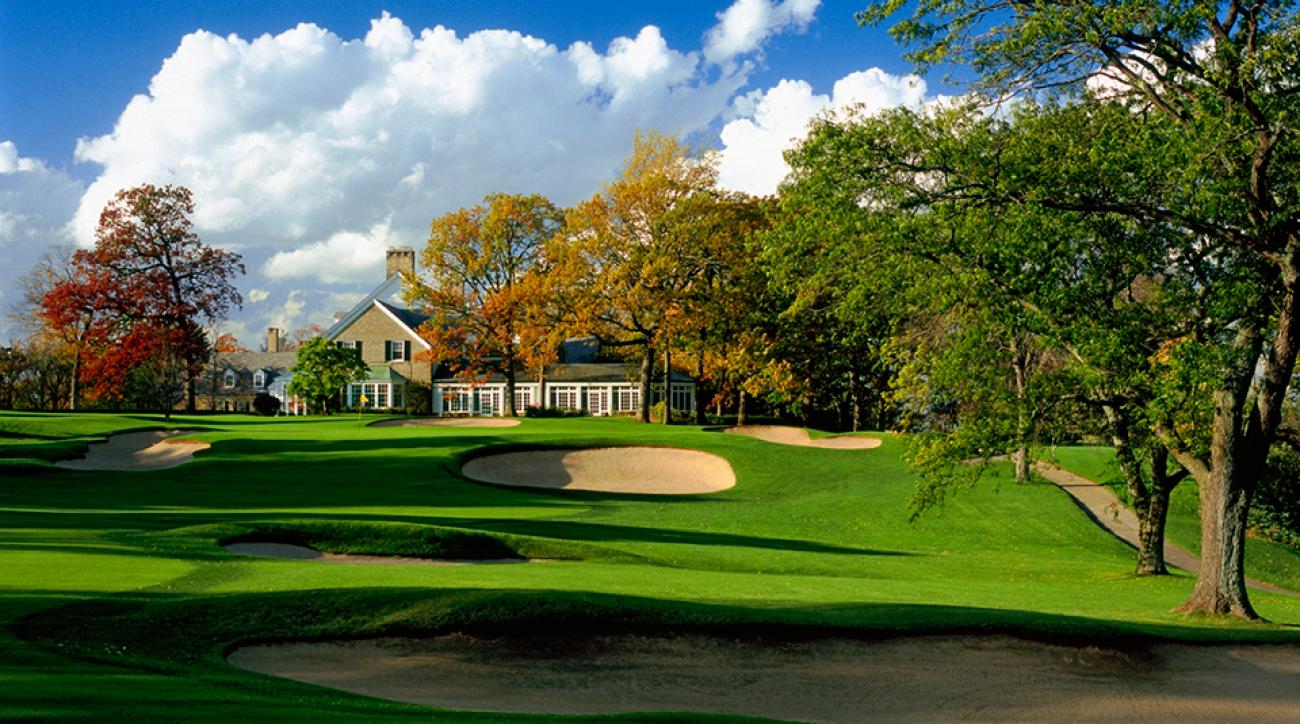
River Hills, Wisc., H.S. Colt/C.H. Alison, 1929
Venue for the 1969 Walker Cup Match, this 1929 Colt/Alison creation rolls out a wooded back nine that tumbles down to the Milwaukee River. Thoughtfully placed bunkers and a strong uphill closing hole are among the course’s defining traits.
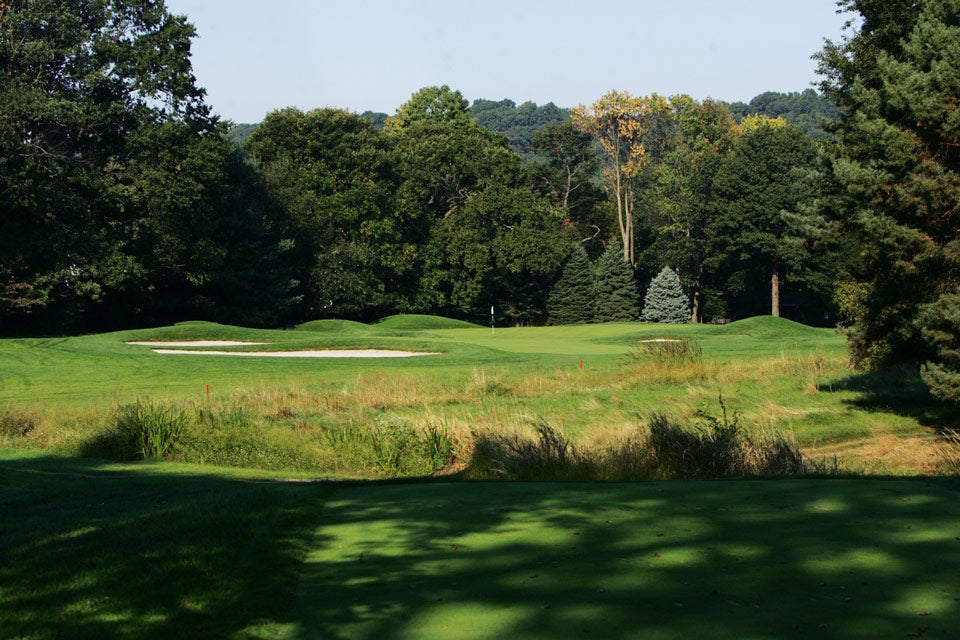
Springfield, N.J., A.W. Tillinghast, 1922
If its brawnier sibling, the Lower, is considered the premier tournament track, this mountainside A.W. Tillinghast-designed layout is much more fun, with its beguiling set of sloping greens and sidehill lies all parts of the puzzle to be solved.
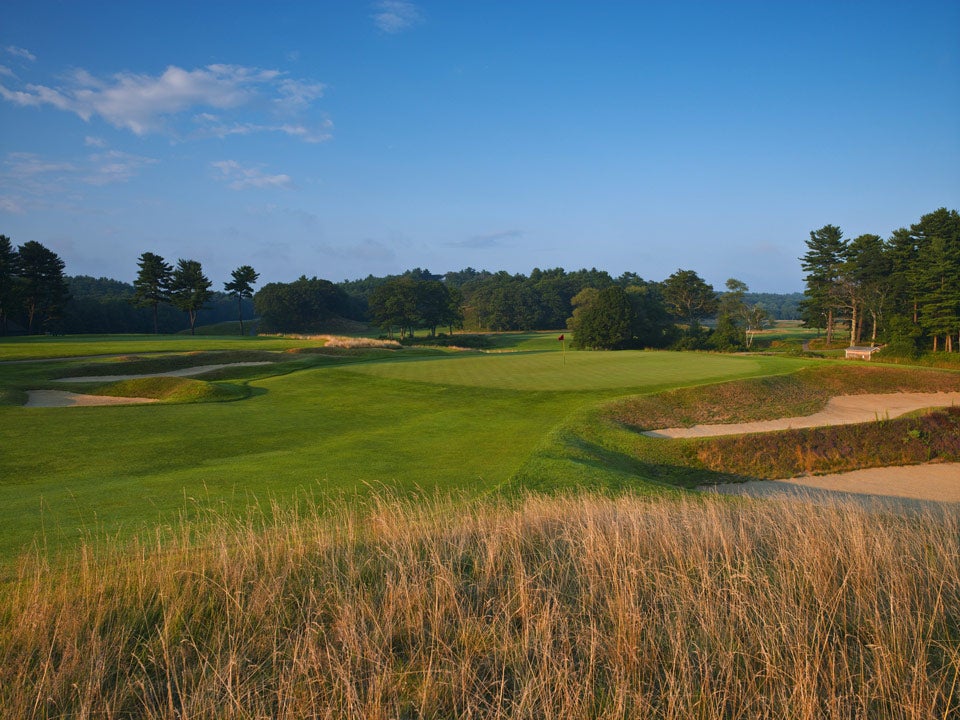
Manchester, Mass., Donald Ross, 1917
Charm, intimacy and fiendishly contoured greens characterize one of Donald Ross’ early masterworks, a 1917 creation that unfolds over wonderfully rumpled terrain near the sea northeast of Boston. Its miniscule back-tee yardage of 6,401 yards strikes fear into no one. Instead, the course owes its stature to its superior mix of memorable holes, bunker variety and green sophistication.
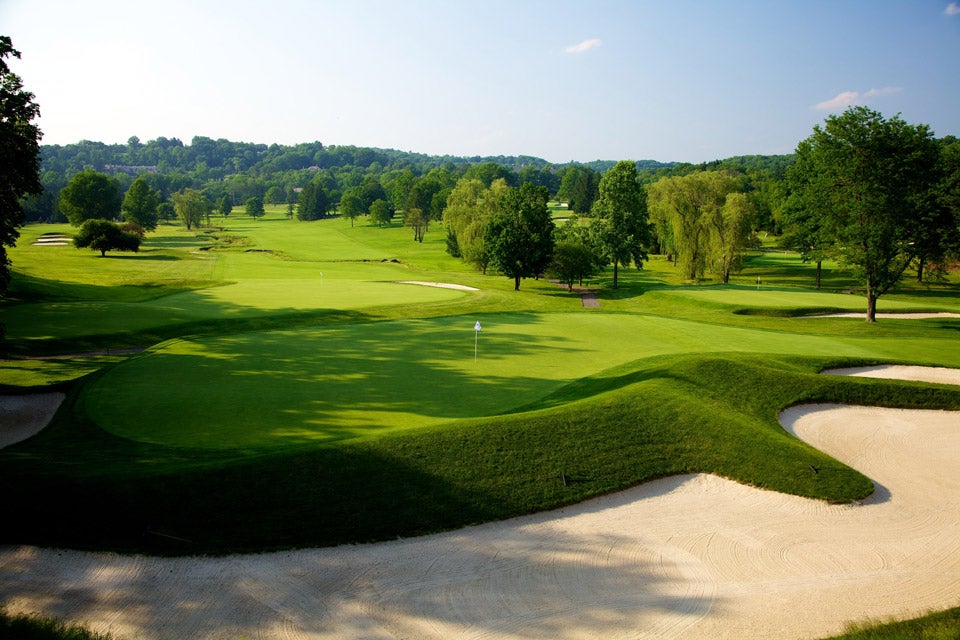
Pittsburgh, Pa., Seth Raynor, 1925
A 1925 Seth Raynor design, Fox Chapel has always lagged in the shadow of its neighbor, Oakmont. However, after hosting three Champions Tour majors, it stands on its own, with Tom Lehman calling it one of the three best courses the tour plays.
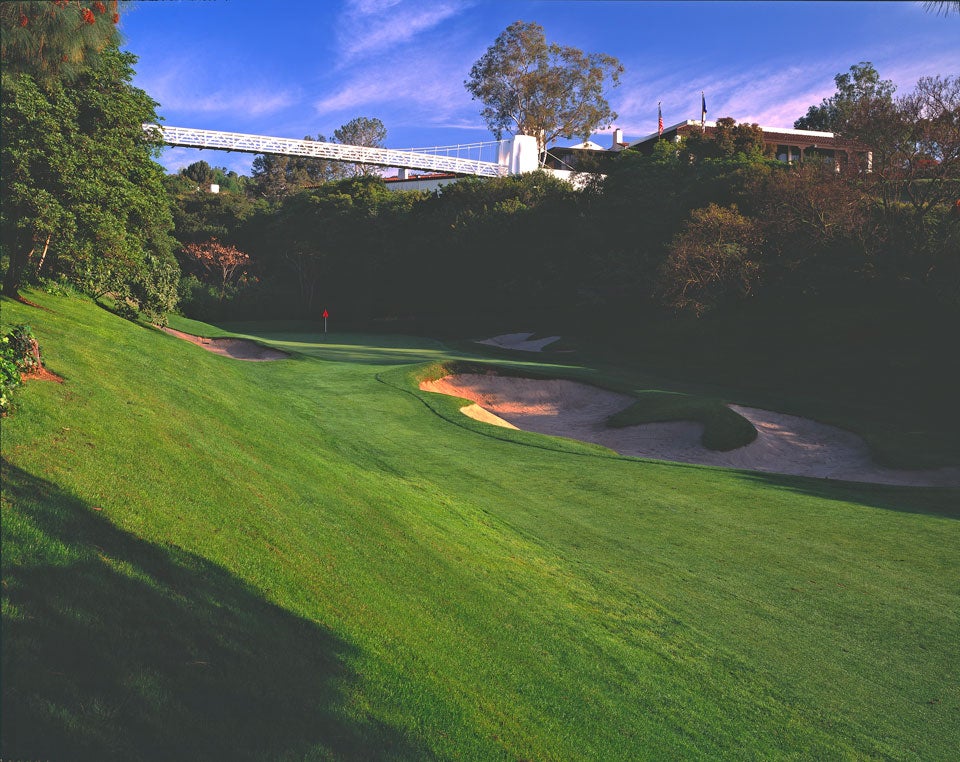
Los Angeles, Calif., George Thomas Jr./Billy Bell Sr., 1926
Draped across the hills above Sunset Boulevard, overlooking Westwood and Century City, Bel-Air features a brilliant 1926 routing by George Thomas that weaves in and out of canyons. The back nine bows with the fabulous 210-yard par-3 10th that demands a 150-yard carry across a steep canyon to a two-tier, well-bunkered green.
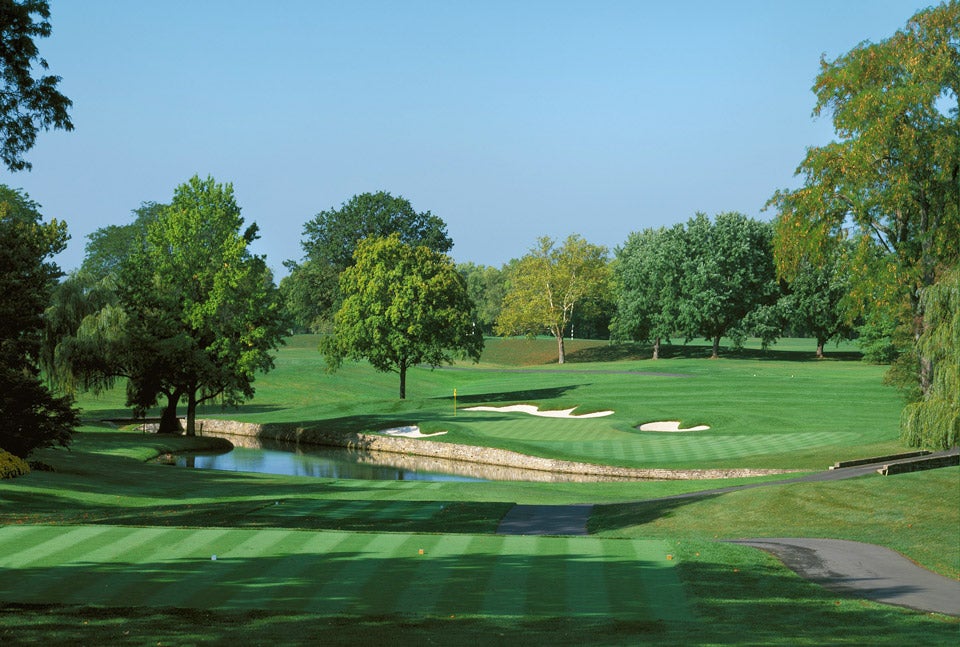
Columbus, Ohio, Donald Ross, 1916
Jack Nicklaus learned to play on this classic layout that Donald Ross crafted in 1916. Bobby Jones won the 1926 U.S. Open over its gently rolling parkland terrain and the club has also played host to the 1931 Ryder Cup and 1950 PGA Championship.
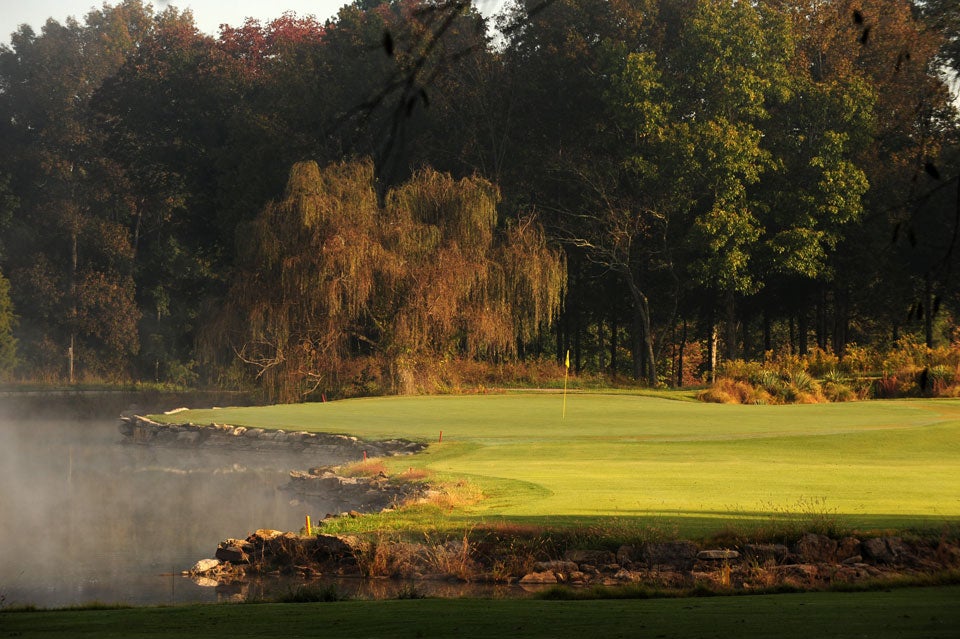
Ooltewah, Tenn., Pete Dye, 1983
One of Pete Dye’s less celebrated, yet greatest creations, this 1983 design in the northeast suburbs of Chattanooga is wooded, wetland-infused tract that might be the tightest 7,450 yards you’ll ever play. Tiger Woods captured the individual title at the 1996 NCAA Championship here, despite a final-round 80, which attests to the difficulty.
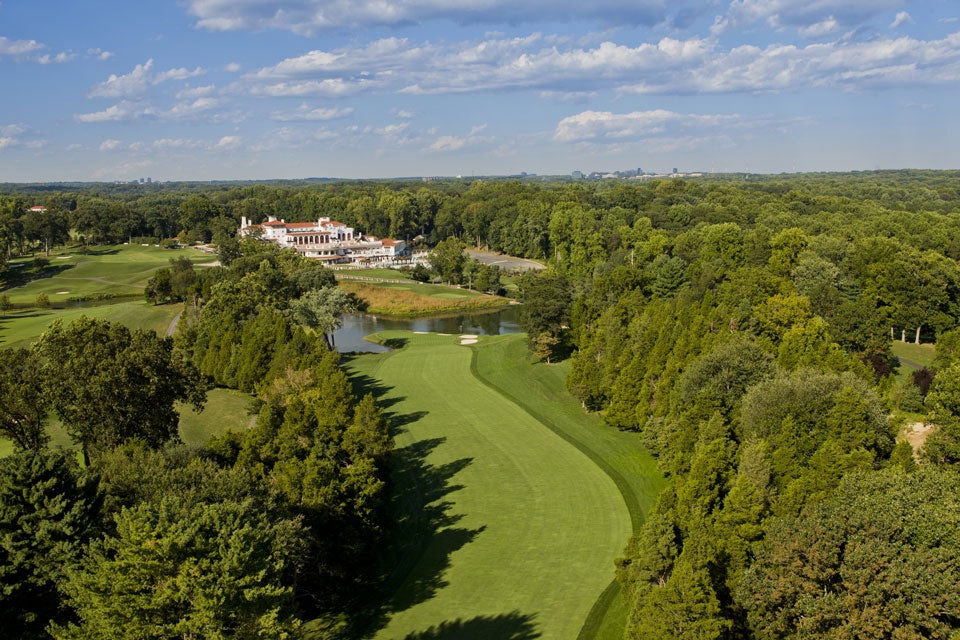
Bethesda, Md., D. Emmet/Robert Trent Jones Sr./Rees Jones, 1924/1962/2011
Not far from the nation’s capital, this Golden Age product has been revised and improved by Robert Trent Jones Sr. and later his son Rees. Tree-lined and hilly, it’s best known for its long, downhill, par-4 closer with water short, left and long, and for its three U.S. Opens, most famously Ken Venturi’s 1964 win
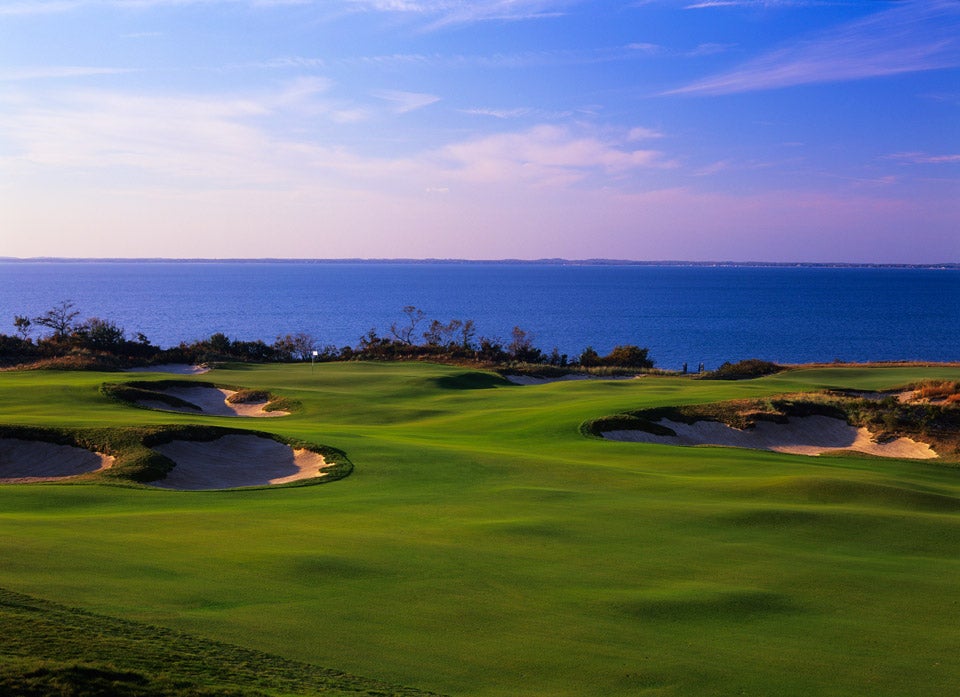
Southampton, N.Y., Jack Nicklaus/Tom Doak, 2006
Jack Nicklaus and Tom Doak meshed their design skills to create a seaside gem that abuts the National Golf Links of America overlooking the Great Peconic Bay.
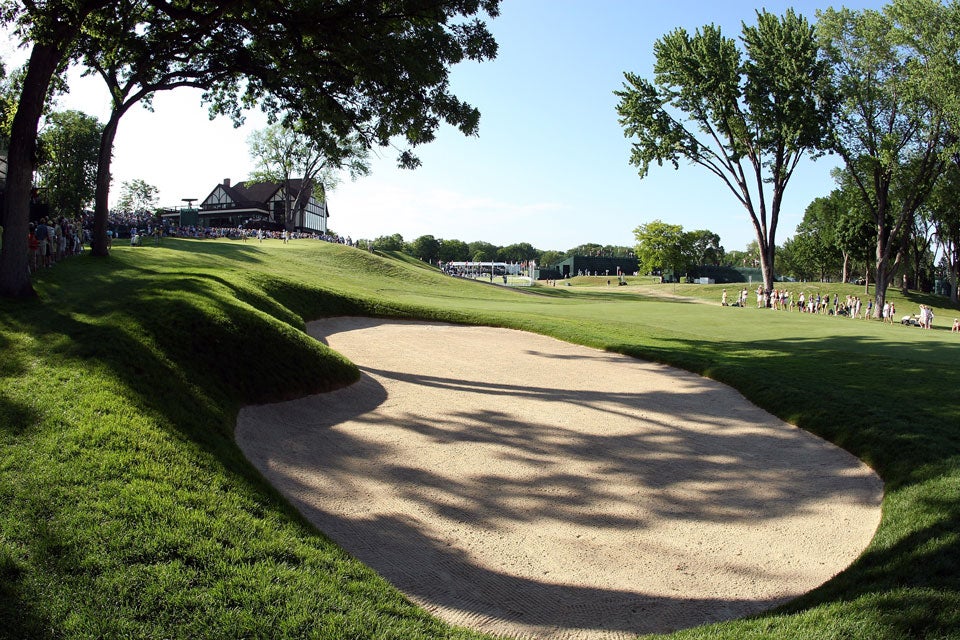
Edina, Minn., Willie Watson/Donald Ross, 1911/1921
Today’s Interlachen is a Donald Ross design from 1921 that retains its flavor, even after several tweaks. Situated in a leafy suburb of Minneapolis, Interlachen achieved early renown as venue for the 1930 U.S. Open, won by Bobby Jones in his Grand Slam year.
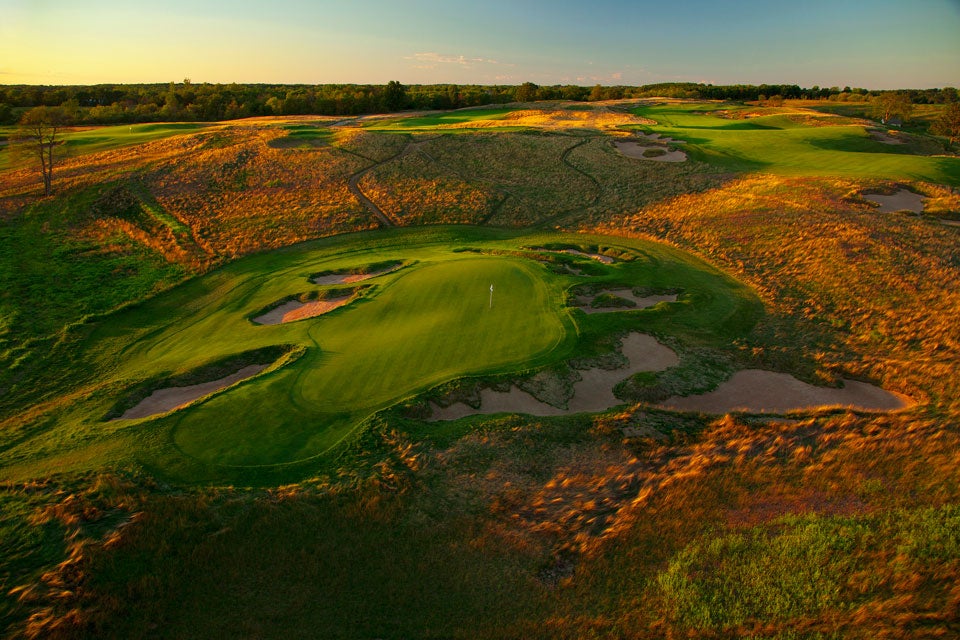
Erin, Wisc., Michael Hurdzan/Dana Fry/Ron Whitten, 2006
This “heartland” design by architects Michael Hurdzan, Dana Fry and Ron Whitten looks like a links, and at time plays like one. Its semi-blind drives, fast-running, fescue-framed fairways, typically strong breezes, heavily undulated terrain and absence of trees are all links-like traits. But it isn’t quite a links, as evidenced by All-American bentgrass greens that are more receptive to aerial assaults than run-ups.
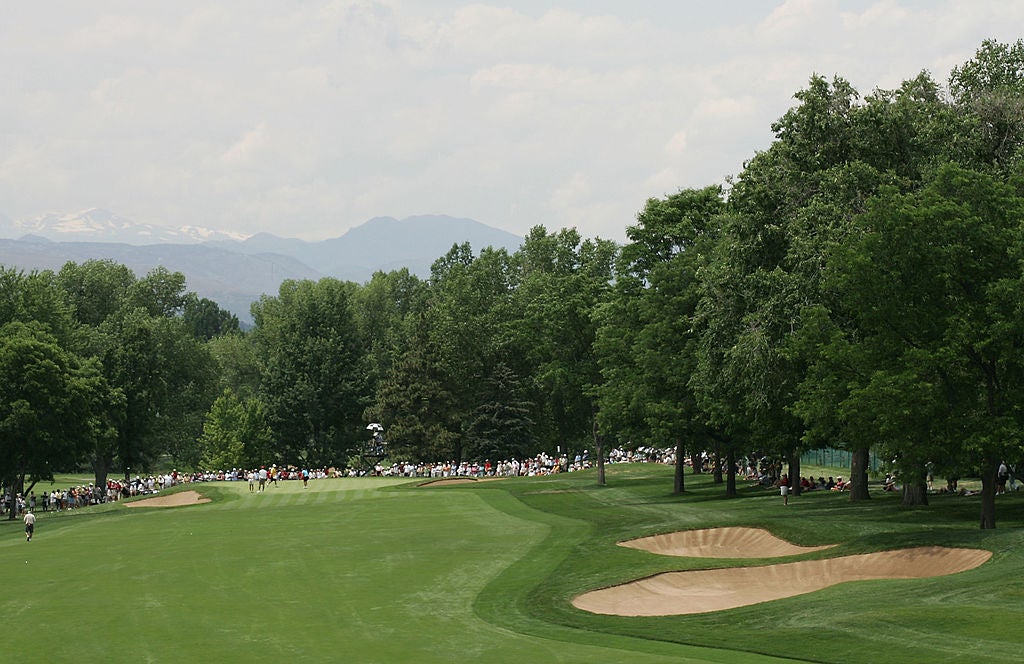
Cherry Hills, Colo., William Flynn, 1923
One of William Flynn’s only designs west of the Mississippi River has hosted three U.S. Opens, including one of the best ever, when Arnold Palmer charged from seven back to win in 1960. Amid Rocky Mountain backdrops, the main defense comes from the tough-to-read, sloping greens.
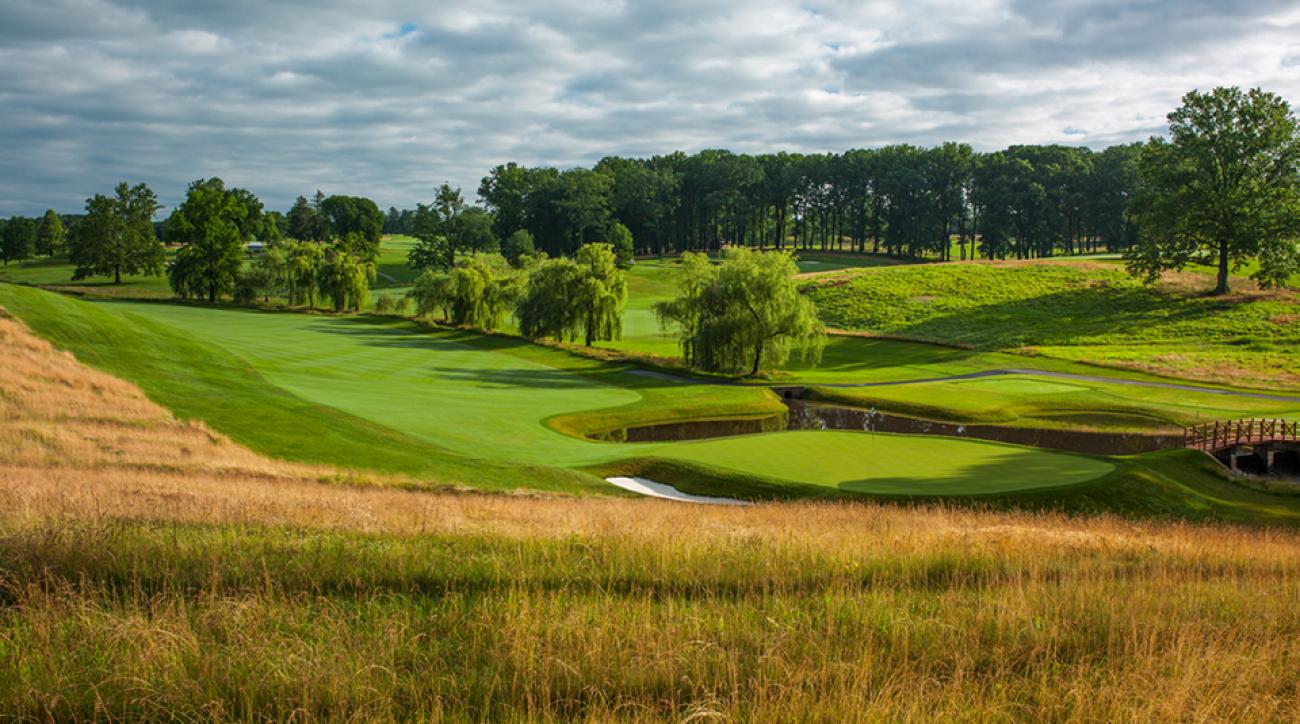
Lutherville, Md., A.W. Tillinghast, 1926
Loren Roberts captured the Senior Players Championship here in 2007, by skillfully handling the severely breaking greens and memorable A.W. Tillnghast-designed par-5s such as the “Barn Hole” 6th and the endless 14th, with its “Hell’s Half Acre” bunker complex.
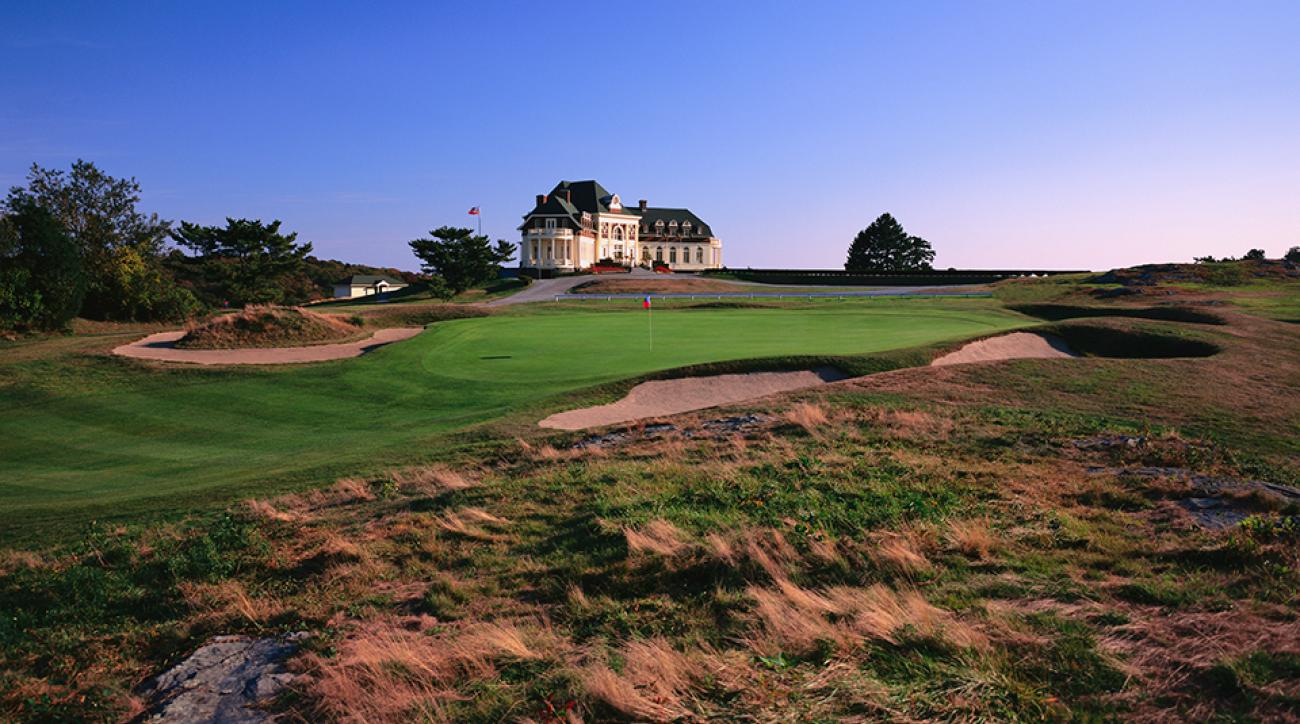
Newport, R.I., Willie Davis/A.W. Tillinghast, 1894/1923
One of the oldest clubs in the U.S. is also among the most historic, having played host to the first official U.S. Amateur and U.S. Open in 1895. A.W Tillinghast substantially changed the original design; today, the course is an Old World delight, with wind, fescues and tawny-colored fairways.
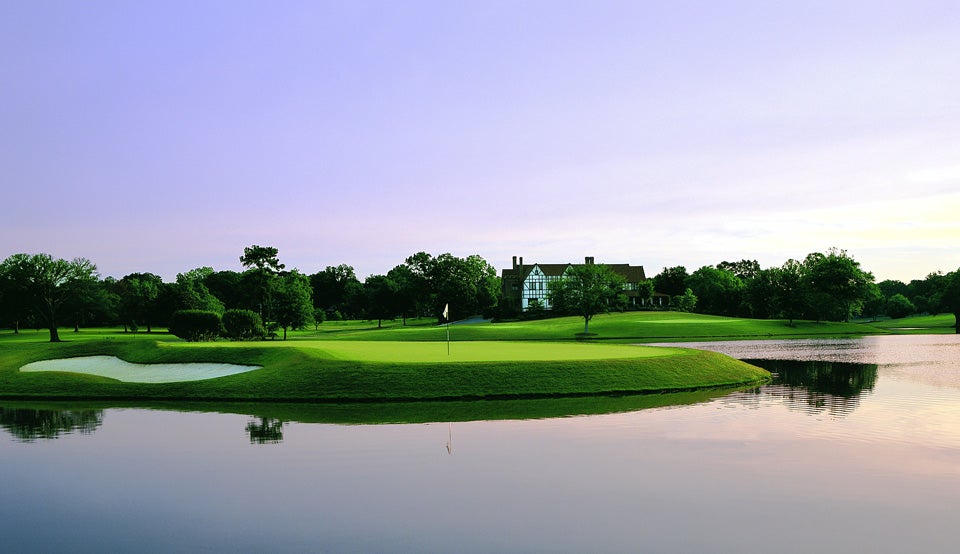
Atlanta, Ga., Tom Bendelow/Donald Ross/Rees Jones, 1908/1913/1994
Once better known as the club where Bobby Jones learned to play, and then as host to the 1963 Ryder Cup, East Lake is now a staple for golf fans as the 17-time host to the season-ending PGA Tour Championship.
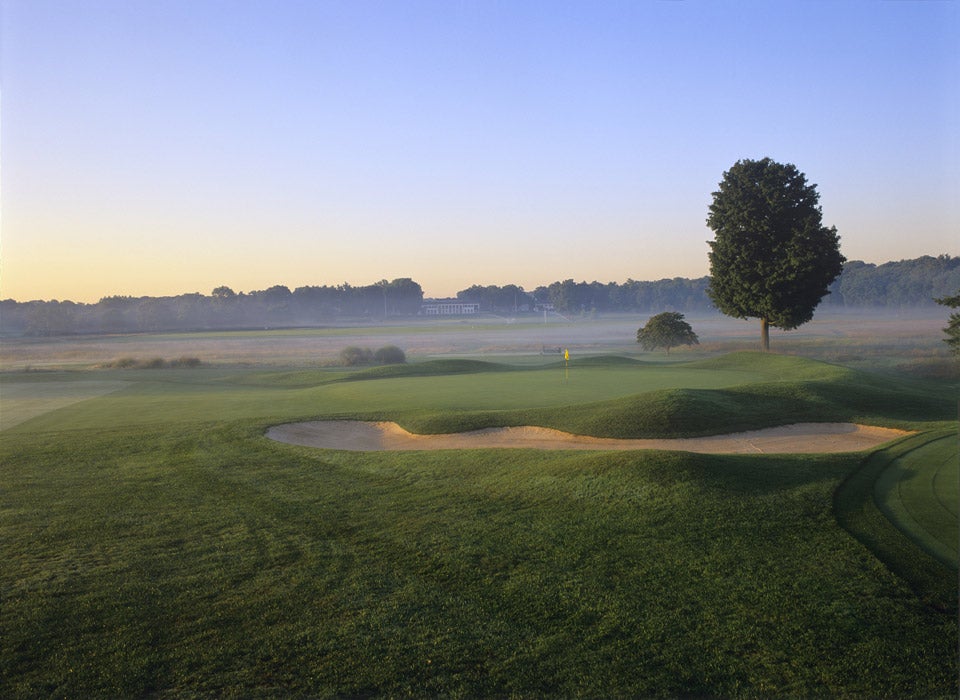
Locust Valley, N.Y., C.B. Macdonald/Seth Raynor, 1913
C.B. Macdonald and Seth Raynor teamed to craft this Long Island layout in 1913 and after a Tom Doak restoration, its Old World features remain intact. A mostly open front side yields to a back nine that climbs into the woods. The Redan-style par-3 3rd and the Biarritz-style par-3 9th are superb early examples of the design duo’s template holes.
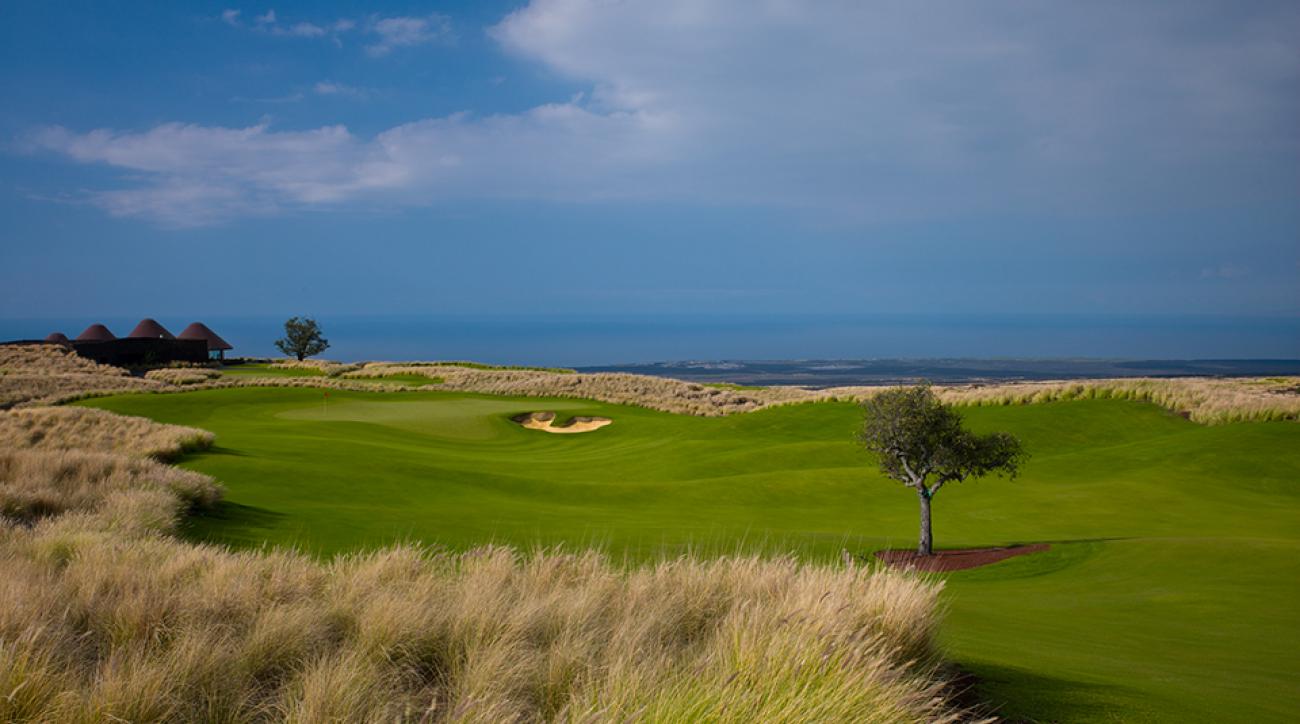
Kailua-Kona, Hawaii, David McLay Kidd, 2003
This Hawaiian hideaway is carved from a Big Island mountainside with views overlooking the Pacific on every hole. Nanea spreads out to 7,503 roomy yards, but they could shorten it by 3,000 yards and you still wouldn’t see anybody else.
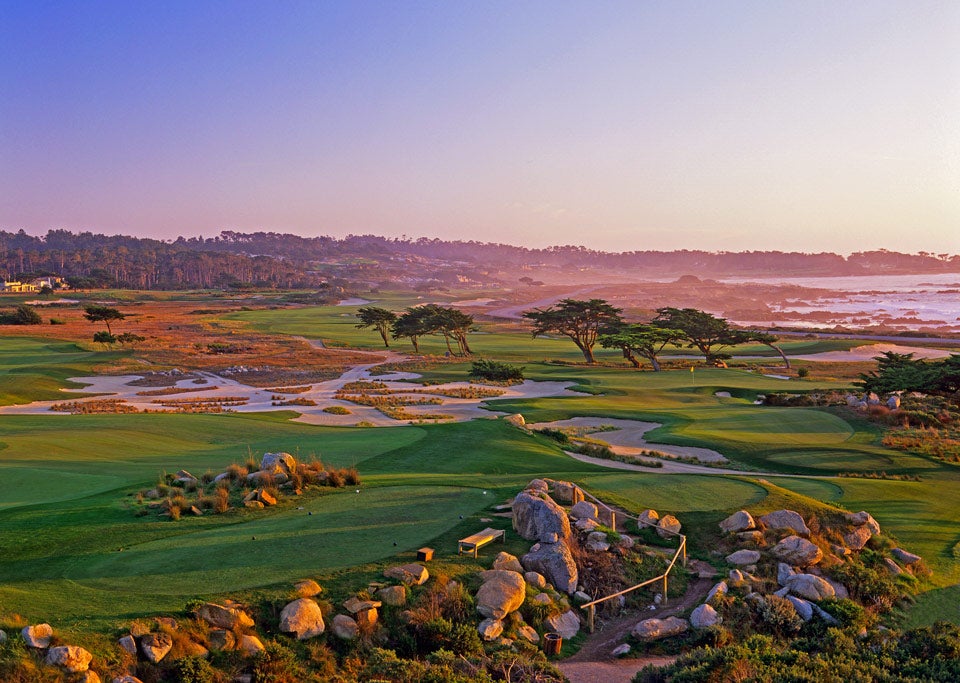
Pebble Beach, Calif., Bob Baldock/ Mike Strantz, 1961/2004
The layout dates back to a handsome, if bare-boned 1961 Bob Baldock/Jack Neville design, but its current character is all Mike Strantz, the late designer who finished a makeover in 2004. Strantz carved out 12 new holes and reworked six others. The rock formations, twisted trees and unimpeded ocean views make this a splendid alternative to the region’s more famous Big Three.
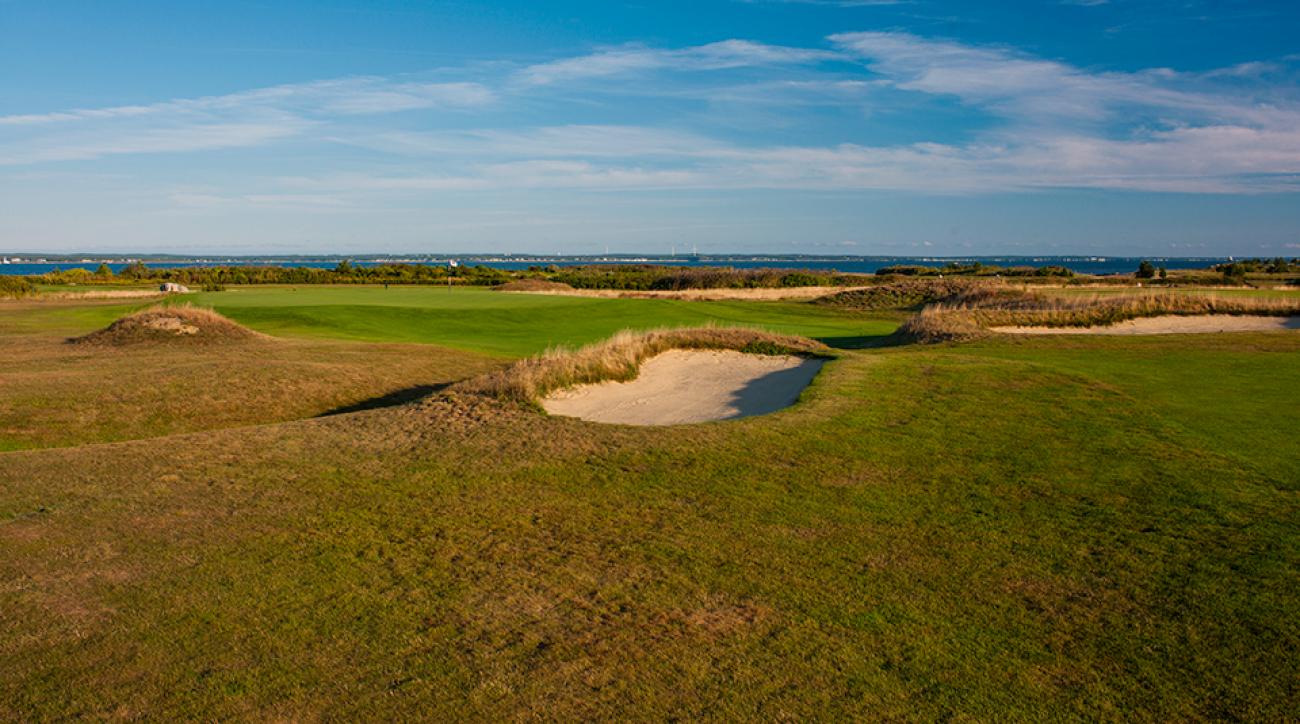
Marion, Mass., William Flynn/Fred Hood, 1922
Founding member Frederic Hood teamed with Golden Age great William Flynn to create a breeze-fueled seaside test along Buzzards Bay. Best known is the par-3 third, which calls for a 170-yard shot over the bay to an elevated green completely encircled by sand.
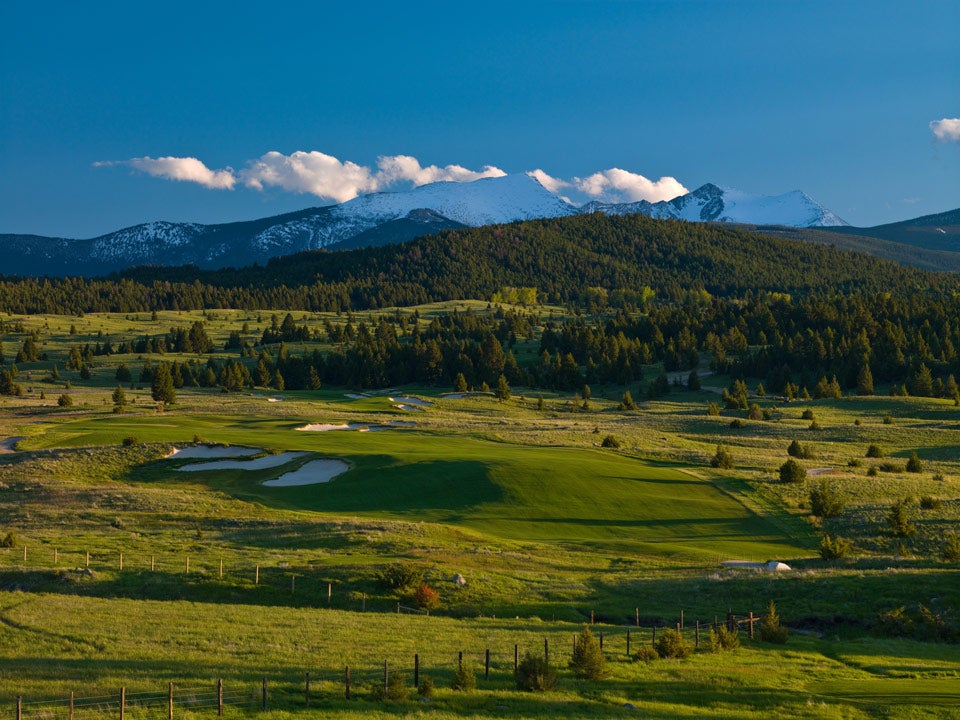
Deer Lodge, Mont., Tom Doak, 2008
The aptly named Rock Creek Cattle Co. is surrounded by a 30,000-acre working ranch in southwestern Montana. The beefy 7,466-yard, par-71 layout plays shorter than its listed distance, due to the 4,567-foot elevation, though the horns come out via the deep, jagged-edge bunkers and the severely contoured greens.
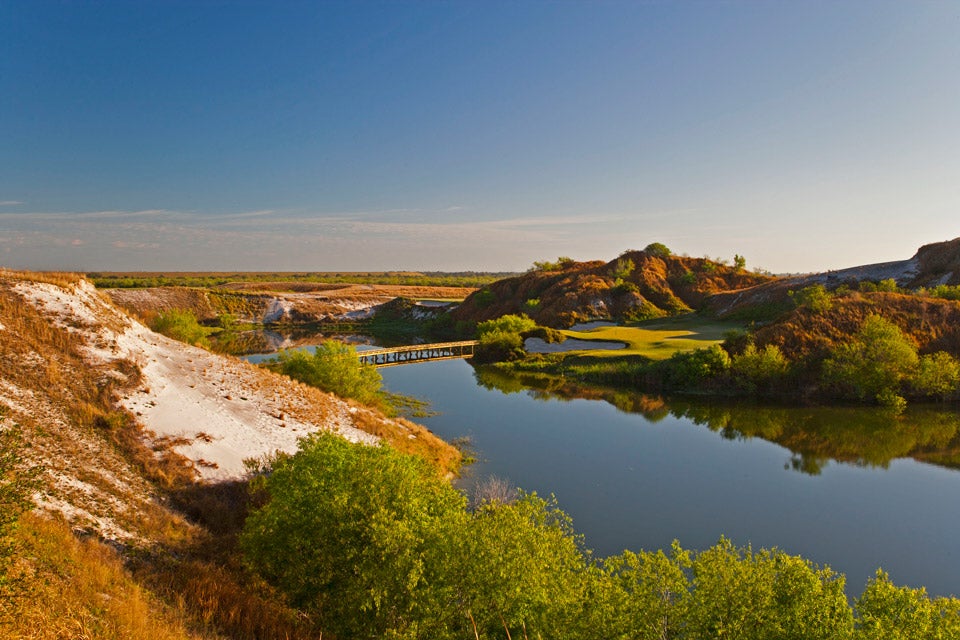
Streamsong, Fla., Tom Doak, 2012
Streamsong Blue features a distinctive sand-based canvas that puts an emphasis on ground-game prowess. Tom Doak crafted fairways that cling to the terrain as if they’ve been here for thousands of years. Greens melt into their surrounds. Imaginative green contouring forces players to think before approaching.
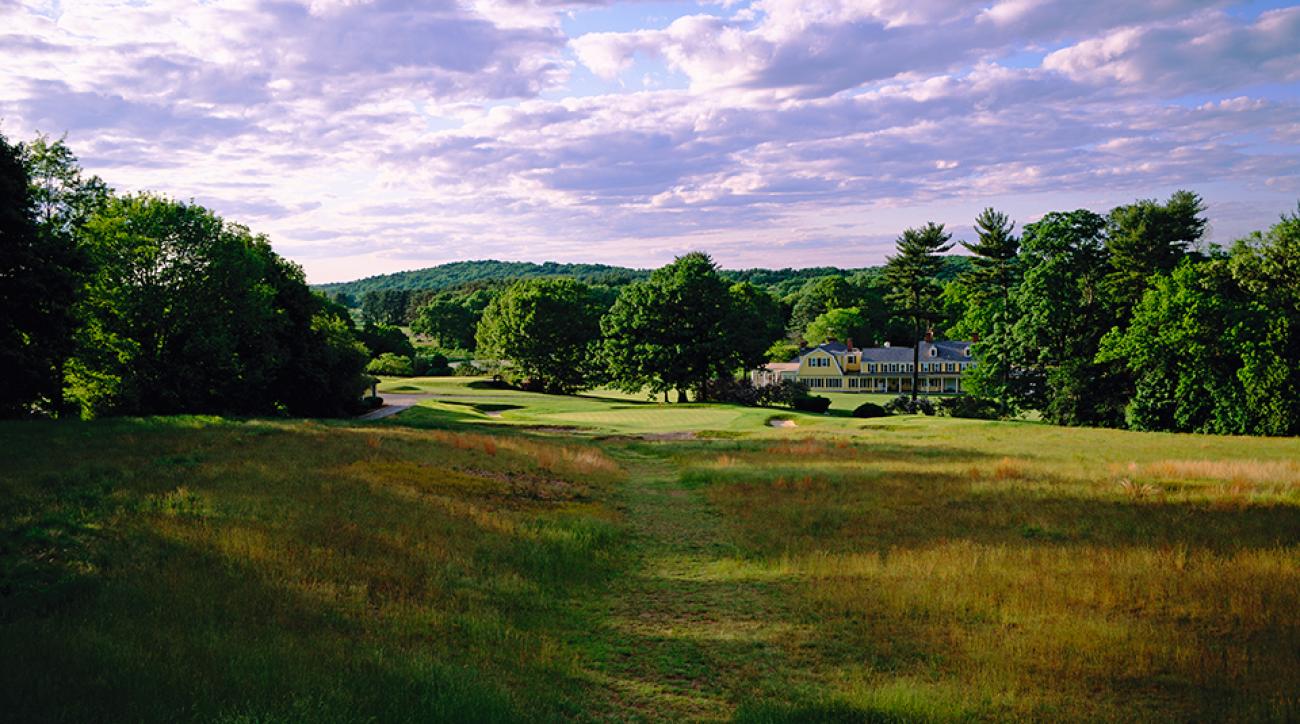
South Hamilton, Mass., Herbert Leeds, 1896
Host to four very early U.S. Opens from 1898 to 1908, Myopia Hunt is nearly unchanged since then, making it a time warp for all who play there. Named for its nine co-founders who all wore glasses, Myopia today provides a sturdy test from the 6,539-yard tips.
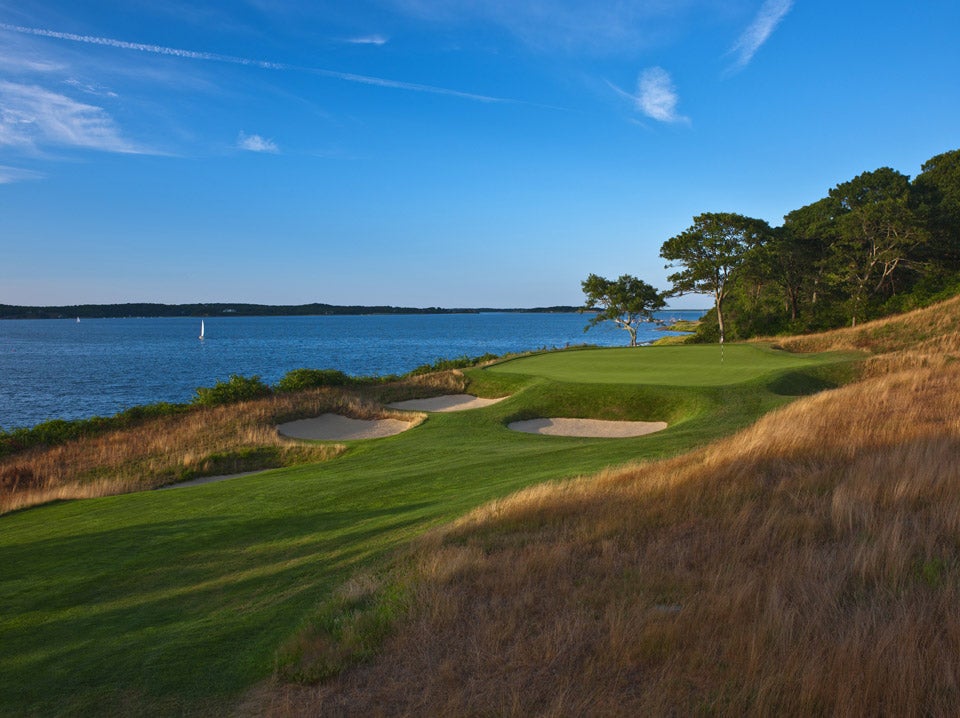
Chatham, Mass., Herbert Fowler, 1922
Eastward Ho! is a lay-of-the-land, Cape Cod beauty that overlooks aptly named Pleasant Bay. Fescue-fringed holes tumble up and over small ridges, providing maximum variety and an Old World look.
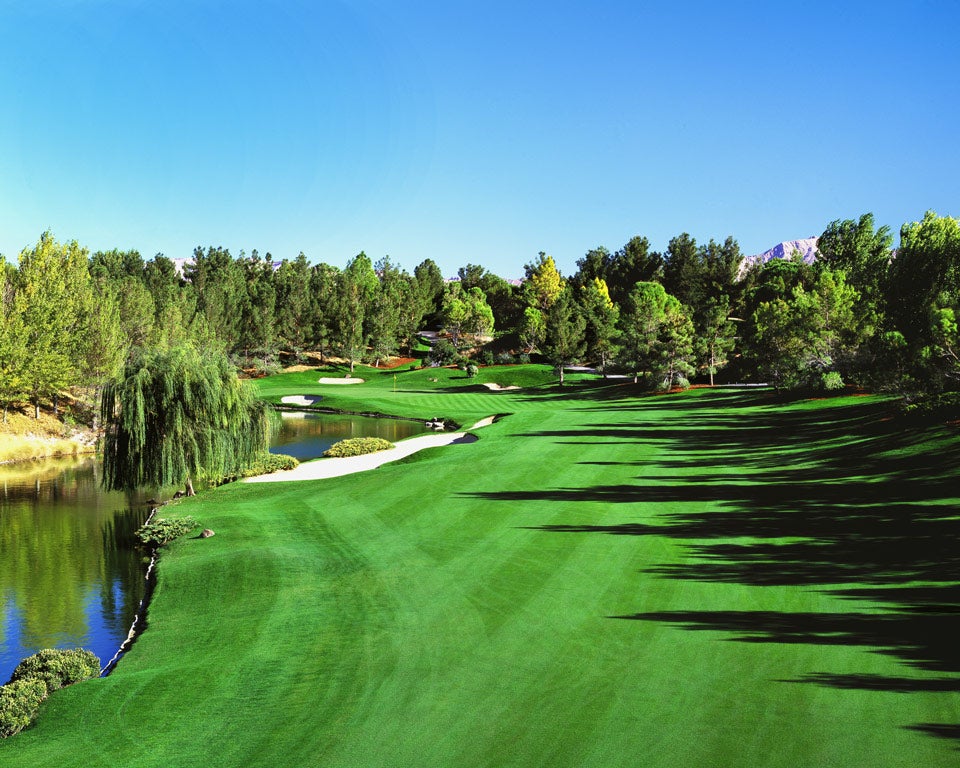
North Las Vegas, Nev., Tom Fazio/Steve Wynn, 1990
Tom Fazio and Steve Wynn demonstrated that with sufficient money and imagination, there’s nothing that couldn’t be accomplished in golf course design. Hewn from flat, featureless desert, Shadow Creek emerged with rolling hills, a forest of pines, bursts of flowers and a network of creeks and lakes.
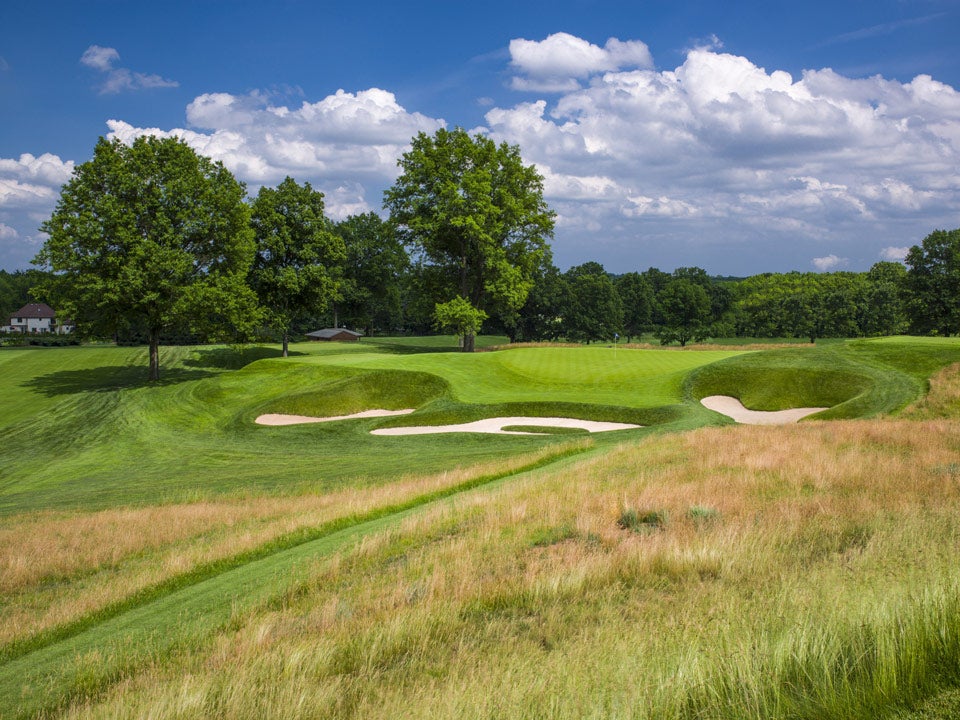
Edison, N.J., Donald Ross, 1921
Despite its charm, intimacy and ingeniously contoured greens, big bashers have thrived at the Donald Ross-designed Plainfield, from Laura Davies, who won the 1987 U.S. Women’s Open here, to Dustin Johnson, who topped the field at the 2011 Barclays. Gil Hanse has worked for more than a decade on restoring as many Ross features as possible.
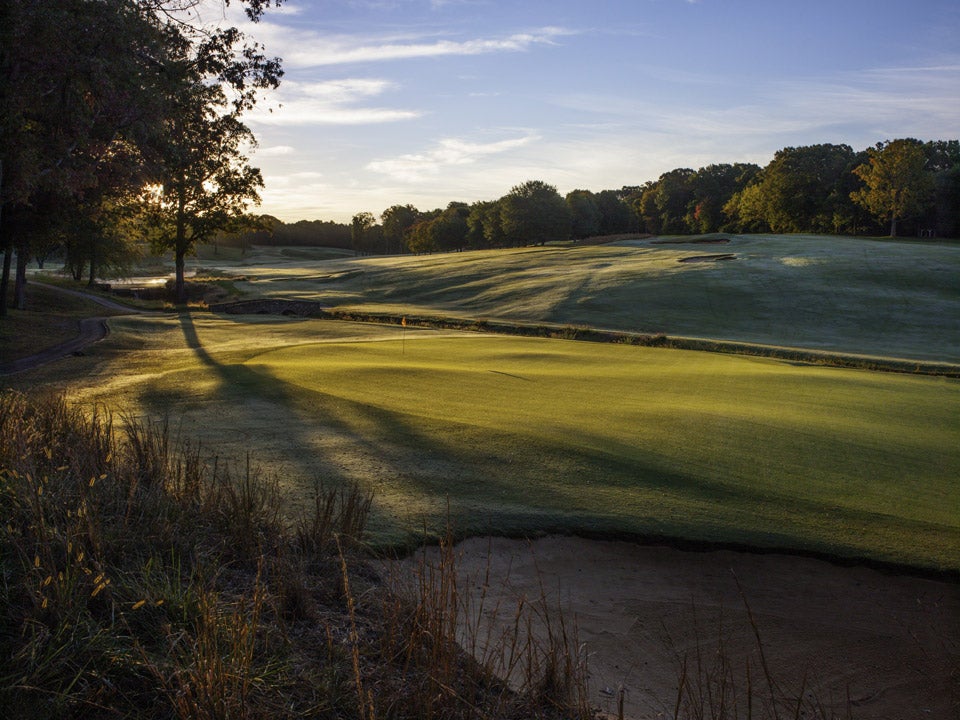
Winston-Salem, N.C., Perry Maxwell, 1939
A 2013 Bill Coore/Ben Crenshaw renovation has sparked renewed attention to the low-key, yet dramatically undulating 1939 Perry Maxwell layout near Wake Forest University. Back in place are the lacy-edged bunkers, the classic tees and fairway lines and the double green shared by holes 8 and 17 (a Clifford Roberts idea).
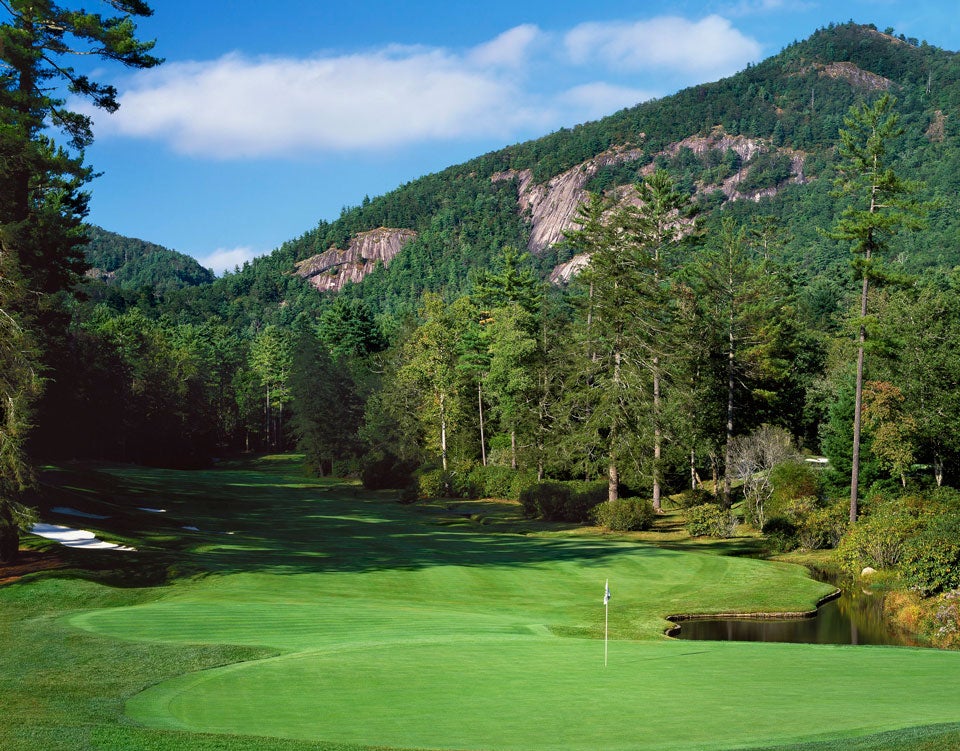
Cashiers, N.C., Tom Fazio, 1987
Tom Fazio’s gorgeous mountain masterpiece dates to 1987 and it has held up beautifully. Winding streams, graceful elevation changes and Chimney Top Mountain backdrops are among the attractions. The downhill par-3 17th, to a green tucked in pines and hardwoods and the option-laden par-5 18th, with a creek that twists up the left side, are standouts.
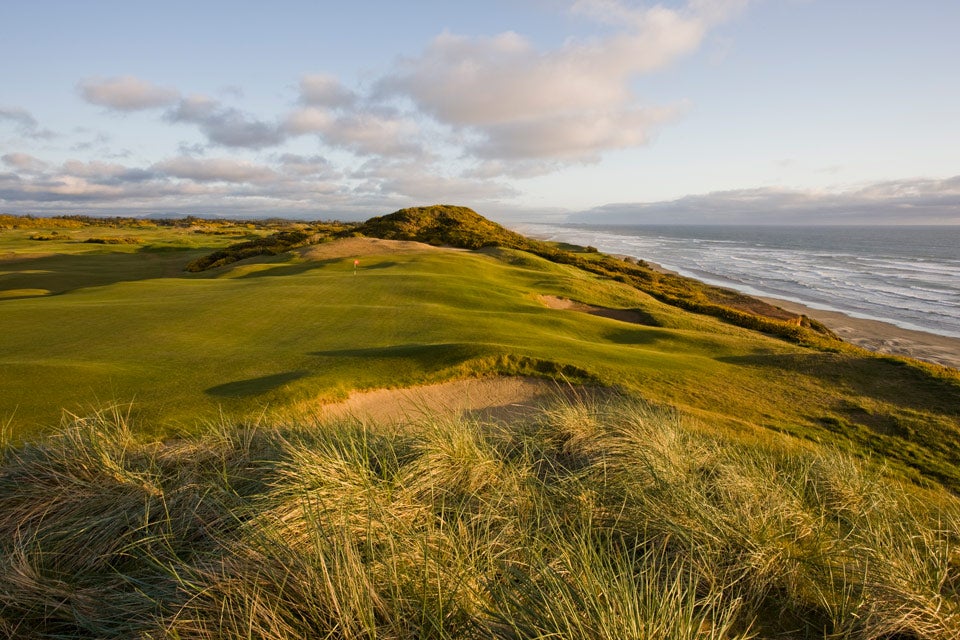
Bandon, Ore., Tom Doak/ Jim Urbina, 2010
This 2010 Tom Doak/Jim Urbina collaboration features turnpike-wide landing areas and gigantic, heaving greens that are hard to miss. To get the ball into the hole, however, you’ll need to master angles, strategy, trajectory and the ground game, making for an Old World links experience second to none in the U.S.
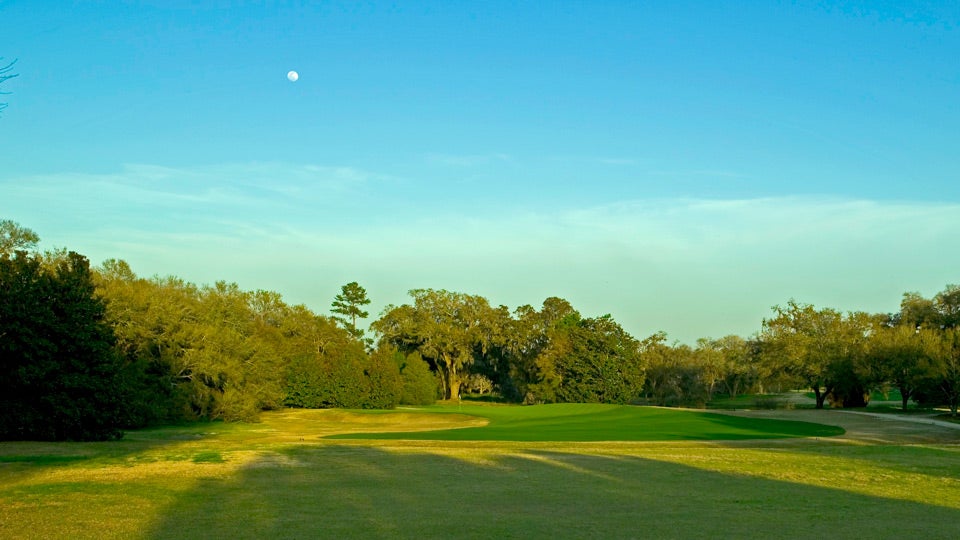
Hanahan, S.C., Seth Raynor, 1925
This Charleston-area spread sprawls over a huge acreage, allowing for plenty of strategic options via width, angles and bunker placement. The tranquility of the property is emphasized by the Lowcountry setting, complete with vast marshes and live oaks drenched in Spanish moss.
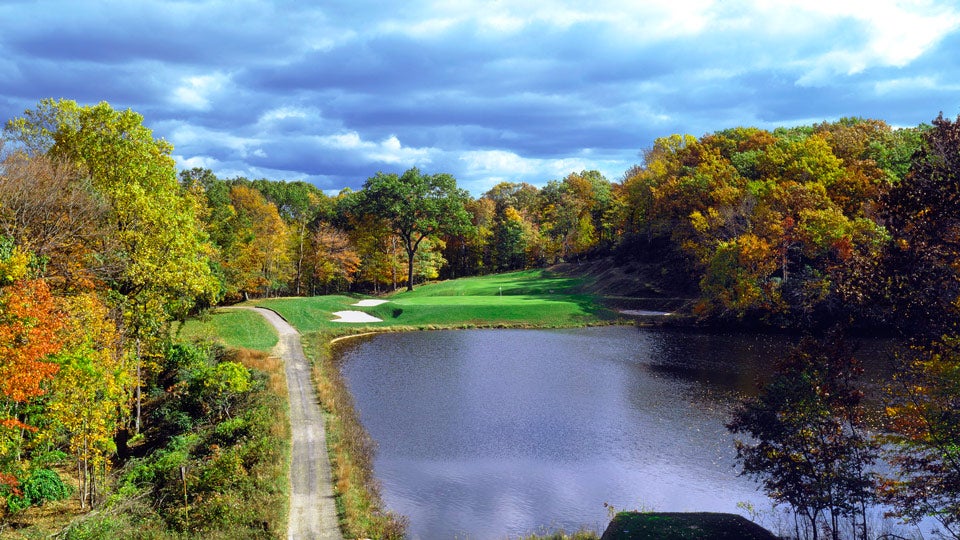
New Haven, Conn., C.B. Macdonald/Seth Raynor, 1926
Designed in 1926 by C.B. Macdonald with Seth Raynor, Yale dishes out classic template holes that mimic the greatest examples of British links tests—that were somehow successfully transplanted to the hilly, rocky, wooded terrain of southern Connecticut.
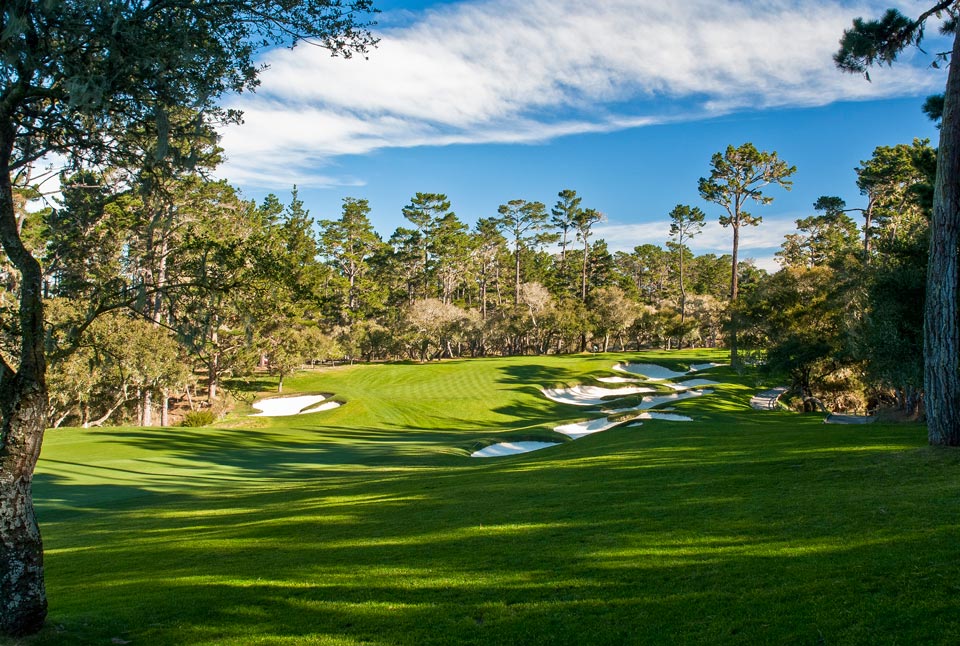
Pebble Beach, Calif., Robert Trent Jones Sr., 1966
This Robert Trent Jones Sr. design has been one of the Tour’s hardest layouts for nearly 50 years. Few have conquered its dune-flecked start nor its final 13 holes through the pines, except Phil Mickelson in 2005 and Luke Donald in 2006, when both posted astonishing 10-under-par 62s.
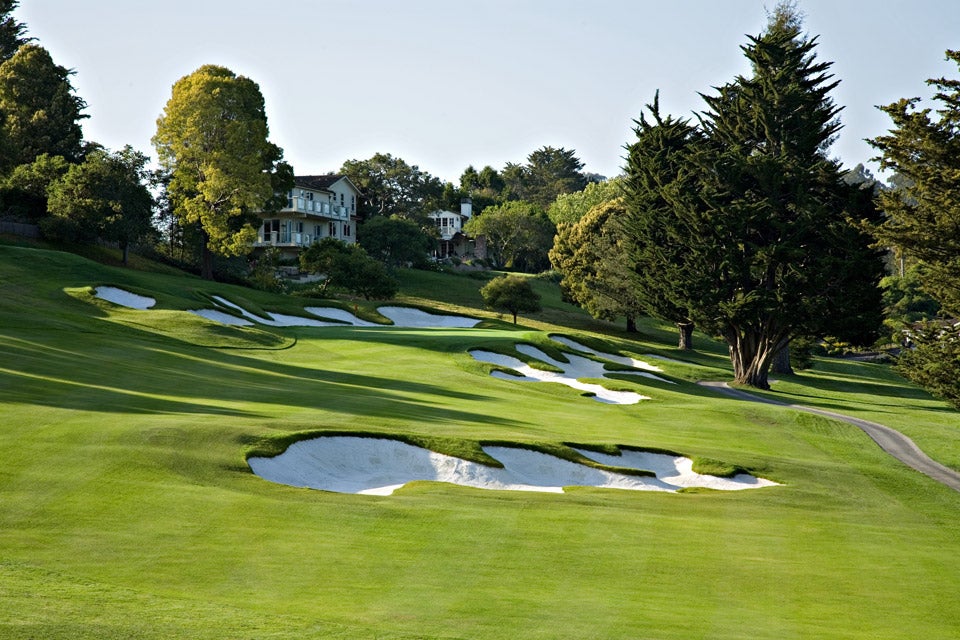
Santa Cruz, Calif., Alister MacKenzie, 1929
How can such a pipsqueak in the yardage department play so difficult? Try rolling terrain that’s crisscrossed by barrancas, slender fairways hemmed in by trees, hordes of deep, artfully sculpted bunkers, Pacific Ocean breezes and nightmarishly quick, canted greens.
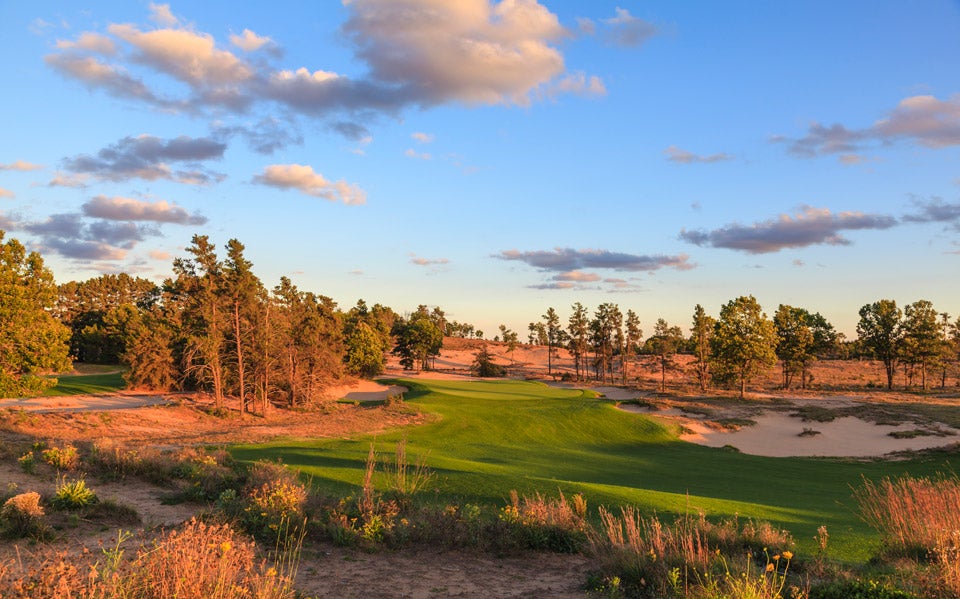
Nekoosa, Wis., Bill Coore/Ben Crenshaw, 2017
Situated on a huge natural sand deposit 170 miles northwest of Milwaukee, the aptly named Sand Valley earns honors as our highest debuting U.S. course for one essential reason: The sand, man! The course’s gritty subsurface makes for great walking and furnishes ground-game options in the spirit of Scottish links, but the look more resembles English heathland, with shrubs and trees dotting the sand that flanks the playing areas.
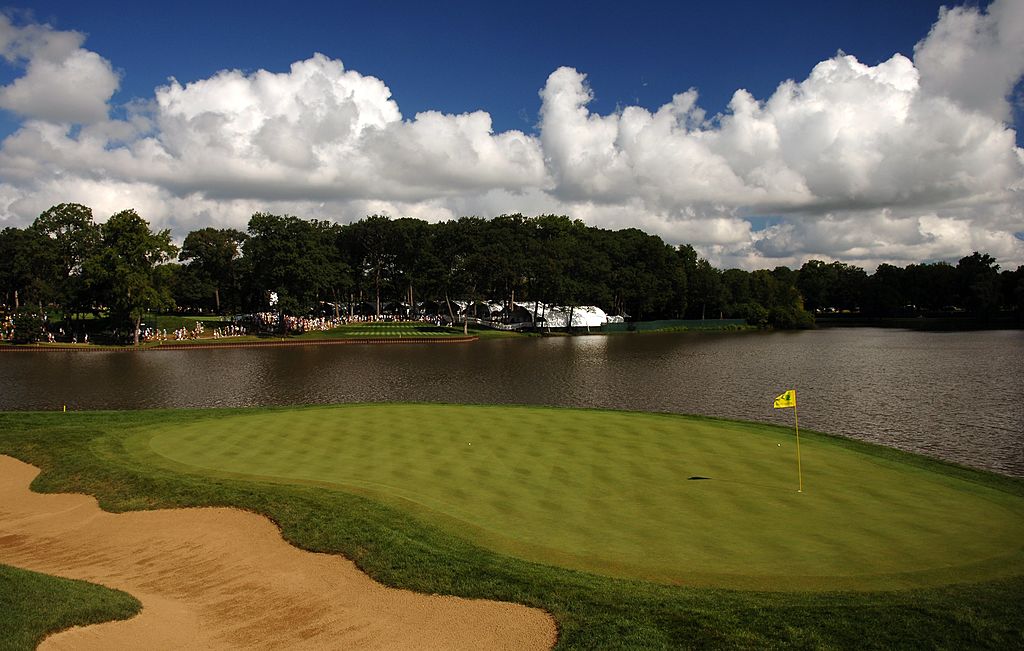
Medinah, Ill., Tom Bendelow, 1928
Medinah's flair for producing major drama at tournament time has been borne out again and again. Witness Hale Irwin’s 1990 U.S. Open heroics, Tiger’s unforgettable duel with Sergio in the 1999 PGA and the rash of critical putts the Europeans made at the 2012 Ryder Cup.
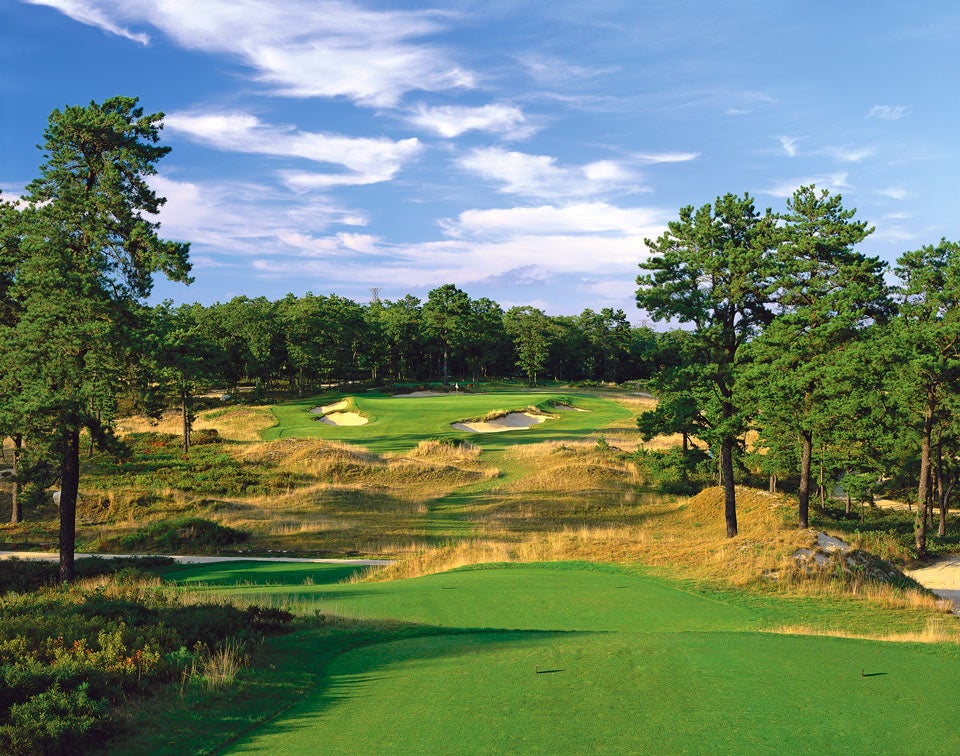
Plymouth, Mass., Bill Coore/ Ben Crenshaw, 2004
This exclusive 2004 Bill Coore-Ben Crenshaw creation occupies a prime piece of ground in the pine hills of eastern Massachusetts. Creatively contoured greens and their surrounds place an emphasis on short-game prowess while the sand dunes and fescues lend authentic coastal flair to the proceedings.
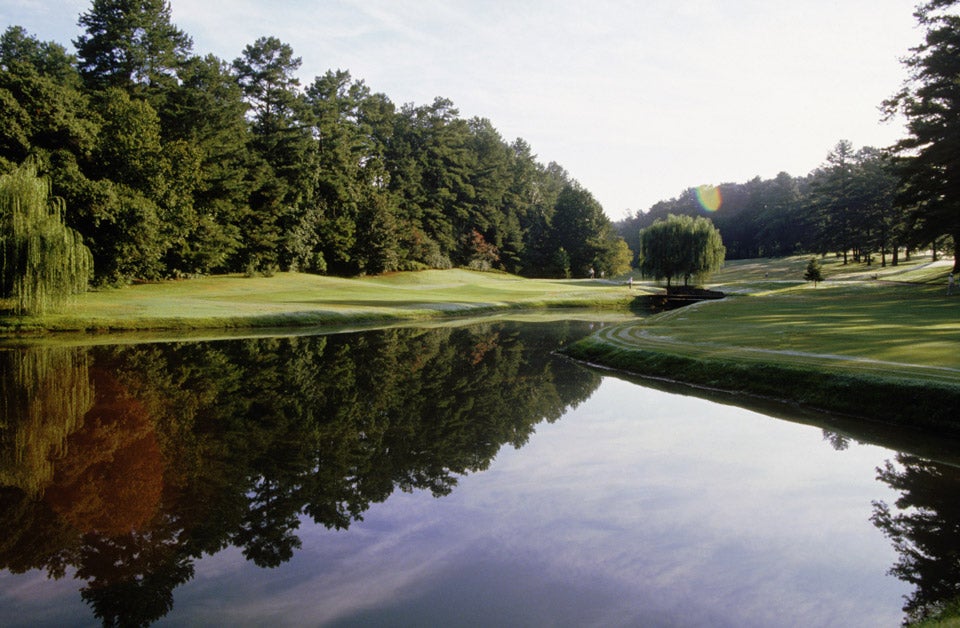
Atlanta, Ga., Robert Trent Jones Sr./Bobby Jones, 1948
Bobby Jones and Robert Trent Jones Sr. collaborated on this hilly, forested track north of the city. Like that other top-ranked Georgia course, Peachtree features inspired green contouring, dogwoods and pines along the fairways and minimal fairway bunkering.
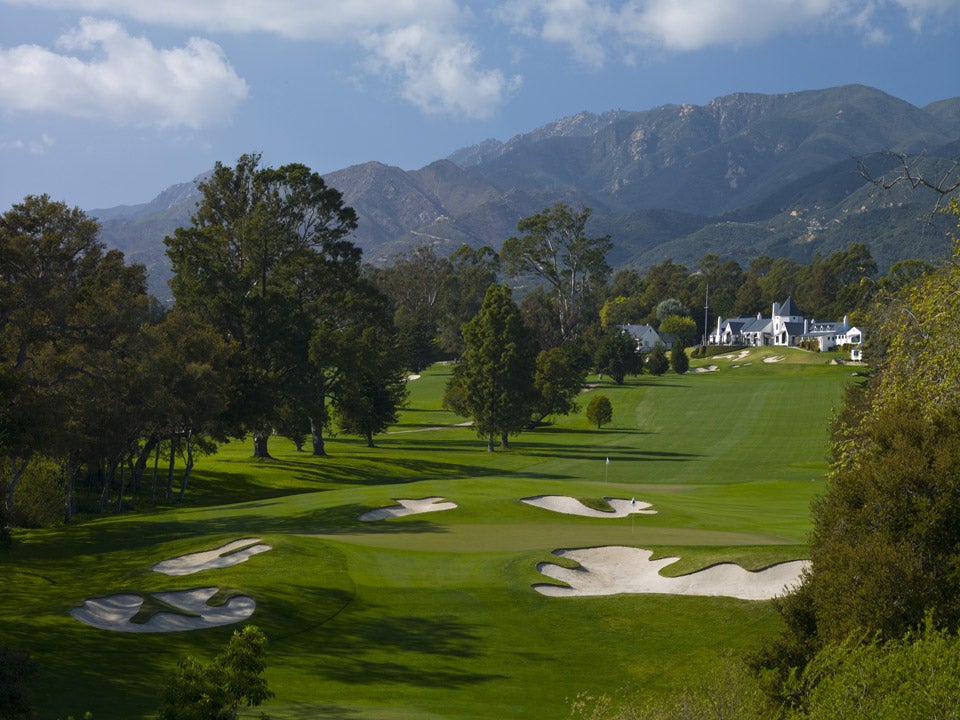
Montecito, Calif., Alister MacKenzie, 1929
Nestled in between the Santa Ynez Mountains and the Pacific Ocean north of Los Angeles, Valley Club is softer and shorter, at 6,650 yards than many so-called “Championship” tests, yet few anywhere offer more charm, nor sounder strategic bunkering.
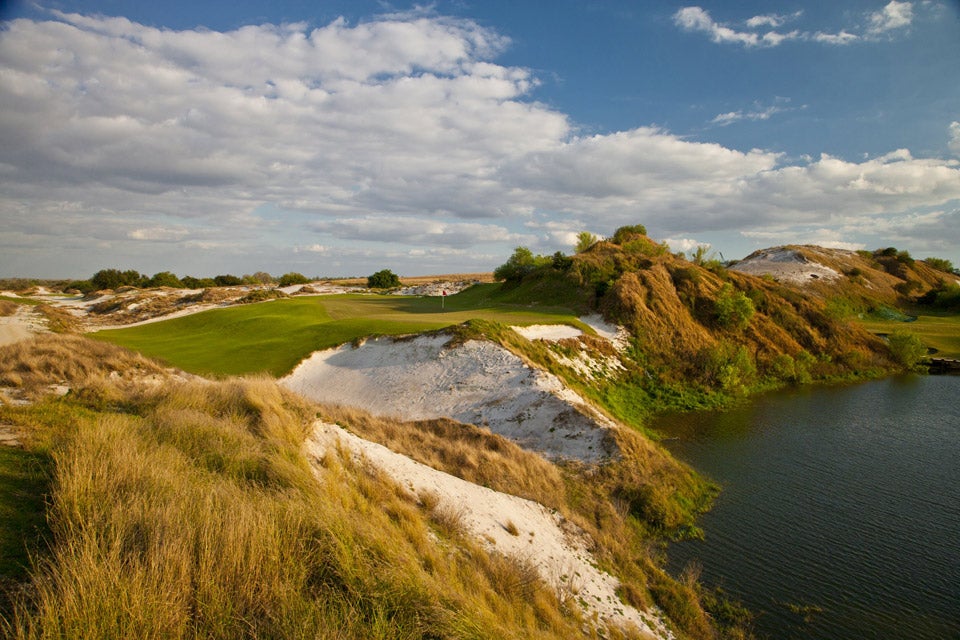
Streamsong, Fla., Bill Coore/Ben Crenshaw, 2012
Streamsong dishes out a unique palette for Florida golf. Tall, odd-shaped sand piles, significant climbs and drops, firm, fast-running Bermuda fairways and lakes submerged in the sand spice the play on the Coore-Crenshaw-designed Red course.
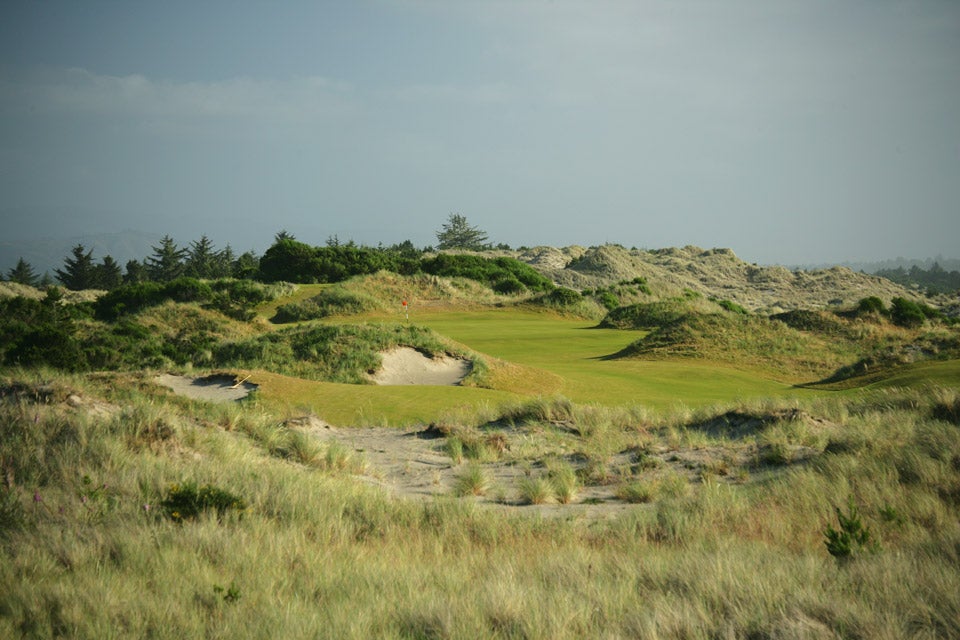
Bandon, Ore., Bill Coore/ Ben Crenshaw, 2005
Unlike its elder Bandon siblings, “Trails” doesn’t cling to cliffs, but it’s no less spectacular. It opens in massive, scrub-covered dunes, then plunges into pine forest and touches linksy meadow before returning to dunesland.
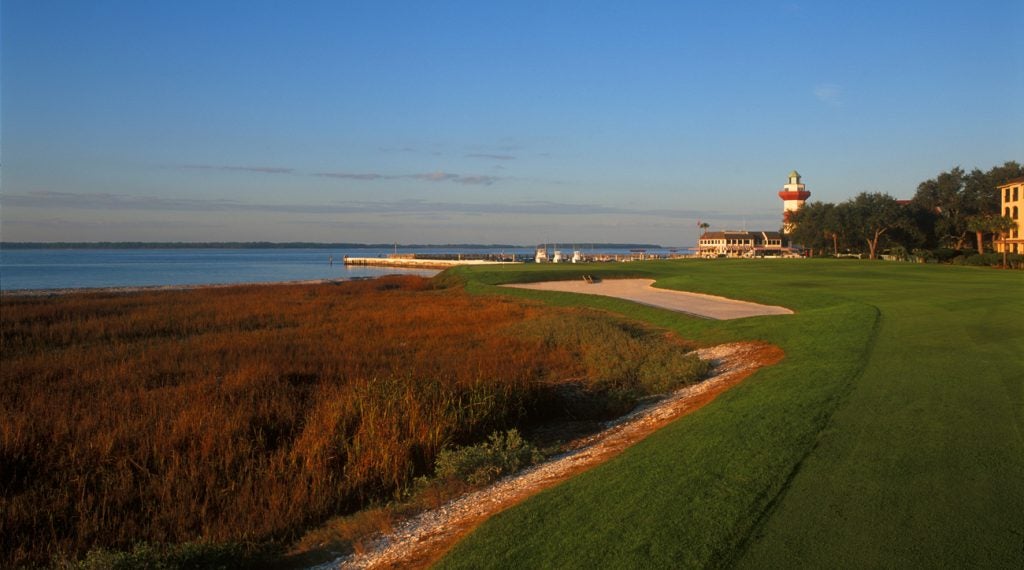
Hilton Head Island, S.C., Pete Dye/Jack Nicklaus, 1969
A place of subtle beauty, this is a shotmaker’s paradise where power takes a backseat to precision. Mixing live oaks, lagoons, tiny greens, bunkers banked by railroad ties and a closing stretch along the Calibogue Sound, this Pete Dye/Jack Nicklaus collaboration delights and terrorizes at every turn.
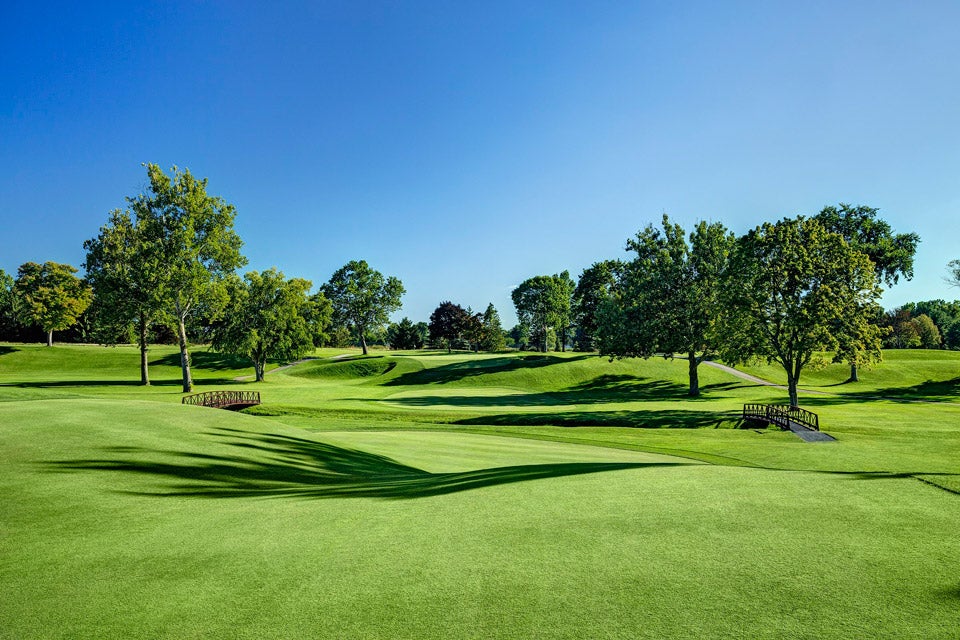
Toledo, Ohio, Donald Ross, 1919
A marvelous collection of Donald Ross-designed par-4s set the stage for two of Greg Norman’s most crushing defeats. A recent renovation has restored Ross features, but also added length to test today’s tournament players.
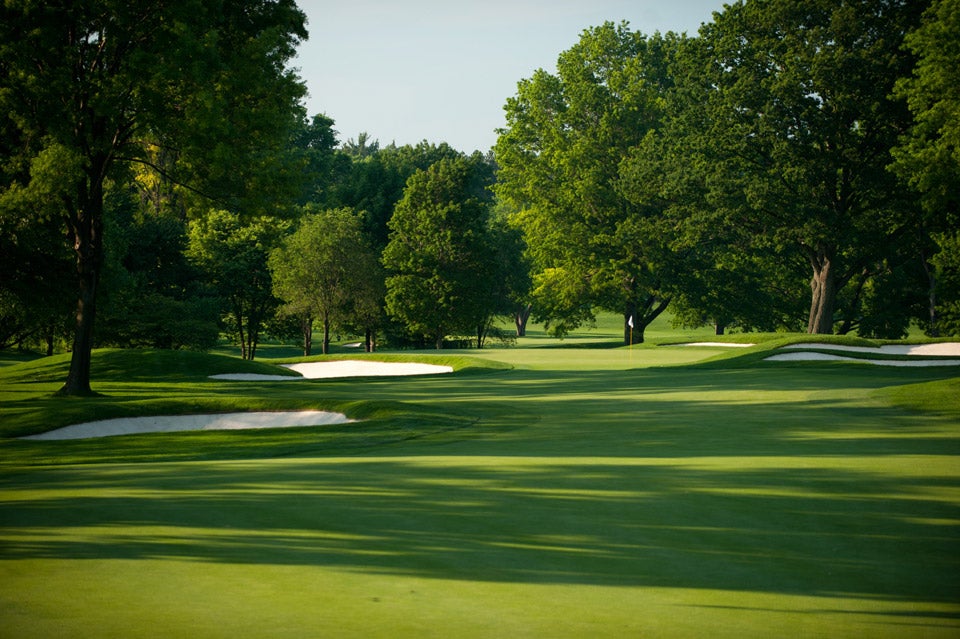
Rochester, N.Y., Donald Ross, 1923
Oak Hill's character is unmistakably Donald Ross, thanks to such holes as the 323-yard, par-4 14th, its vexing undulations yielding superb risk/reward opportunities.

Holyoke, Colo., Tom Doak, 2006
Tom Doak’s 2006 design in the remote, treeless prairie of northeastern Colorado plays like a links, hard and fast, with sand hills, fescues and a different wind every day. The 335-yard, par-4 7th is one of golf’s great short holes, drivable for some, and with its skillfully placed bunkers and wickedly contoured, E-shaped green, interesting for all others, no matter the distance of the second shot.
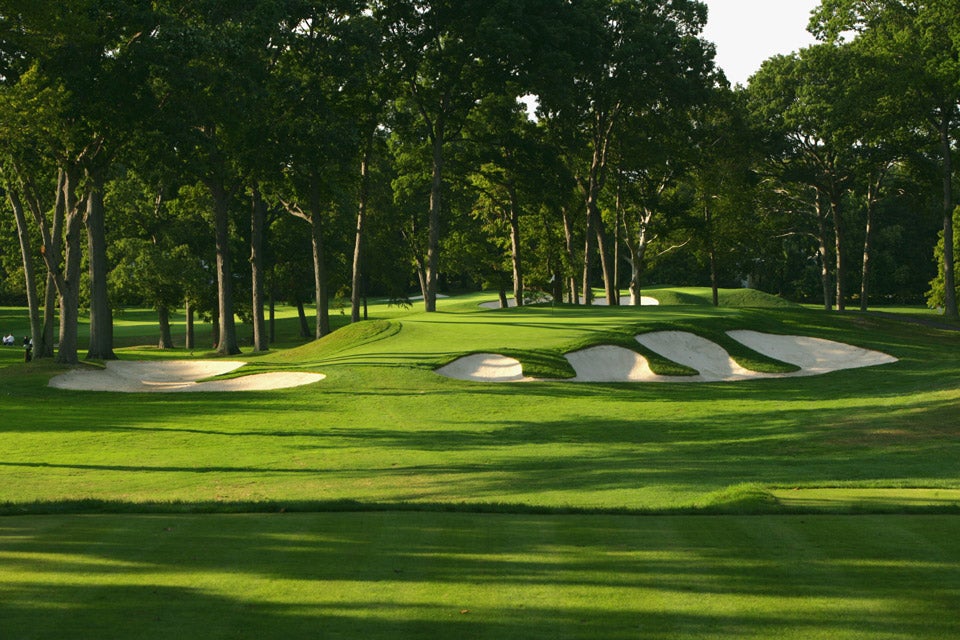
Mamaroneck, N.Y., A.W. Tillinghast, 1923
Neither as long nor as tough as its illustrious West sibling, the equally attractive East is preferred by many course connoisseurs for its superior pacing and variety. A 2015 restoration by Gil Hanse put back many of the most ingenious green contours that had been lost or changed over time.
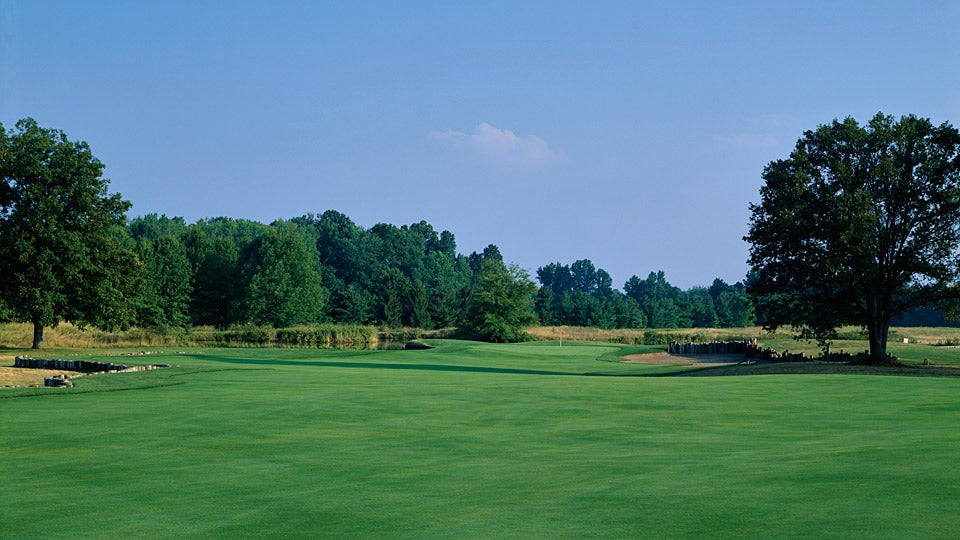
New Albany, Ohio, Pete Dye, 1967
One of Pete Dye’s early masterworks, this men-only domain in suburban Columbus is scattered throughout with bunkers and water hazards framed by railroad ties and tall native grasses.
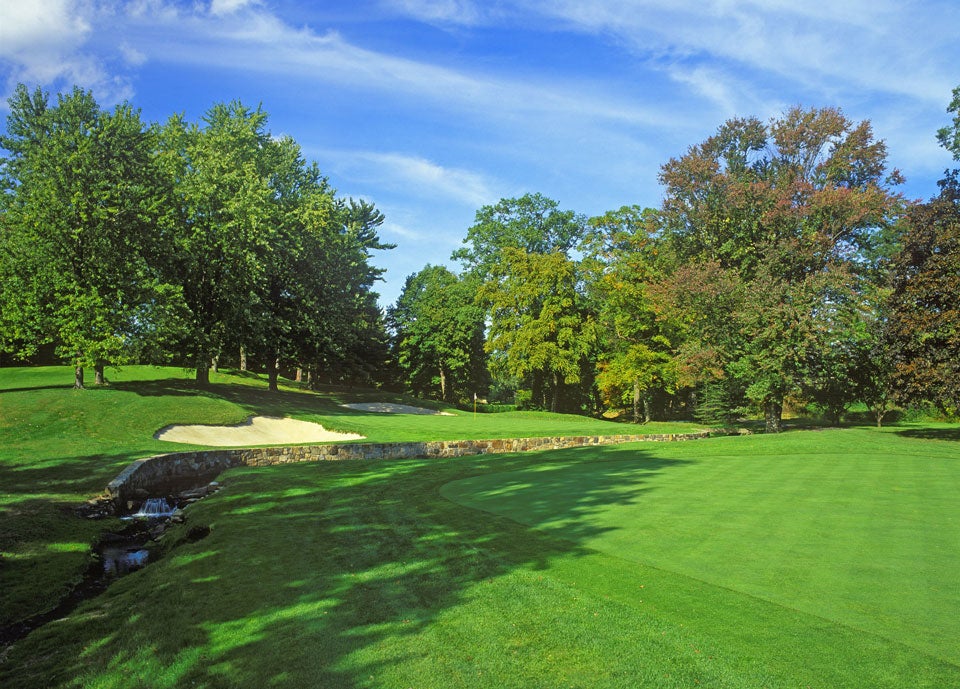
Scarsdale, N.Y., A.W. Tillinghast, 1926
This quiet club across the street from Winged Foot counts Jack Nicklaus and Pete Dye as admirers. It has an outstanding cluster of gently rolling par-4s, notably the 6th and the 11th.
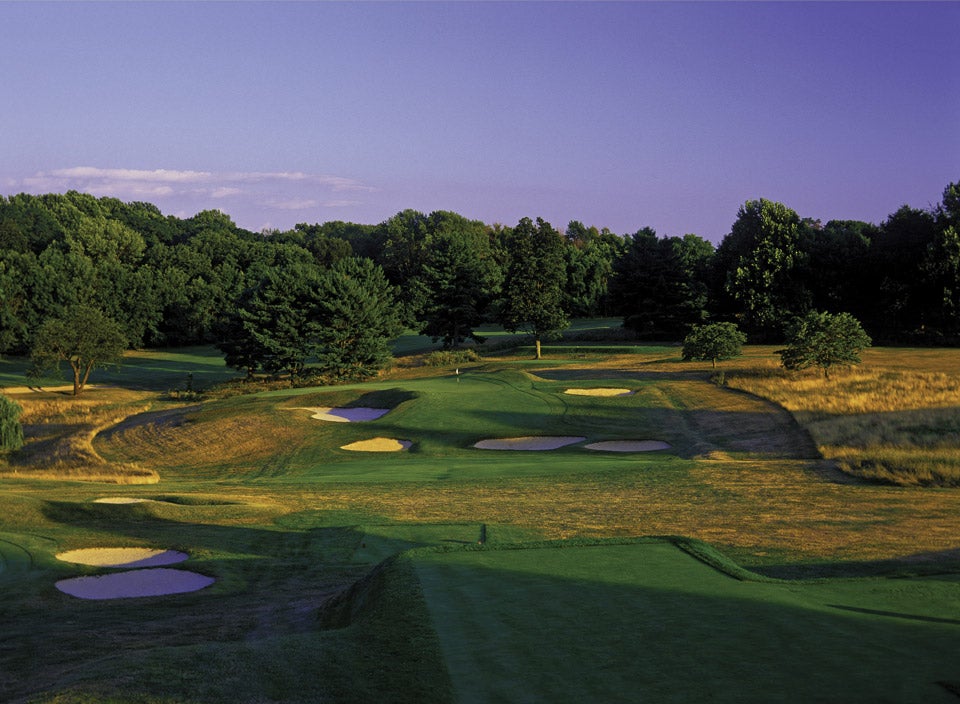
Bernardsville, N.J., A.W. Tillinghast, 1918
A wonderful routing on a tight piece of property not far from the USGA headquarters showcases A.W. Tillinghast’s imagination, while his brilliant Redan-style par-3 2nd hole shows that he could adapt with the best of them.
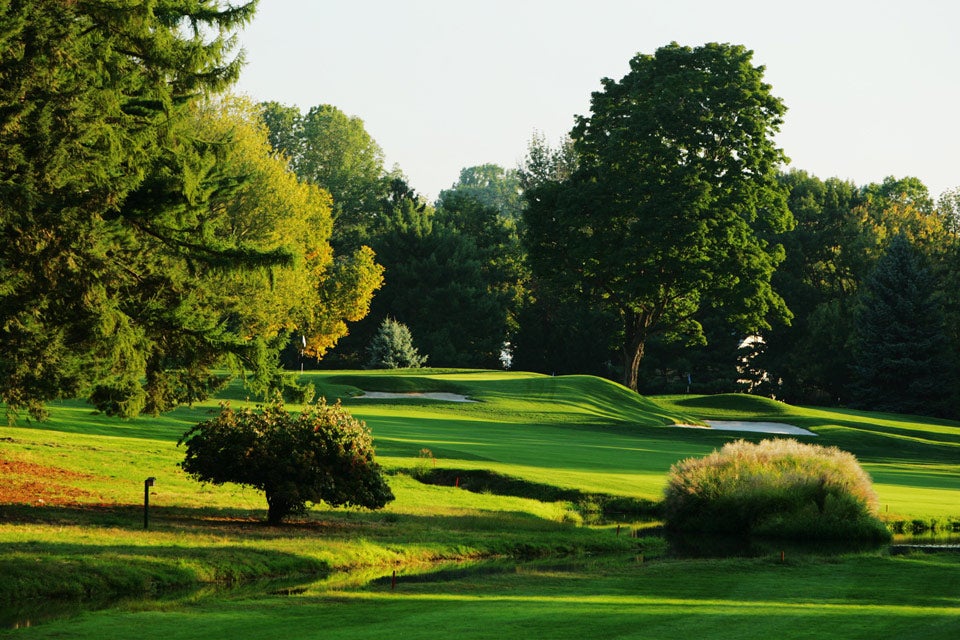
Springfield, N.J., A.W. Tillinghast, 1922
This sturdy, leafy A.W. Tillinghast-designed test most recently threw its well-bunkered heft around during the 2016 PGA Championship when Jimmy Walker triumphed in the rain. Sports Illustrated once named its par-3 4th the best 4th hole in the U.S.
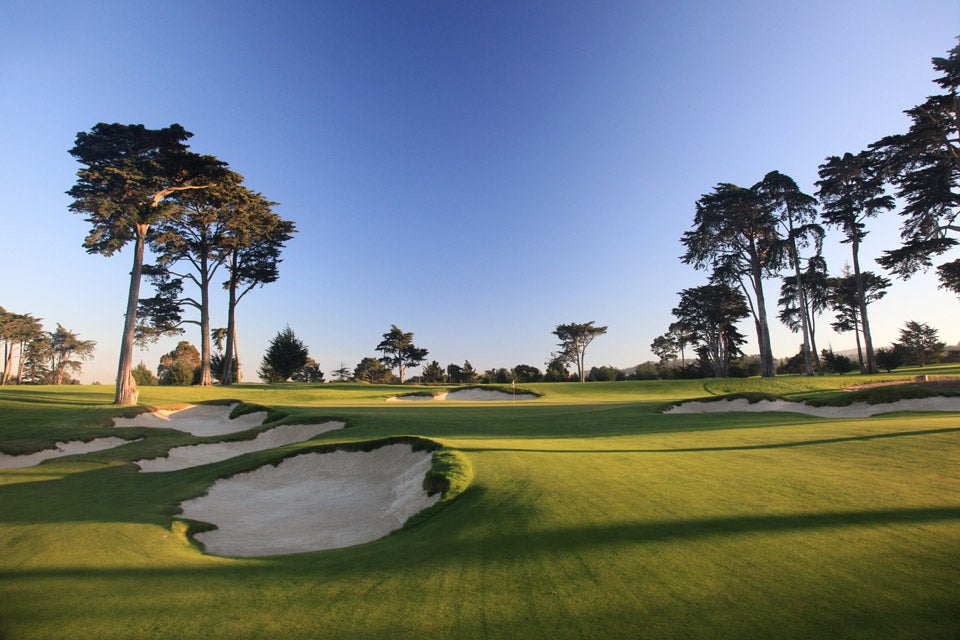
South San Francisco, Calif., A. Vernon Macan/ A. MacKenzie, 1926
For most of its history, the Cal Club, as locals call it, served up a well-regarded Bay Area course, but one that played third fiddle to Olympic and San Francisco. Following a Kyle Phillips re-do that was part restoration and part re-design, many feel this private layout is now near-equal to its more venerated neighbors.
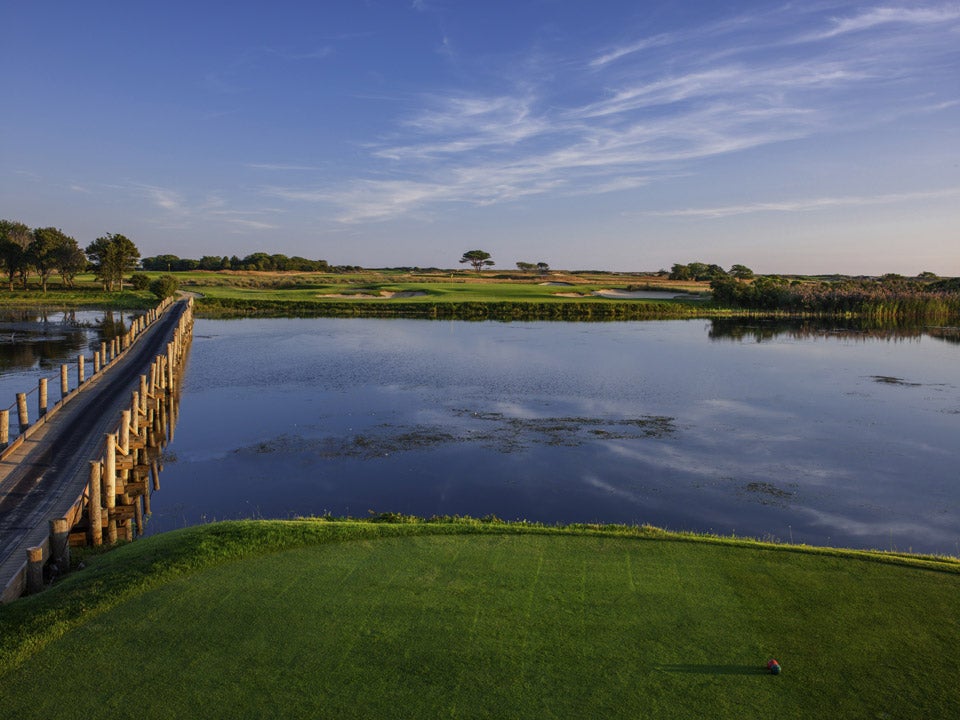
East Hampton, N.Y., John Park/Willie Park Jr., 1891
One of the nation's oldest and most socially prestigious clubs has offered golf since 1891. However, its current layout is a Willie Park Jr. design (with help from brother John) that dates to 1924.
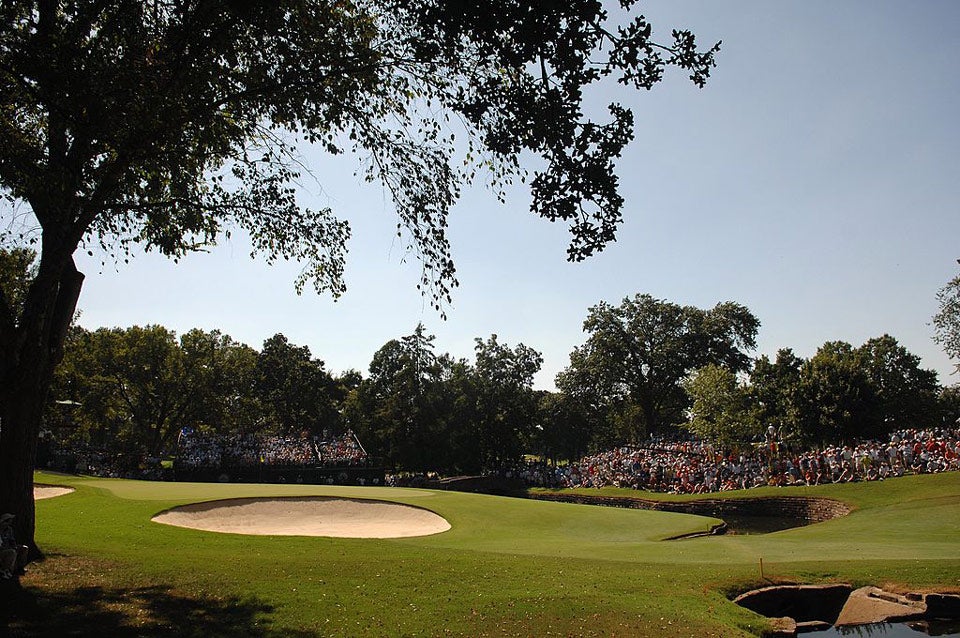
Tulsa, Okla., Perry Maxwell, 1936
Site of three U.S. Opens and a quartet of PGA Championships, this Depression-era Perry Maxwell design rolls out heat, humidity, wind and stern rough framing fairways and greens.
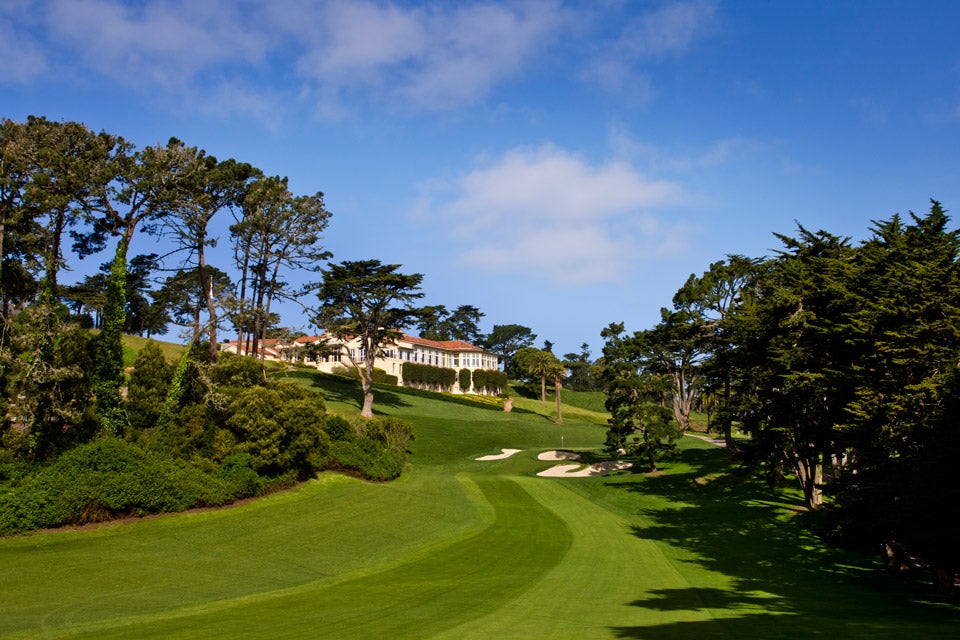
San Francisco, Calif., Sam Whiting, 1924
Laid out on the side of a hill overlooking Lake Merced, its fairways hemmed in by thousands of cypress and eucalyptus trees, its greens and landing areas bracketed by wrist-fracturing rough, Olympic has proved to be an imposing test for five U.S. Opens.
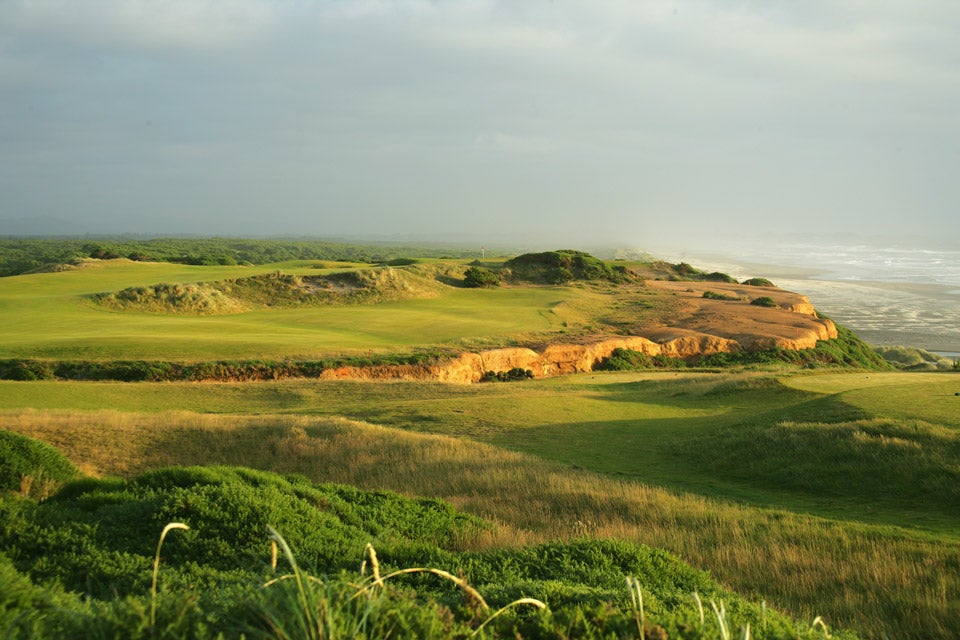
Bandon, Ore., David McLay Kidd, 1999
Bandon's original course is a David McLay Kidd design draped atop craggy headlands above the Pacific. Ocean views stun the senses, along with bluff-top sand dunes sprinkled with Scotch broom and gorse bushes, coastal pines, crashing surf, wind-whipped tall native grasses, and stacked sod bunkers.
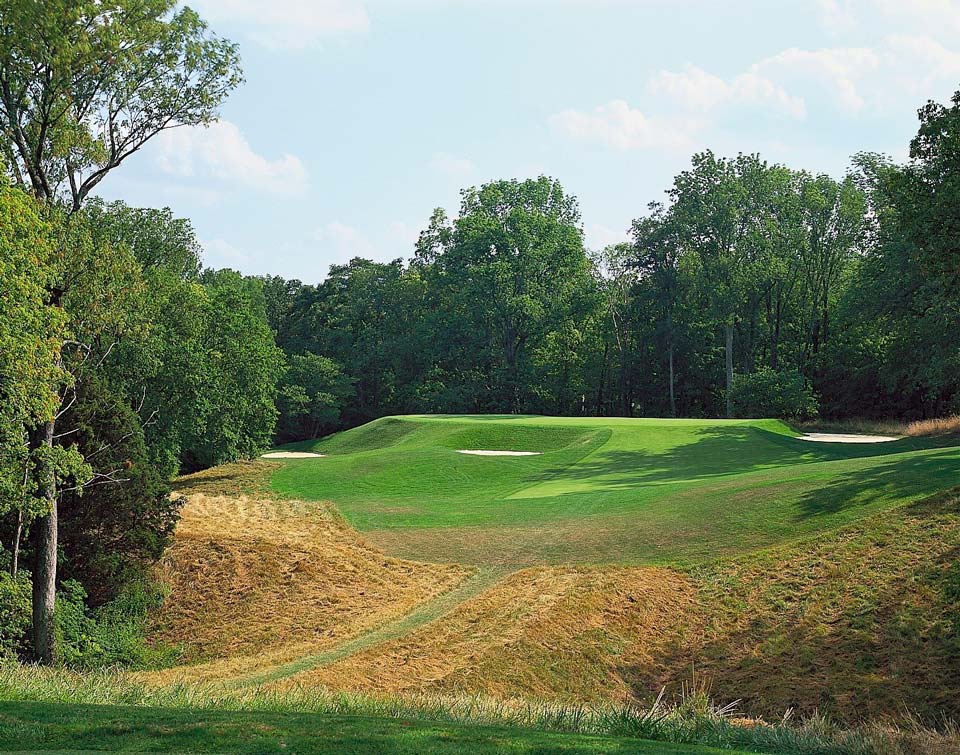
Indian Hill, Ohio Seth Raynor, 1921
This low-key 1926 Seth Raynor creation in suburban Cincinnati dishes out extremely deep bunkers and huge, squared-off greens on a property laced with valleys and ravines. The usual Macdonald/Raynor template holes are in place, from a Biarritz to a Redan, yet the two strongest par-3s might be the 5th and the 11th, modeled after the two one-shotters at St. Andrews.
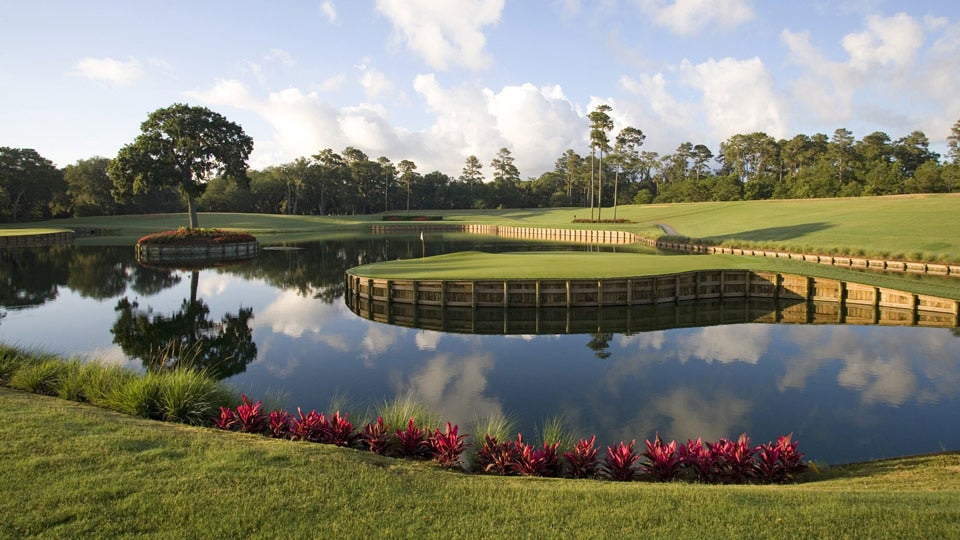
Ponte Vedra Beach, Fla., Pete Dye, 1981
Venue for the PGA Tour's Players Championship since 1982, Pete Dye's imaginatively-designed, variety-filled and occasionally terror-inducing track has crowned winners such as Tiger Woods, Phil Mickelson and Adam Scott.
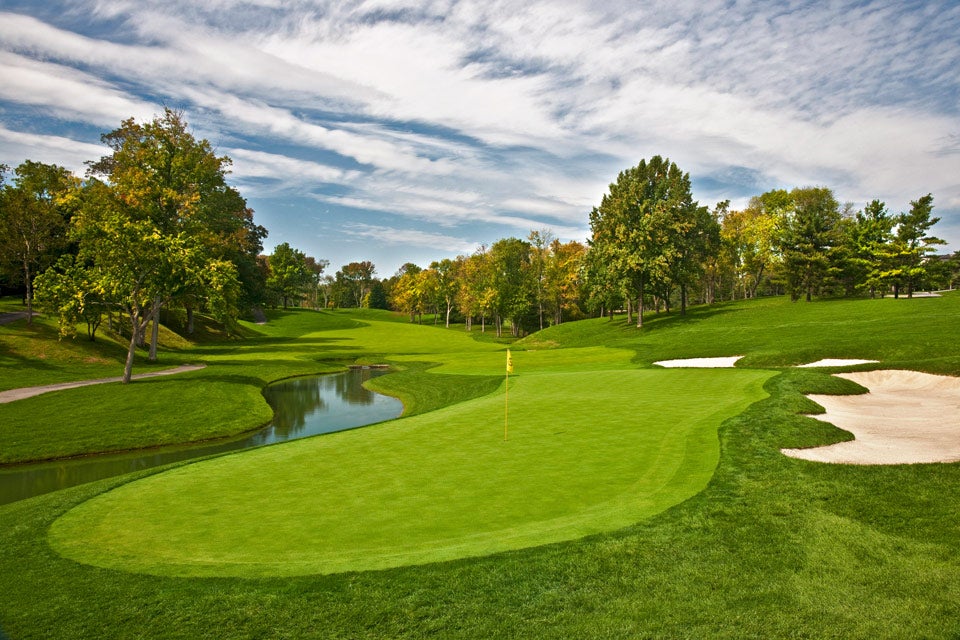
Dublin, Ohio, Jack Nicklaus/Desmond Muirhead, 1974
Conceived by Jack Nicklaus in 1966 to be his hometown equivalent of Bobby Jones' Augusta National, this 1974 collaboration with architect Desmond Muirhead was an instant smash, as much for its strategic design as for its flawless conditioning.
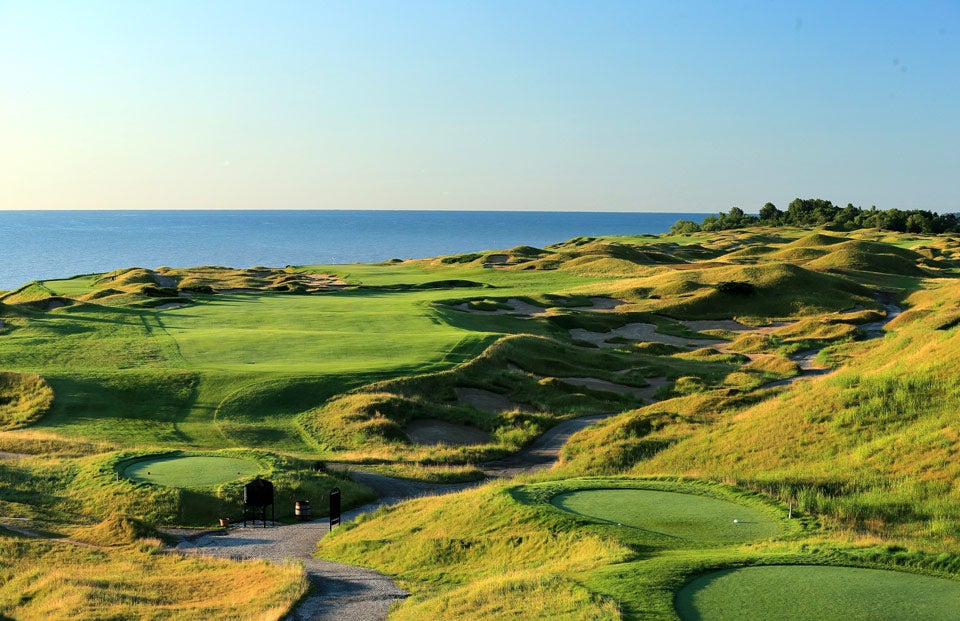
Kohler, Wisc., Pete Dye, 1998
This 1998 Pete Dye design on Lake Michigan was once a poker table-flat military training base in World War II. Eventually it became a site for illegal dumping of toxic waste. Dye and owner Herb Kohler engineered a mind-boggling cleanup, moved 3 million cubic yards of dirt, trucked in 7,000 loads of sand to create the hills and bunkers and relocated the bluffs farther back from the shore.
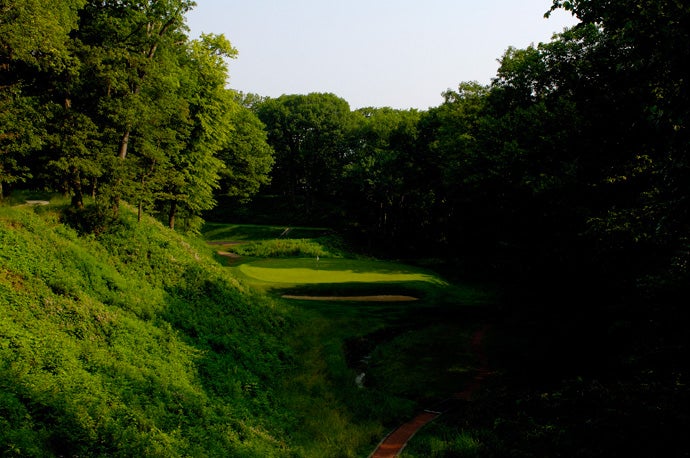
Lake Bluff, Ill., Seth Raynor, 1921
Steep ravines affect play throughout the back nine on this short but sweet 1921 Seth Raynor parkland design. Set into rolling terrain on Chicago's North Shore, alongside Lake Michigan, Shoreacres benefitted from a 2007 Tom Doak restoration.
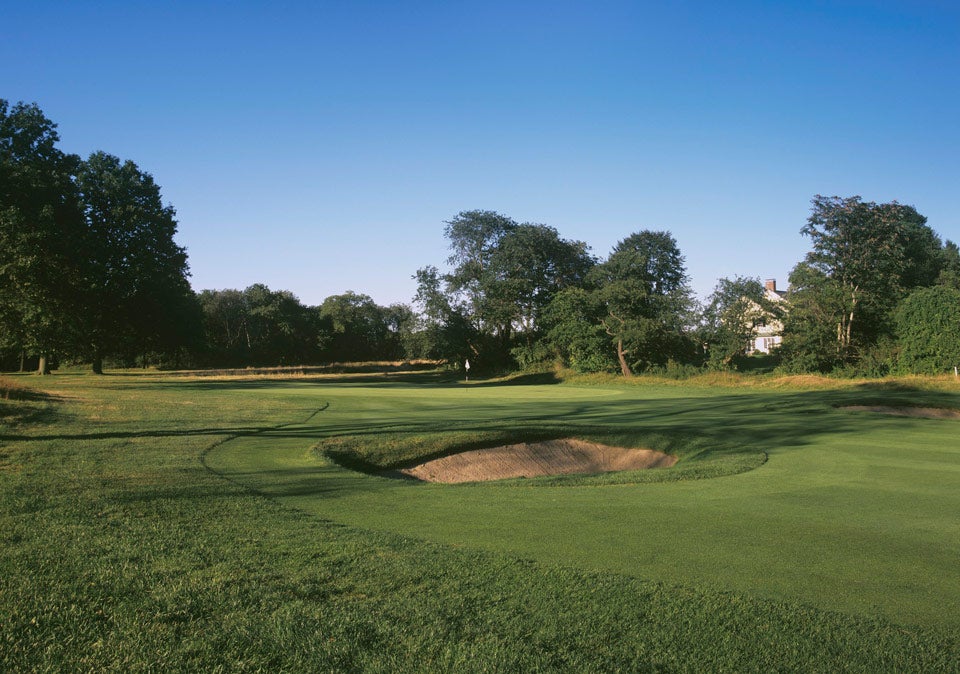
Garden City, N.Y., Devereux Emmet/Walter Travis, 1899/1906
This ancient Long Island layout dates to 1899. Devereux Emmet and Walter Travis most influenced the design, which today plays as firm and as fast as any British links, much as it did in the old days, with tall fescue and sea breezes constant companions.
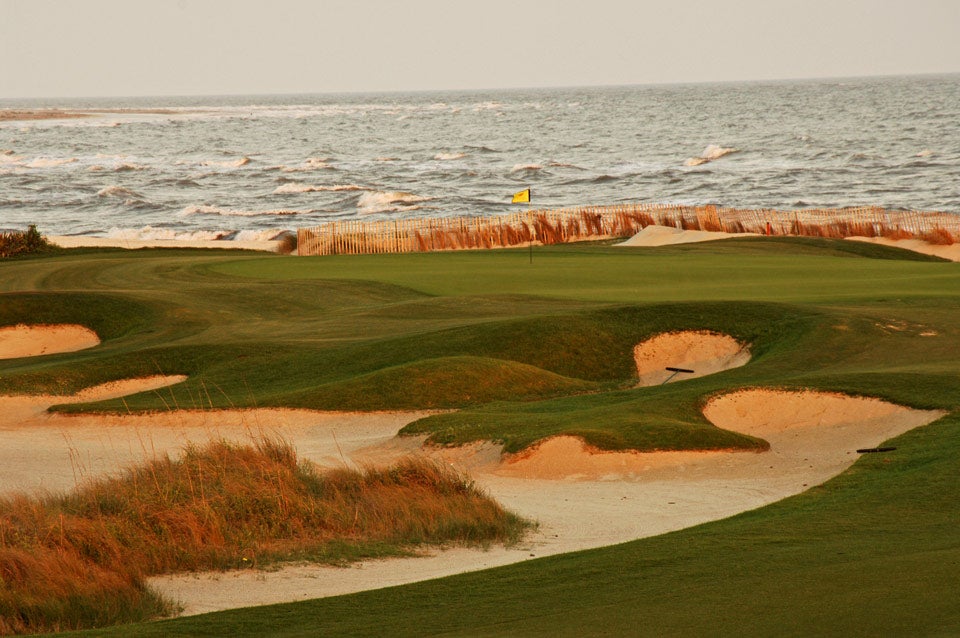
Kiawah Island, S.C., Pete Dye, 1991
A blend of tidal marsh carries, scrub-topped dunes and wildly undulating greens pair with 7,600 muscular yards to form a relentless mix of beauty and brawn. The Ocean Course remains among the toughest tests in the country.
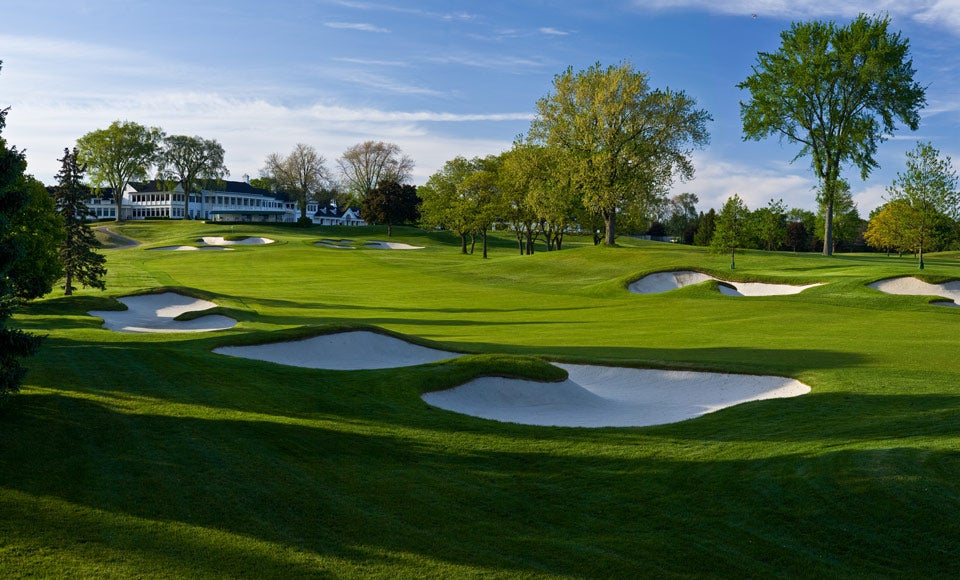
Bloomfield Hills, Mich., Donald Ross/Robert Trent Jones Sr., 1917/1950
Ben Hogan called this course a 'monster' in capturing the 1951 U.S. Open, thanks to a severe course setup and alterations by Robert Trent Jones Sr. The brilliant Donald Ross routing and beguiling green contouring has restored its status to 'great,' as opposed to 'hard.'
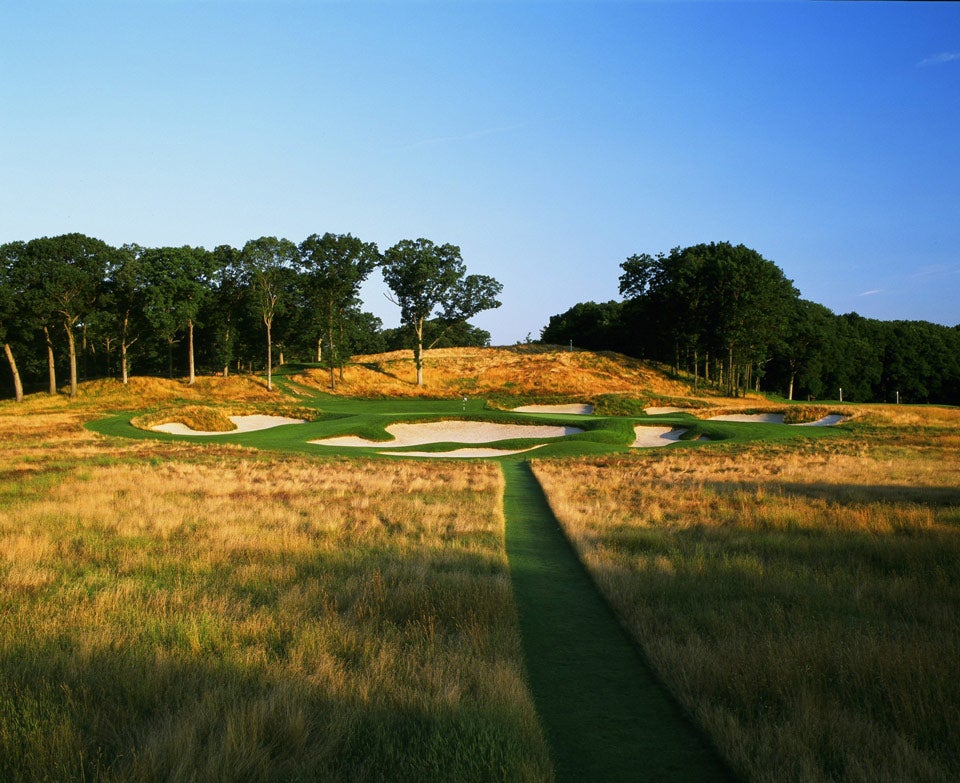
Farmingdale, N.Y., A.W. Tillinghast, 1936
In the education of a golfer, Bethpage Black is a bar exam. The Black scares golfers with a sign at the first tee: 'Warning: The Black Course is an extremely difficult course which we recommend only for highly skilled golfers.'
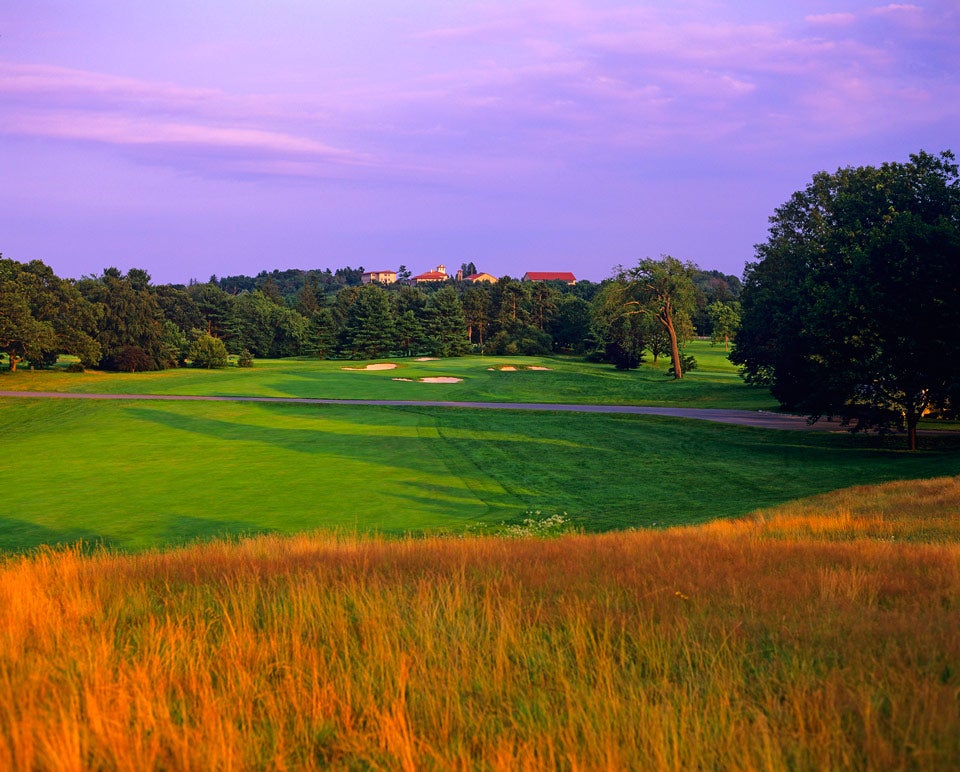
Brookline, Mass., Willie Campbell/Rees Jones, 1895/1985
A Boston Brahmin society haunt for more than 100 years, this tree-lined track has played host to three U.S. Opens and the 1999 Ryder Cup. Its tournament course is a composite layout, comprised of 18 of the club's 27 holes.
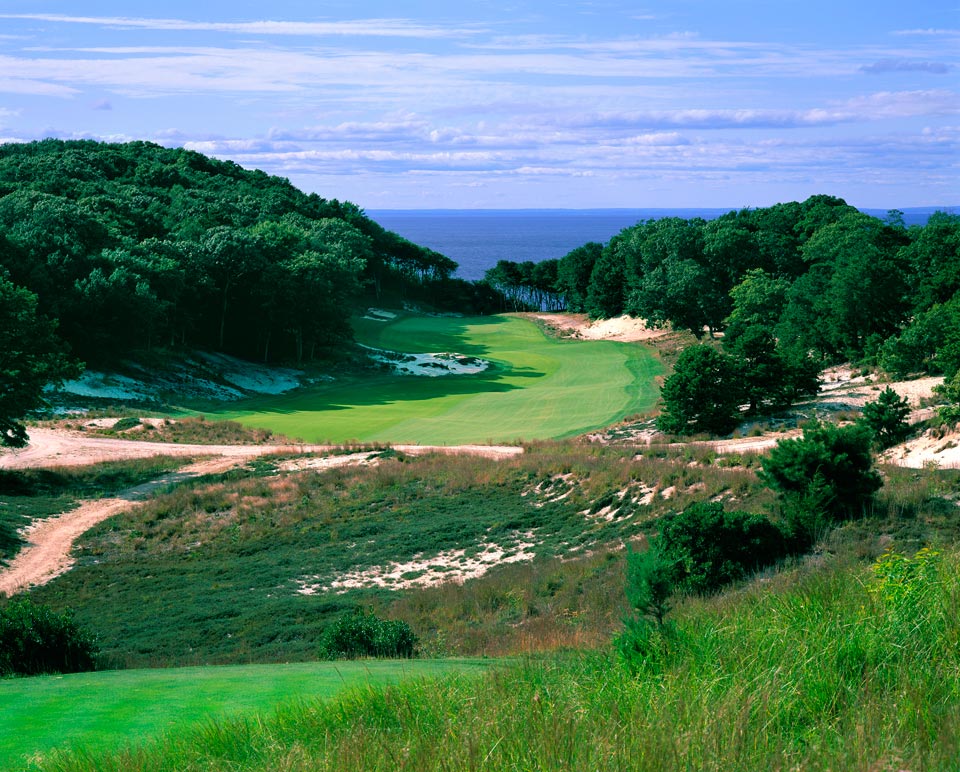
Baiting Hollow, N.Y., Bill Coore/Ben Crenshaw, 2003
Tree-dotted dunes, open meadows and bluff-top views of Long Island Sound highlight play at this understated 2003 Bill Coore-Ben Crenshaw design. The fact that it's Phil Mickelson's favorite modern course is further enticement.
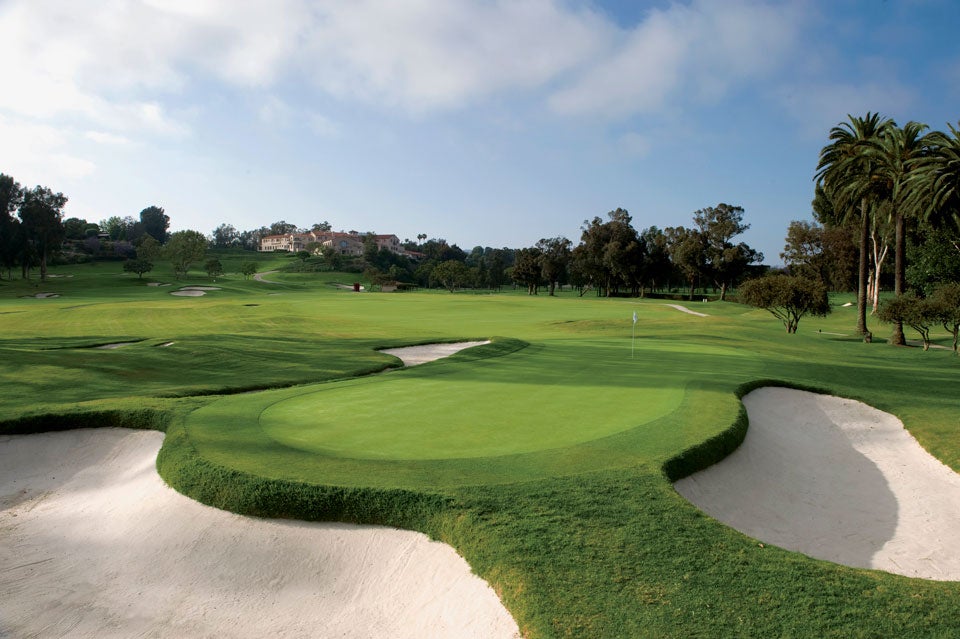
Pacific Palisades, Calif., George Thomas/Billy Bell Sr.
Architect George C. Thomas Jr. took strategy and bunker configuration to new heights in the 1920s, notably at eucalyptus-lined Riviera in suburban L.A. As proof of his magical skills, look no further than the 311-yard, par-4 10th.
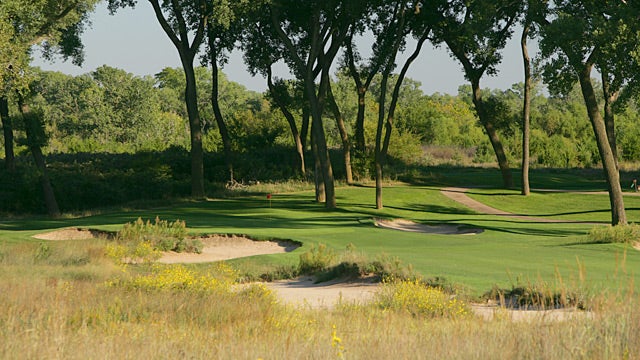
Hutchinson, Kan., Perry Maxwell/Press Maxwell, 1937/1957
After weeks of tromping around the yucca-choked sandhills of Hutchinson, architect Perry Maxwell pronounced, "There are 118 good golf holes here. All I have to do is eliminate 100 of them." He eliminated 109 of them. Only nine holes were built in 1937 and Maxwell's son Press added the other nine 20 years later.
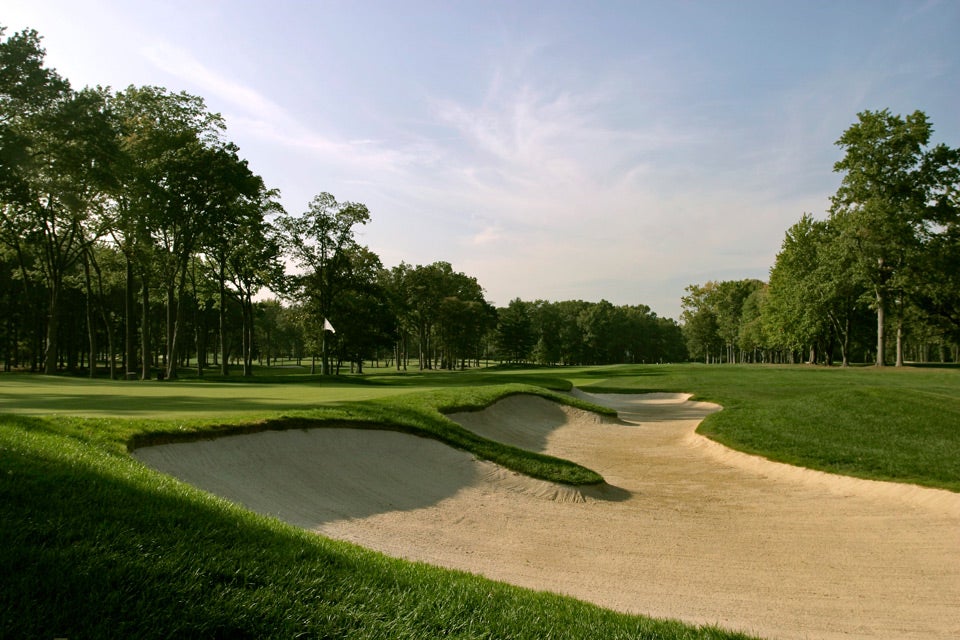
Mamaroneck, N.Y., A.W. Tillinghast, 1923
Frighteningly contoured, pear-shaped greens, cavernous bunkers and a procession of rugged par-4s define the trouble here. On a 'difficulty' scale of 1 to 10, Jack Nicklaus once rated this a 12.
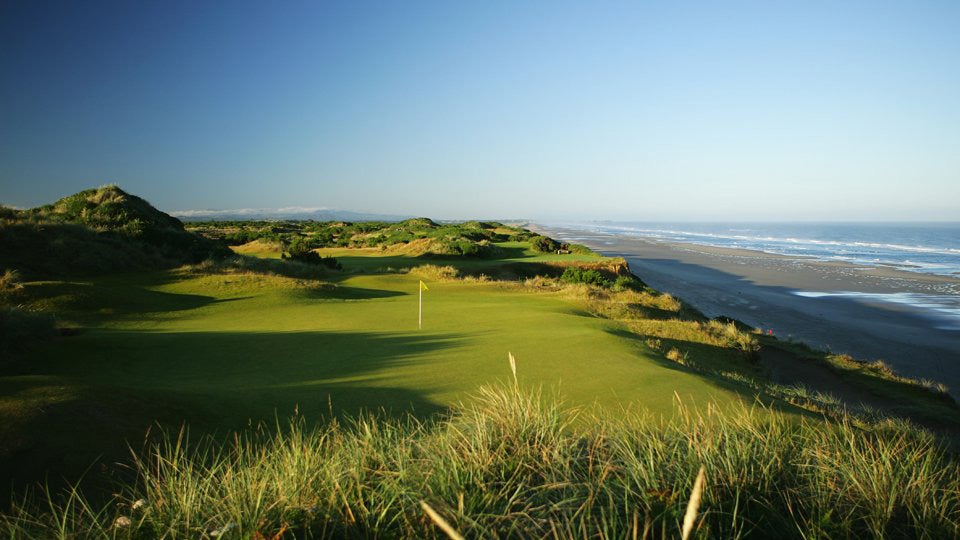
Bandon, Ore., Tom Doak, 2001
This 2001 Tom Doak creation checks in as one of the greatest modern designs in the world. It fits so majestically into its billowing terrain, it looks like it's been there 100 years.
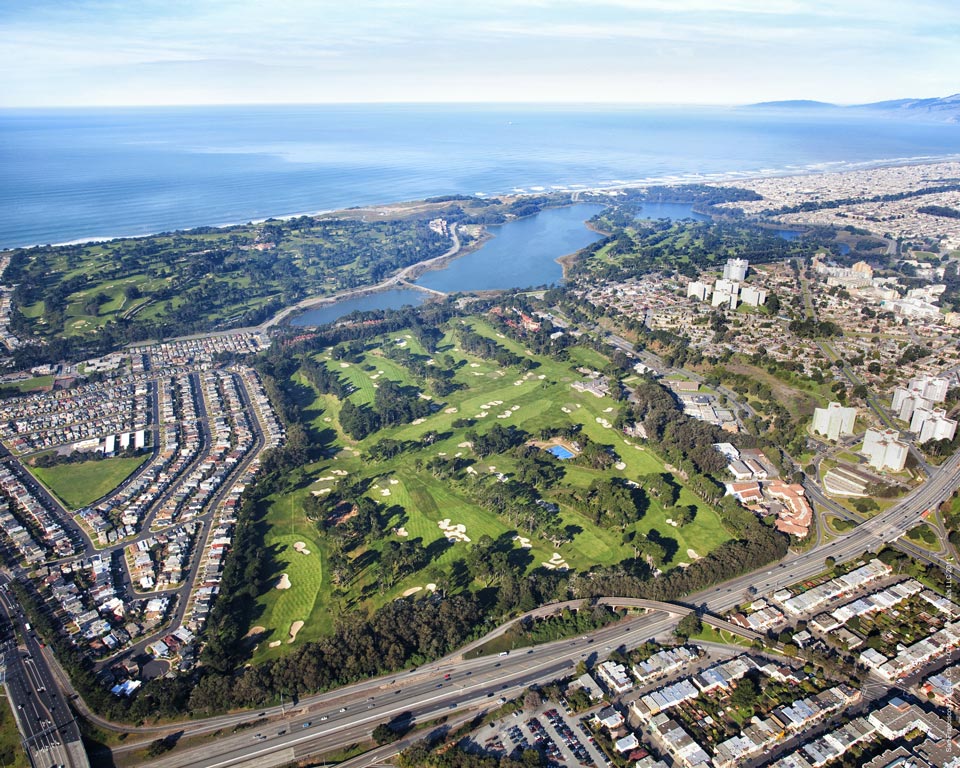
San Francisco, Calif., A.W. Tillinghast, 1918
A.W. Tillinghast may have crafted his most gorgeous collection of bunkers at this low-key Bay Area hideaway that avoids publicity as steadfastly as its neighbor the Olympic Club embraces it. The highlight is the drop-shot par-3 7th, Tilly's favorite hole that he ever designed.
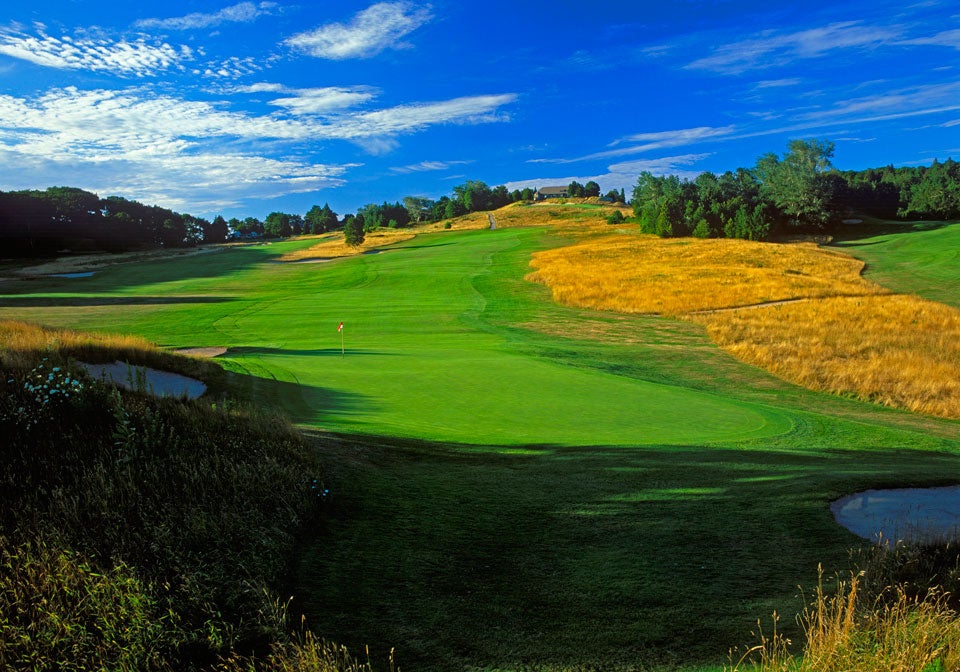
Frankfort, Mich., Alister Mackenzie/Perry Maxwell, 1932
Due to its remote location in northwest Michigan, Crystal Downs was long overlooked and underrated. This 1932 Alister MacKenzie/Perry Maxwell collaboration became better known after Tom Doak introduced it to Ben Crenshaw in the 1980s and word began to spread.
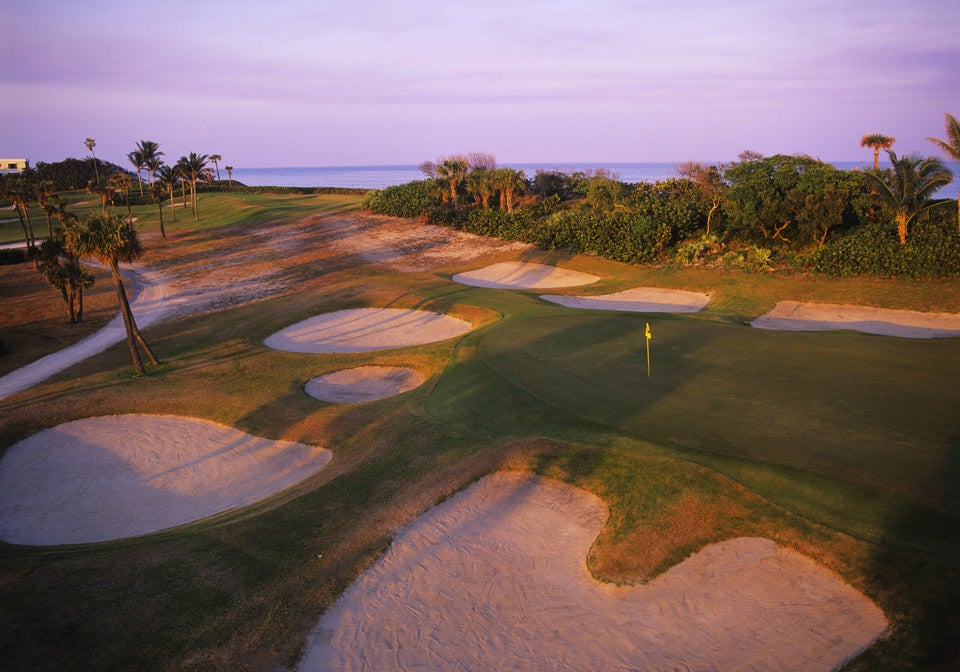
Juno Beach, Fla., Donald Ross, 1929
This posh coastal retreat designed by Donald Ross challenges with palms, sea grape bushes, ocean breezes and a varied routing that encompasses two dune ridges.

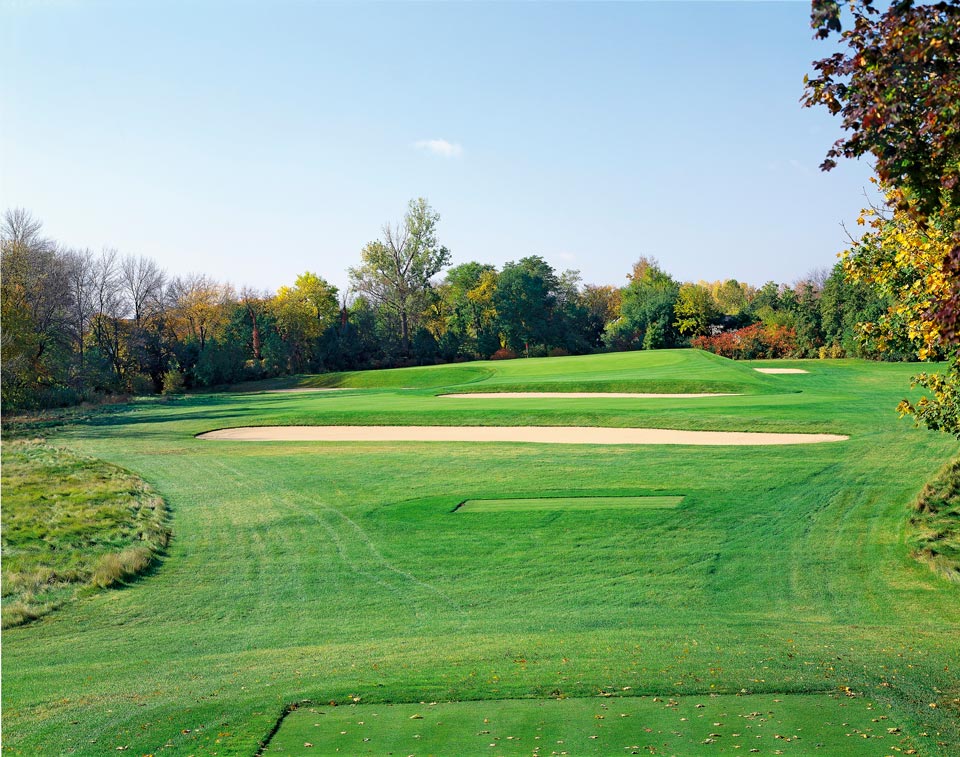
Wheaton, Ill., C.B Macdonald/Seth Raynor, 1895/1923
One of the five founding members of the United States Golf Association in 1894, Chicago Golf, as it's known, was also site of the nation's first 18-hole golf course, as well as the first to host the U.S. Open outside of the Northeast. Seth Raynor retooled his mentor C.B. Macdonald's course in 1923 and not much has changed since.
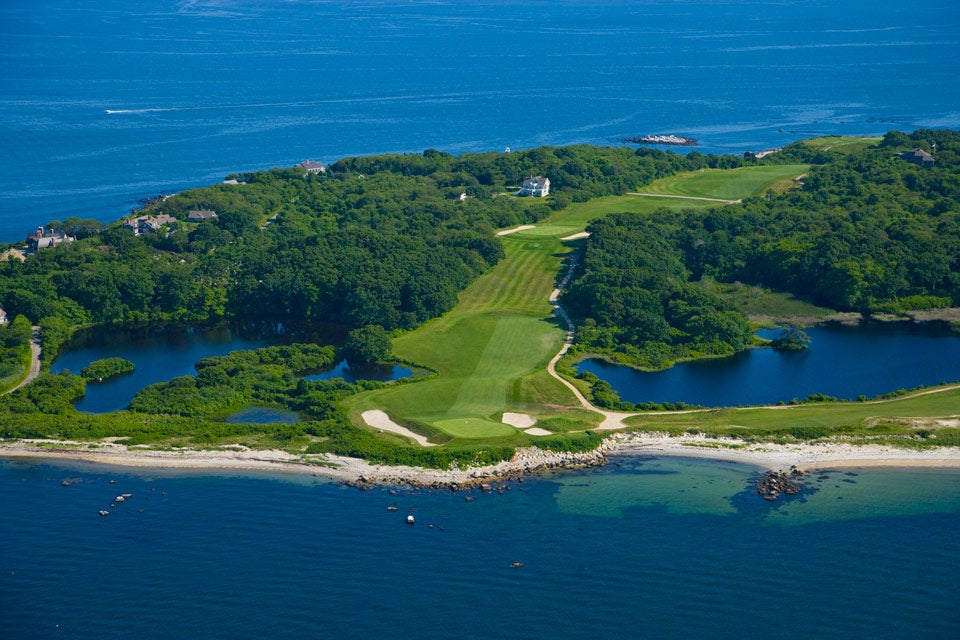
Fishers Island, N.Y., Seth Raynor, 1926
Accessible only by ferry, this exclusive retreat off Connecticut is populated by the oldest of the Old Money crowd, many of whom still enjoy hoofing it. Why wouldn't they, given the classic Seth Raynor design, the delightful tumbling terrain and the spectacular views of Long Island Sound.
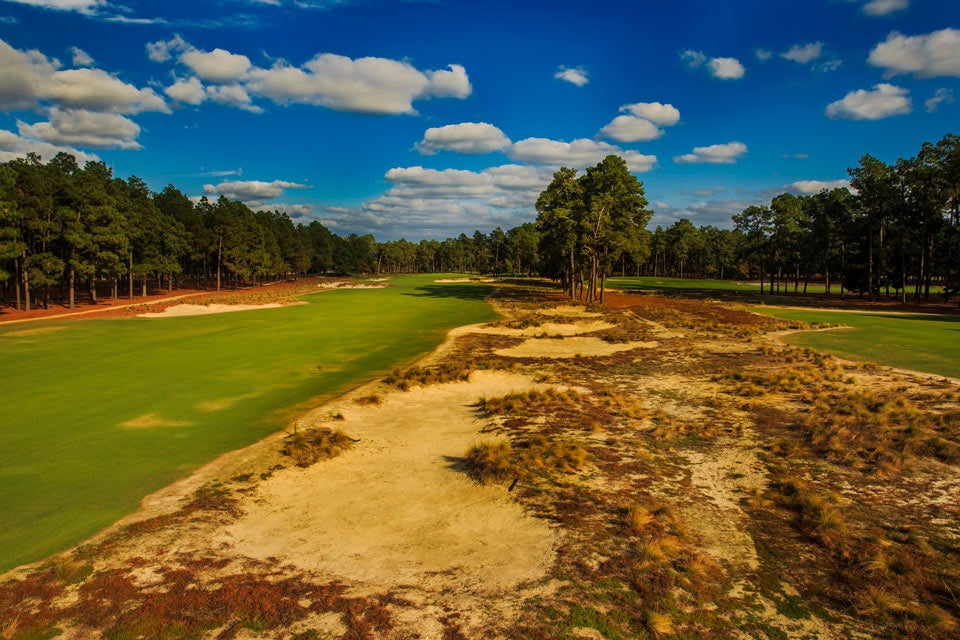
Pinehurst, N.C, Donald Ross, 1907
Donald Ross' 108-year-old chef d'oeuvre rolls gently and spaciously through tall Longleaf pines in the Carolina Sandhills, with holes culminating in the legendary "inverted saucer" greens that have confounded the game's very best since they were first grassed in 1935.

Mullen, Neb., Bill Coore/Ben Crenshaw, 1994
Bill Coore and Ben Crenshaw had to move only teaspoons of dirt to construct the most natural, hew-to-the-land layout built in the past 50 years. Rolling, sandy terrain, rippled fairways crafted to accommodate ever-present winds, wavy prairie grasses and gigantic 'blow-out' bunkers create the sensation of being seaside in the middle of land-locked Nebraska.
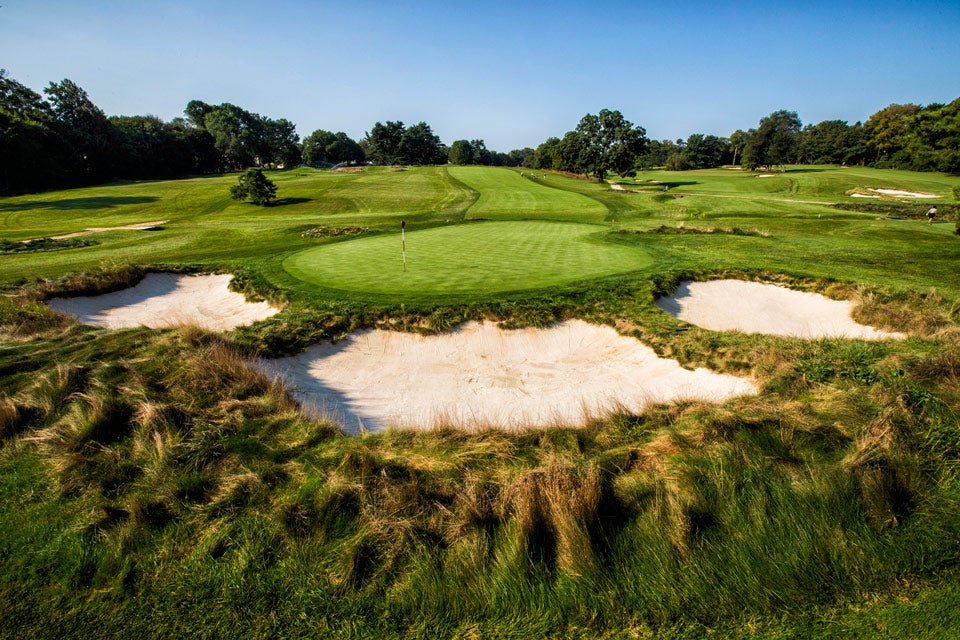
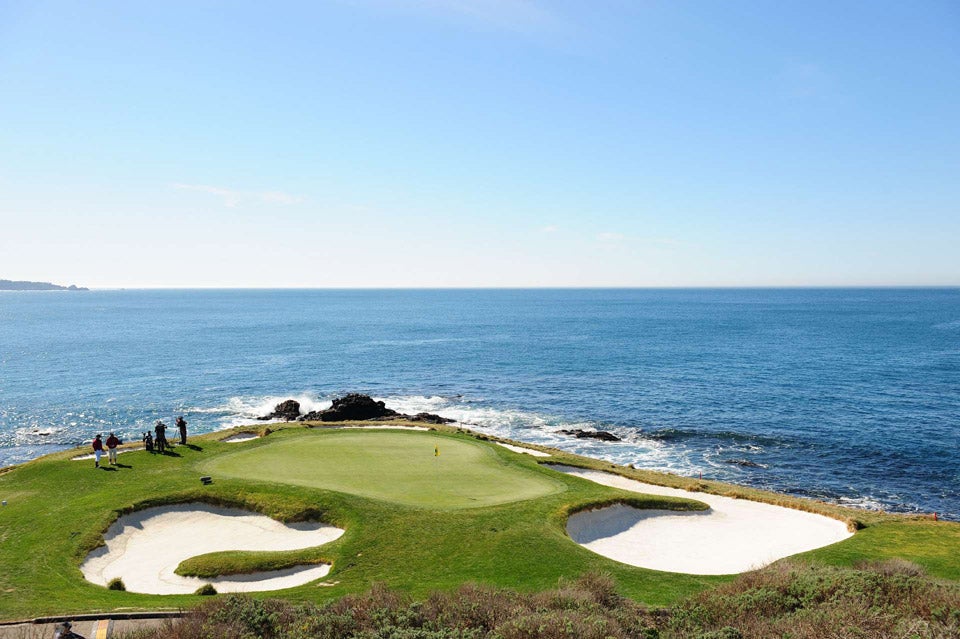
Pebble Beach, Calif., Jack Neville/Douglas Grant, 1919
The first great American public seaside course, Pebble benefited from an ingenious Figure-8 design that brought the player right to ocean's edge, then away into the woods, then back again.
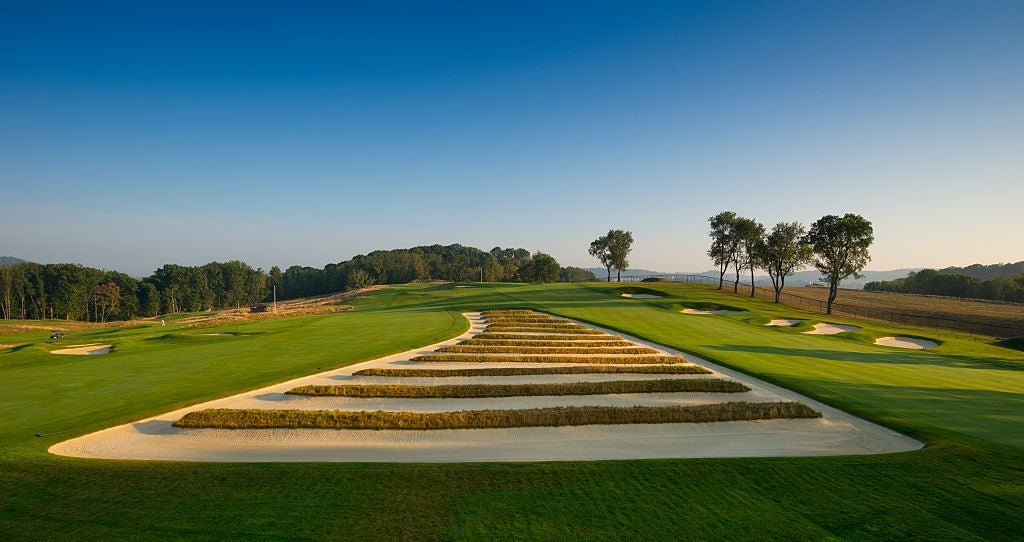
Oakmont, Pa., Henry Fownes, 1903
No course on earth plays so much viciously harder than it looks than Oakmont. No trees, no water, few forced carries and huge greens normally add up to a sea of red numbers for the game's best, but not here.
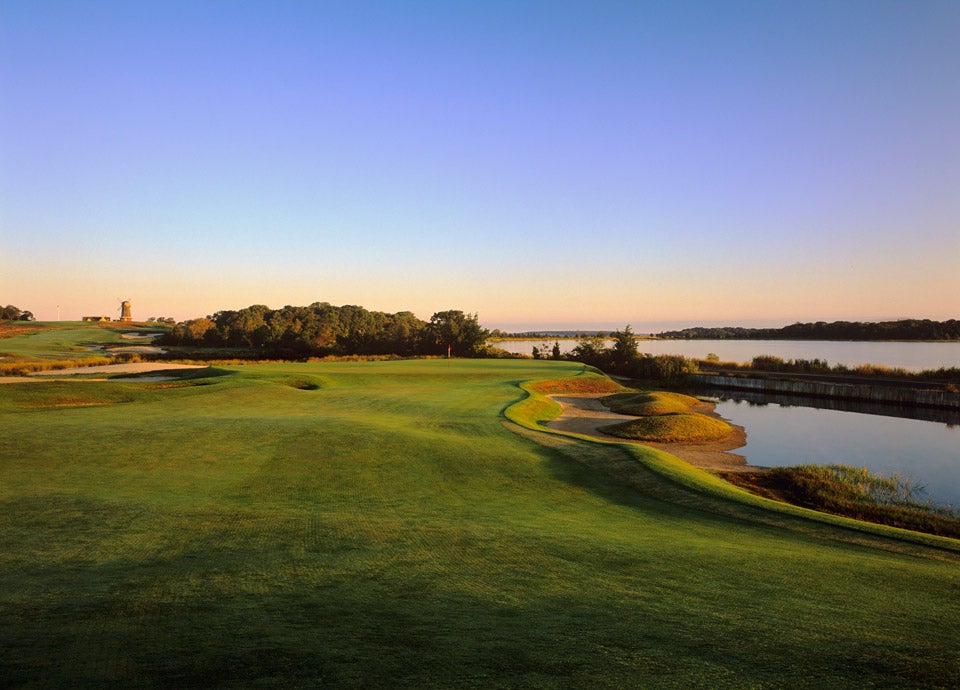
Southampton, N.Y., C.B. Macdonald, 1911
NGLA, or 'National,' as it's known, offers the greatest variety of strategic holes and greens in golf. There are blind shots, links-style holes that feature firm, fast-running fairways, forced carries and a remarkable mix of short and long holes.
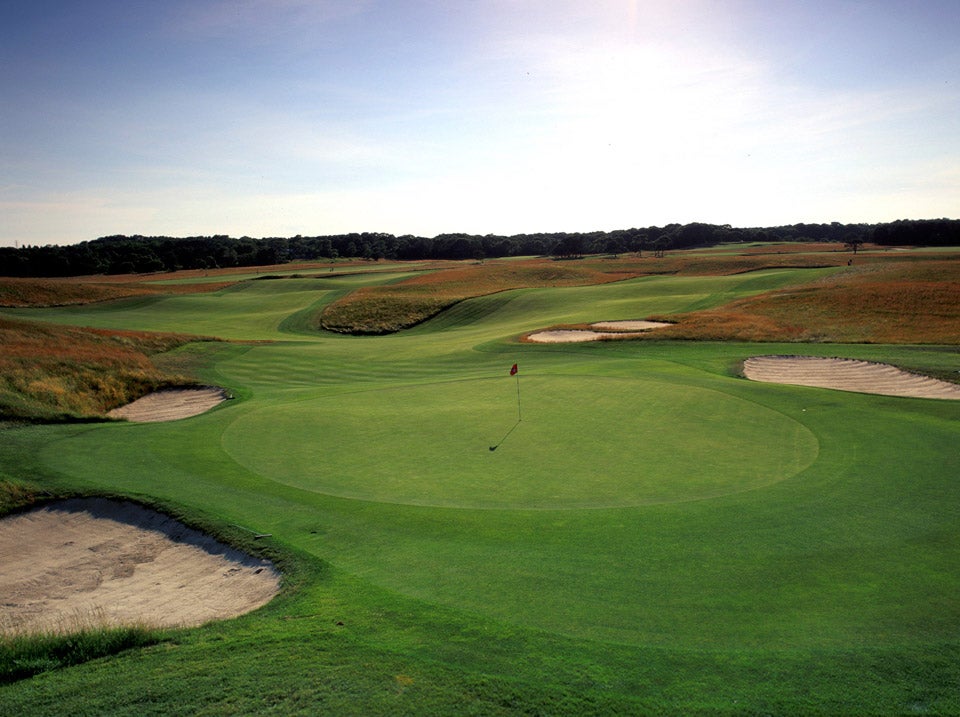
Southampton, N.Y., William Flynn, 1931
Venue for four U.S. Opens since 1986, with a fifth on the way in 2018, Shinnecock boasts a William Flynn design that combines parkland bunkering and greens with a seaside sensibility.
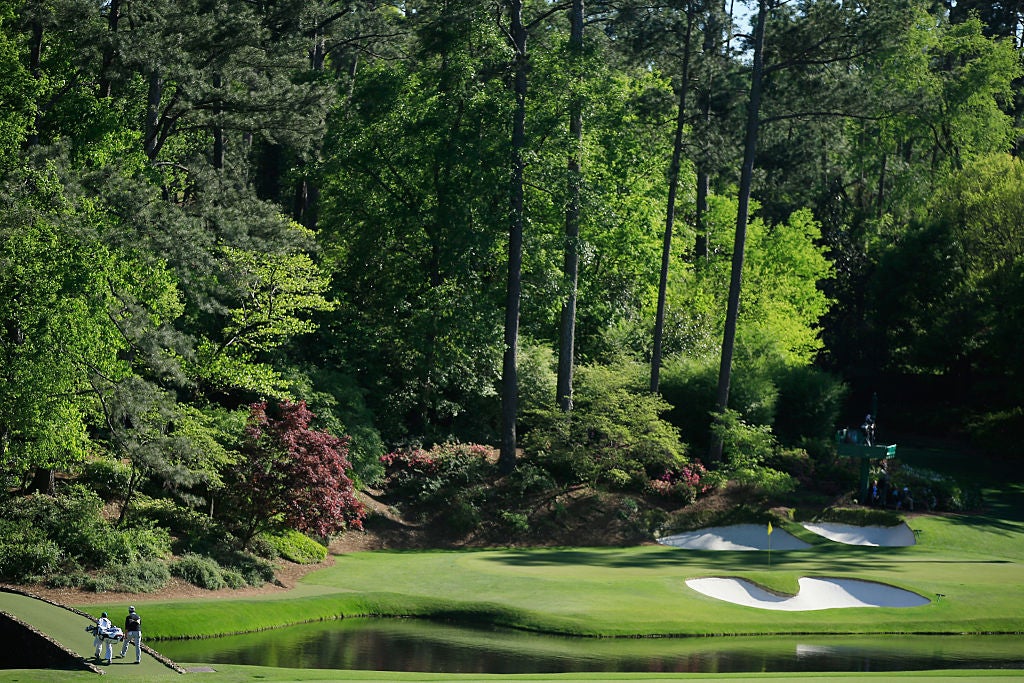
Augusta, Ga., Alister MacKenzie/Bobby Jones, 1933
Nearly every hole at Augusta National provides a safe route to the green and also a riskier one. Combine staggering beauty and Masters tradition and it's easy to see why Augusta National is so revered.
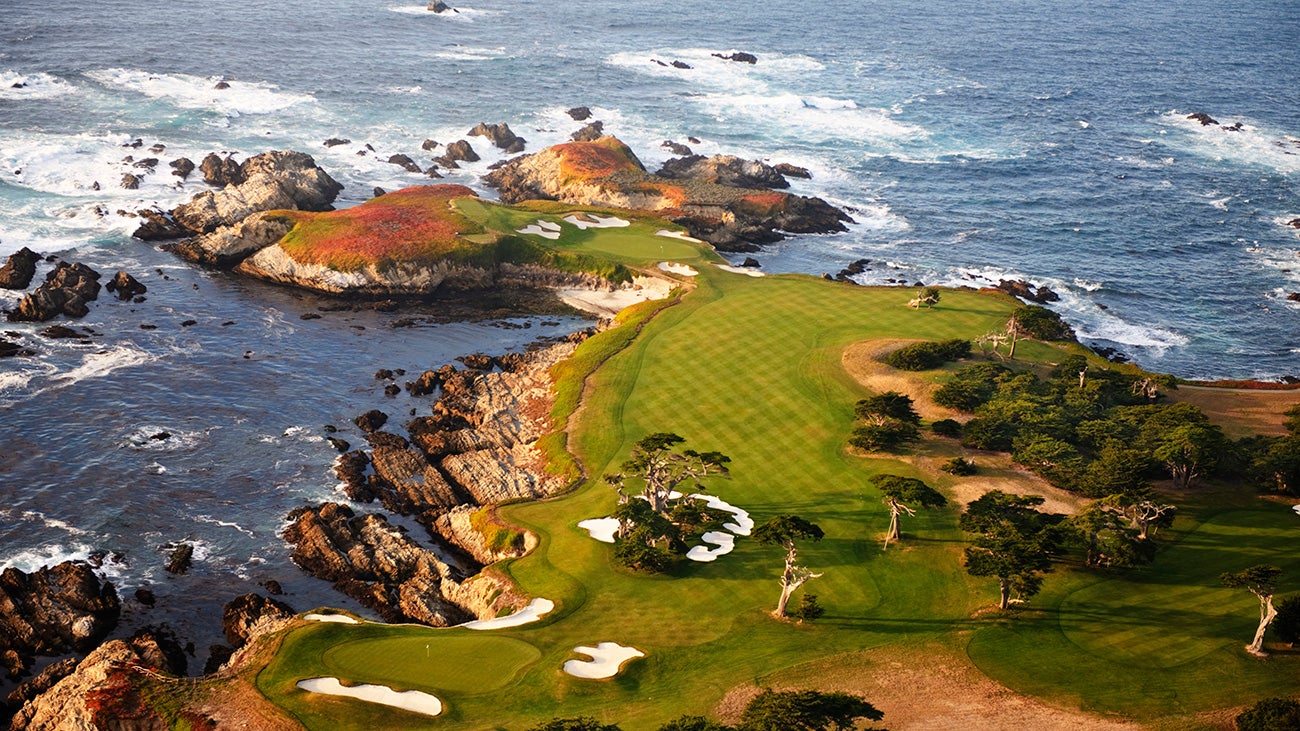
Pebble Beach, Calif., Alister MacKenzie, 1928
As Alister MacKenzie himself must have felt about his 1928 design, it's almost inconceivable that land this stunning was made available for golf. For the lucky few who have access to super-exclusive Cypress, they're privileged to enjoy the best walk in the sport.
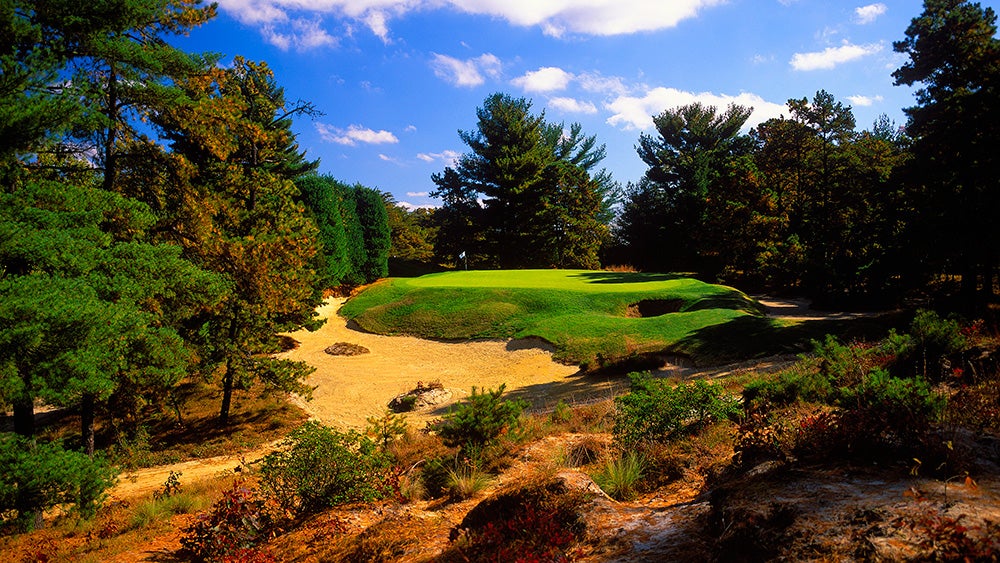
Pine Valley, N.J., George Crump/H.S. Colt, 1918
There's no secret as to why Pine Valley has been ranked No. 1 in the World by GOLF Magazine since 1985. Uniquely beautiful and brutal, 99-year-old Pine Valley serves up multiple forced carries on holes that hopscotch from one island of turf to the next.

